Places the U.S. Government Warns Not to Travel Right Now
You may want to reconsider traveling to these countries right now.
Do Not Travel to These Countries

Getty Images
Crime, civil unrest and terrorism are common risk factors for countries that end up on the State Department's "Do Not Travel" advisory list.
In 2024, tourism across the globe is “well on track” to return to pre-pandemic levels, according to projections by UN Tourism.
Global conflicts and natural disasters , ranging from a series of coups across Africa to catastrophic earthquakes in the Middle East affected international travel patterns throughout 2023. Still, international tourist arrivals reached 87% of pre-pandemic levels in 2023, according to estimates by UN Tourism .
In January 2024 alone, about 4.6 million U.S. citizens left the country for international destinations, 17% higher than the same month in 2019, according to the International Trade Administration . But some destinations warrant more caution than others.
On Oct. 19, 2023, following the outbreak of war between Israel and Gaza and flaring tensions in the region, the U.S. State Department issued a worldwide caution advisory due to “increased tensions in various locations around the world, the potential for terrorist attacks, demonstrations or violent actions against U.S. citizens and interests.” Prior to this update, the most recent worldwide caution advisory was issued in 2022 after a U.S. strike killed Ayman al-Zawahiri, Osama bin Laden’s successor as leader of Al Qaeda, causing “a higher potential for anti-American violence.” The worldwide caution advisory remains in effect.
The U.S. State Department also issues individual travel advisory levels for more than 200 countries globally, continually updating them based on a variety of risk indicators such as health, terrorism and civil unrest. Travel advisory levels range from Level 1, which means exercise normal precautions, to Level 4, which means do not travel there.
About 10% of countries – 19 total – have a Level 4: “Do Not Travel” advisory as of Mar. 4. In Level 4 countries, the U.S. government may have “very limited ability” to step in should travelers’ safety or security be at risk, according to the State Department. Crime, civil unrest, kidnapping and terrorism are common risk factors associated with Level 4 countries.
So far in 2024, the State Department made changes to the existing Level 4 advisories for Myanmar, Iran and Gaza, and moved Niger and Lebanon off of the Level 4 list.
Places With a Level 4 Travel Advisory
These are the primary areas the U.S. government says not to travel to right now, in alphabetical order:
Jump to Place: Afghanistan Belarus Burkina Faso Central African Republic Myanmar (formerly Burma) Gaza Haiti Iran Iraq Libya Mali Mexico North Korea (Democratic People's Republic of Korea) Russia Somalia South Sudan Sudan Syria Ukraine Venezuela Yemen
Afghanistan: The Central Asian country is wrestling with “terrorism, risk of wrongful detention, kidnapping and crime,” according to the State Department. U.S. citizens are specifically at risk for wrongful detention and kidnapping. In 2022, the government reinstituted public floggings and executions, and women’s rights are disappearing under Taliban control. The U.S. Embassy in Kabul halted operations in August 2021. Since the Taliban took control , many forms of international aid have been halted . Meanwhile, in 2023, some of the year’s deadliest earthquakes killed more than 2,400 in Afghanistan while the country continues to face a years-long extreme drought.
Belarus: Belarus, which shares a western border with Russia and a southern border with Ukraine, has been flagged for “Belarusian authorities’ continued facilitation of Russia’s war against Ukraine, the buildup of Russian military forces in Belarus, the arbitrary enforcement of local laws, the potential of civil unrest, the risk of detention, and the Embassy’s limited ability to assist U.S. citizens residing in or traveling to Belarus.” The U.S. Embassy in Minsk halted operations in February 2022.
Burkina Faso: Terrorism, crime and kidnapping are plaguing this West African nation. Terrorist attacks may target hotels, restaurants and schools with little to no warning, and the East and Sahel regions of the country are under a state of emergency. In late November 2023, hundreds died in clashes between state security forces and rebels near the country’s border with Mali. In June, more than 2 million people in Burkina Faso were displaced due to “violence linked to al-Qaida and the Islamic State group.”
Central African Republic: While there have not been specific incidents of U.S. citizens targeted with violence or crime, violent crime and sudden closure of roads and borders is common. The advisory states that “Embassy Bangui’s limited capacity to provide support to U.S. citizens, crime, civil unrest, and kidnapping” is a factor in its assessment. Recent data from UNICEF suggests the country has the worst drinking water accessibility of all countries in 2022.
Myanmar (Formerly Burma): Armed conflict and civil unrest are the primary reasons to not travel to this Southeast Asian country, which experienced a military coup in early 2021. Limited health care resources, wrongful detentions and “areas with land mines and unexploded ordnance” are also listed as risk factors. After Ukraine and Israel, Myanmar had the highest conflict-related death toll in 2023.
Gaza : Hamas, a foreign terrorist organization as designated by the State Department, controls much of the Gaza Strip, which shares borders with both Israel and Egypt. On Oct. 7, 2023, Hamas fighters broke across the border into Israel, killing hundreds of civilians and soldiers in a brazen attack that stunned Israelis. On Oct. 10, Israel hit the Gaza Strip with “the fiercest air strikes in its 75-year conflict” according to Reuters . The conflict has since escalated into war between Israel and Hamas, with regular Israeli airstrikes leading to extensive civilian casualties in Gaza. As of mid-December, nearly 85% of Gaza’s population were displaced from their homes, according to UN estimates . The region continues to face shortages of food , water, electricity and medical supplies , with conditions deemed “far beyond a humanitarian crisis.” The State Department warns of terrorism and armed conflict within Gaza’s borders.
Haiti: In July 2023, the Department of State ordered all non-emergency U.S. government personnel and family members to leave the U.S. Embassy in Port-au-Prince in response to the increased risk of kidnapping and violent crime in the country , as well as armed conflict between gangs and police. The travel advisory states that cases of kidnapping “often involve ransom negotiations and U.S. citizen victims have been physically harmed during kidnappings.” The travel advisory also states that “U.S. citizens in Haiti should depart Haiti as soon as possible” given “the current security situation and infrastructure challenges.” A series of gang attacks in late September 2023 caused thousands to flee their homes, and many aid groups have been forced to cut or suspend operations amid escalating violence in recent months.
Iran: Terrorism, kidnapping and civil unrest are risk factors for all travelers to Iran, while U.S. citizens are specifically at risk for “arbitrary arrest.” U.S.-Iranian nationals such as students, journalists and business travelers have been arrested on charges of espionage and threatening national security. Executions in Iran rose sharply between 2021 and 2022, bringing the country’s total to nearly 580 people over the year, according to a report by Amnesty International released in May 2023.
Iraq: The State Department cites “terrorism, kidnapping, armed conflict [and] civil unrest” as cause for the country’s Level 4 distinction. Iraq’s northern borders, and its border with Syria, are especially dangerous. Since the escalation of conflict in neighboring Israel in October, there has been an increase in attacks against Iraqi military bases, which host U.S. troops and other international forces. In October 2023, non-emergency U.S. government personnel and eligible family members were ordered to leave the U.S. embassy in Baghdad.
Libya: Following the end of its dictatorship over a decade ago, Libya has been wrought with internal conflict between armed groups in the East and West. Armed conflict, civil unrest, crime, kidnapping and terrorism are all risk factors. U.S. citizens have been targets of kidnapping for ransom, with terrorists targeting hotels and airports frequented by Westerners. The U.S. Embassy in Tripoli halted operations in 2014. In mid-September 2023, floods, which some say were intensified by climate change , killed thousands in eastern Libya. Clashes between armed factions escalated across the country in the latter half of 2023, including in the capital city of Tripoli and in Benghazi.
Mali: After experiencing military coups in 2020 and 2021, crime, terrorism and kidnapping are all prevalent threats in this West African landlocked nation. In July 2022, non-emergency U.S. government employees and their families were ordered to leave the country due to higher risk of terrorist activity. A U.N. report in August 2023 said that military groups in the country, including both Mali security forces and possibly Russian Wagner mercenaries, were spreading terror through the use of violence against women and human rights abuses. Democratic elections were supposed to occur in February 2024, but Mali’s military junta postponed the plans indefinitely. In December, the U.N. officially ended a decade-long peacekeeping presence in the country, which had been among the agency’s deadliest missions, with hundreds of the mission personnel killed since 2013.
Mexico: Each state in Mexico is assessed separately for travel advisory levels. Six of the 32 states in Mexico are designated as Level 4: Colima, Guerrero, Michoacan, Sinaloa, Tamaulipas and Zacatecas. Crime and kidnapping are listed as the primary risk factors throughout the country. Nearly 112,000 people were missing across the country as of October, a number the U.N. has called “alarming.”
North Korea (Democratic People’s Republic of Korea): U.S. passports are not valid for travel “to, in, or through” this country, home to one of the world's longest-running dynastic dictatorships. The travel advisory states that the Level 4 distinction is due to “the continuing serious risk of arrest and long-term detention of U.S. nationals.” In July 2023, a U.S. soldier fled across the border into North Korea, where he is believed to be in North Korean custody, the first American detained in the North in nearly five years. He was returned to U.S. custody in September 2023.
Russia: The travel advisory for Russia cites its invasion of Ukraine , harassment of U.S. citizens by Russian government officials and arbitrary law enforcement as a few of the reasons for the Level 4 designation. Chechnya and Mount Elbrus are specifically listed as Level 4 regions. Terrorism, civil unrest, health, kidnapping and wrongful detention are all noted as risks.

Russia Invades Ukraine: A Timeline

Somalia: A severe drought resulting from five failed rainy seasons in a row killed 43,000 people in 2022, and caused a famine amid conflict with Islamist insurgents . Violent crime is common throughout Somalia , pirates frequent its coast off the Horn of Africa, and medical facilities, where they exist, have limited capacity. Crime, terrorism, civil unrest, health and kidnapping are all risk factors. In January 2024, some passengers aboard a U.N.-contracted helicopter were taken hostage by al-Shabaab militants after the vehicle crashed in central Somalia.
South Sudan: Crime, kidnapping and armed conflict are the primary risk factors for South Sudan, which separated from Sudan in 2011, making it the world’s newest country . Weapons are readily available, and travelers have been victims of sexual assault and armed robbery.
Sudan: The U.S. evacuated its embassy in Khartoum in April 2023, and the country closed its airspace due to the ongoing conflict in the country, only permitting humanitarian aid and evacuation efforts. Fighting has escalated in the region between two warring generals seeking to gain control after a military coup in 2021 ousted the country’s prime minister. Civil unrest is the primary risk factor for Africa’s third largest country by area. Crime, terrorism, kidnapping and armed conflict are also noted. The International Criminal Court began investigating alleged war crimes and violence against African ethnic groups in the country in 2023. Millions have fled their homes due to conflict, and the U.N. has said its efforts to provide aid have been hindered by a lack of support, safety and resources. As recently as December 2023, the United Nations warned of catastrophic famine , with millions of children at-risk for malnutrition .
Syria: The advisory states that “No part of Syria is safe from violence,” with terrorism, civil unrest, kidnapping, armed conflict and risk of unjust detention all potential risk factors. U.S. citizens are often a target for kidnappings and detention. The U.S. Embassy in Damascus halted operations in 2012. Fighting in neighboring Israel has escalated since October, and the conflict has spilled over into Syria, where the U.S. has carried out air strikes following drone and rocket attacks against American troops in Syria and Iraq, triggered by the Israel-Hamas war.
Ukraine: Russian setbacks in their invasion of Ukraine buoyed hopes in Ukraine in 2023. However, Ukraine is a Level 4 country due to Russia’s invasion, with crime and civil unrest also noted as risk factors. The country’s forces shot down two Russian fighter jets on Christmas Eve 2023, in a move Ukrainian President Volodymyr Zelenskyy said “sets the right mood for the entire year ahead.”
Venezuela: Human rights abuses and lack of health care plague this South American nation, which has been in a political crisis since 2014. In 2019, diplomatic personnel were withdrawn from the U.S. Embassy in Caracas. Threats in the country include crime, civil unrest, kidnapping, wrongful detention and poor health infrastructure.
Yemen: Six of the nine risk factors defined by the State Department – terrorism, civil unrest, health risks, kidnapping, armed conflict and landmines – are all present in Yemen. Despite private companies offering tourist visits to the Yemeni island of Socotra, the U.S. government argues those arranging such visits “are putting tourists in danger.” Civil war and cholera are also both present throughout the country. The U.S. Embassy in Sanaa halted operations in 2015. The country has experienced a relative lull in the civil war fighting, but as peace negotiations have gotten traction, flare ups in the fighting have jeopardized progress. Most recently, the U.S. and U.K. have carried out a series of airstrikes in the country, targeting Iran-backed Houthi sites.
Other Countries to Watch
Since Jan. 1, the State Department has updated travel advisories for 17 different countries as well as for the West Bank and Gaza, adding information about specific regions or risk factors, or simply renewing an existing advisory. Travel advisory levels can change based on several factors in a nation, such as increased civil unrest, policies that affect human rights or higher risks of unlawful detention.
The State Department has given about 25 countries an assessment of Level 3, meaning it recommends people “reconsider travel” to those destinations.
On Oct. 14, one week after the deadly Hamas attack on Israel, Israel and the West Bank were both moved from Level 2 to Level 3, while Gaza remains at Level 4. The region’s travel advisory was updated in November to reflect travel restrictions for certain government employees who have not already left the area, and it was updated again on Jan. 3.
Following the outbreak of the Israel-Hamas war in early October, the U.S. State Department raised Lebanon ’s travel advisory level from a Level 3 to a Level 4 level due to “the unpredictable security situation related to rocket, missile, and artillery exchanges” between Israel and Hezbollah or other militant groups. In December, the U.S. Embassy in Beirut returned to normal staffing and presence, and on Jan. 29, the country was moved back to Level 3. Crime, terrorism, armed conflict, civil unrest, kidnapping and unexploded landmines are listed as the country’s primary risk factors. However, the country’s borders with Syria and with Israel, as well as refugee settlements within Lebanon, are specifically noted as Level 4 regions.
China became a Level 3 country in late 2020, with an update in December 2022 citing “the surge in COVID-19 cases, arbitrary enforcement of local laws, and COVID-19-related restrictions” as the reason for the advisory. In June 2023, the Hong Kong Special Administrative Region (SAR) was moved from the Level 3 to the Level 2 list, but travelers are still advised to be cautious in the area due to “arbitrary enforcement of local laws.” Meanwhile, Macau remains at Level 3.
Following an attempted coup in August 2023, Niger was elevated to Level 4 in August and the Department of State ordered all non-emergency U.S. government personnel and family members to leave the U.S. Embassy in Niamey. In early January 2024, the overall risk level for the country was lowered back to Level 3. Despite the new classification, the State Department still asks non-emergency government personnel and eligible family members to depart the country.
In mid-December 2023 there was an explosion at Guinea’s main fuel depot which has since affected access to health care and basic goods and services. The country was subsequently designated a Level 3 nation after having previously been Level 2. Concerns about civil unrest, health, crime and fuel shortages impacting local infrastructure were listed as the primary risk factors contributing to the change.
Several Level 3 countries are among the worst countries for human trafficking, as designated by the State Department’s annual Trafficking in Persons Report . Level 3 countries on this list include Papua New Guinea, Guinea Bissau, China and Chad. There are also nine Level 4 countries designated as among the worst for human trafficking: Afghanistan, Belarus, Iran, Myanmar, North Korea, Russia, Syria, South Sudan and Venezuela.
Over 70 countries are currently at Level 2, meaning the State Department recommends travelers “exercise increased caution” when traveling to those destinations.
Botswana became the newest Level 2 country on Feb. 26 after having previously been Level 1, with crime noted as the primary risk factor.
France, which saw nationwide protests throughout 2023, has civil unrest and terrorism noted as risk factors for its Level 2 status, and Sweden’s Level 2 status is associated with risks of terrorism.
The Level 2 travel advisory for the Bahamas was updated in January to reflect water safety concerns. The advisory warns that “activities involving commercial recreational watercraft, including water tours, are not consistently regulated” and notes that government personnel are “not permitted to use independently operated jet-ski rentals on New Providence and Paradise Islands.” It also warns visitors to be mindful of sharks, weather and water conditions. The advisory also says that crime is a primary risk factor with gang-on-gang violence contributing to high homicide rates in some areas. Visitors are asked to “be vigilant” and to not physically resist robbery attempts.
Bangladesh 's Level 2 travel advisory was updated in October 2023 to add a note about the country’s general election , which took place Jan. 7, 2024. The advisory states “demonstrations intended to be peaceful can turn confrontational and escalate into violence.” The U.S. has since claimed the country’s election was not free nor fair.
In November 2023, several Level 2 travel advisories were updated with new cautionary information. The advisory for Ghana was updated to reflect threats against LGBTQI+ travelers specifically, noting “anti-LGBTQI+ rhetoric and violence have increased in recent years.” Meanwhile, the advisory for South Africa was updated in February to note that routes recommended by GPS may be unsafe with higher risk for crime.
Turkmenistan was moved off of the Level 2 list to become the newest addition to the Level 1 list on Jan. 22, meaning normal precautions are recommended but there are no risk factors causing travelers to practice increased caution.
The State Department asks travelers to pay attention to travel advisory levels and alerts , review country information pages for their destinations and read related country security reports before going abroad.
Join the Conversation
Tags: Russia , Ukraine , Travel , Coronavirus , Travel Tips , Israel , Gaza , violence , Civil War , crime , kidnapping , international relations
Recent Articles

Best Countries

National News

World Report

Best Countries Rankings
- # 1 Switzerland
- # 5 Australia
- # 5 United States
Healthiest Communities
Your trusted source for in-depth analysis on the issues impacting your community’s well-being delivered right to your inbox.
Sign in to manage your newsletters »
Sign up to receive the latest updates from U.S News & World Report and our trusted partners and sponsors. By clicking submit, you are agreeing to our Terms and Conditions & Privacy Policy .
You May Also Like
Switzerland is world's best country.
Julia Haines Sept. 6, 2023

Photos: Best Countries Around the World
Sept. 6, 2023

The 25 Best Countries in the World
Elliott Davis Jr. Sept. 6, 2023

South Korea Passes Bill Giving Nurses Bigger Role Amid Doctors' Strike
Reuters Aug. 28, 2024

Pope Francis Says Refusing Aid to Migrants a 'Grave Sin'

Atlas & Boots
The UK's most popular outdoor travel blog
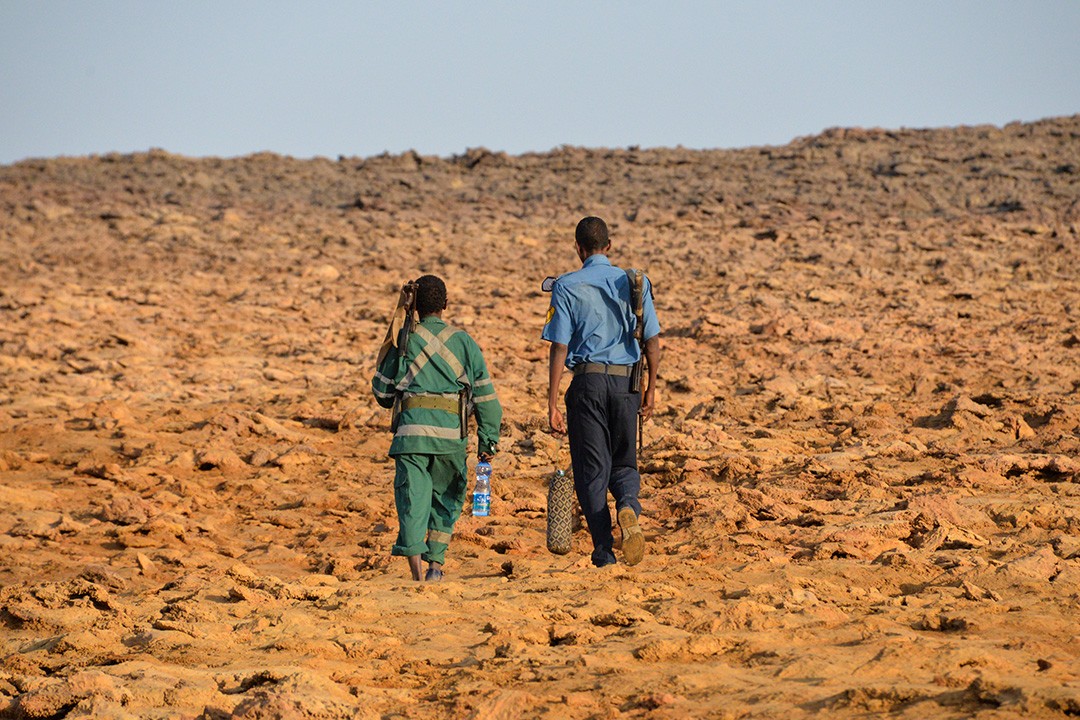
10 most (seemingly) dangerous things we’ve done
Seven years after we quit our jobs to travel the world, we revisit some of the riskiest things we’ve done on the road
Peter and I have a long-running joke that I have fallen off my bike in the most beautiful places in the world – among them Bora Bora in French Polynesia and Isabela in the Galápagos . I only learnt to ride at the age of 28 and my lack of experience has led to numerous falls.
What’s interesting is that no one ever calls me ‘brave’ or ‘daring’ for riding a bicycle or indeed a horse even though statistically (and in personal experience ), these activities are some of the most dangerous I’ve done.
Instead, it’s things like skydiving and bungy jumping that impress others most. Below, I share 10 seemingly dangerous things we’ve done – some of which posed a real risk, but most of which were just pure fun.
1. Changed a tyre in Namibia’s lion territory
I’ll be honest: this was one of the most nerve-racking experiences I’ve ever had. Peter and I were on day 13 of our epic self-drive safari through Namibia when we got our second flat tyre in as many days.
We had spent the previous day on a 160km round-trip to the nearest garage to pick up a spare tyre after using the one we had. We’re lucky we did so, because on day 13 we bust another tyre, this time in the middle of Etosha National Park , known for its abundance of lions.
The park rules clearly state that you should never leave your vehicle. Unfortunately, there was no phone reception so we couldn’t call for assistance. We waited to see if anyone else would turn up, but Etosha is a big place and we could have been waiting for hours.
So, Peter suggested changing the tyre in lion territory. I was to keep watch and sound the horn if I saw any movement.
How was I supposed to keep a 360° watch around the vehicle? Would I be quick enough on the horn? Would we be the two stupid tourists who got killed by lions because they flouted official safety rules?
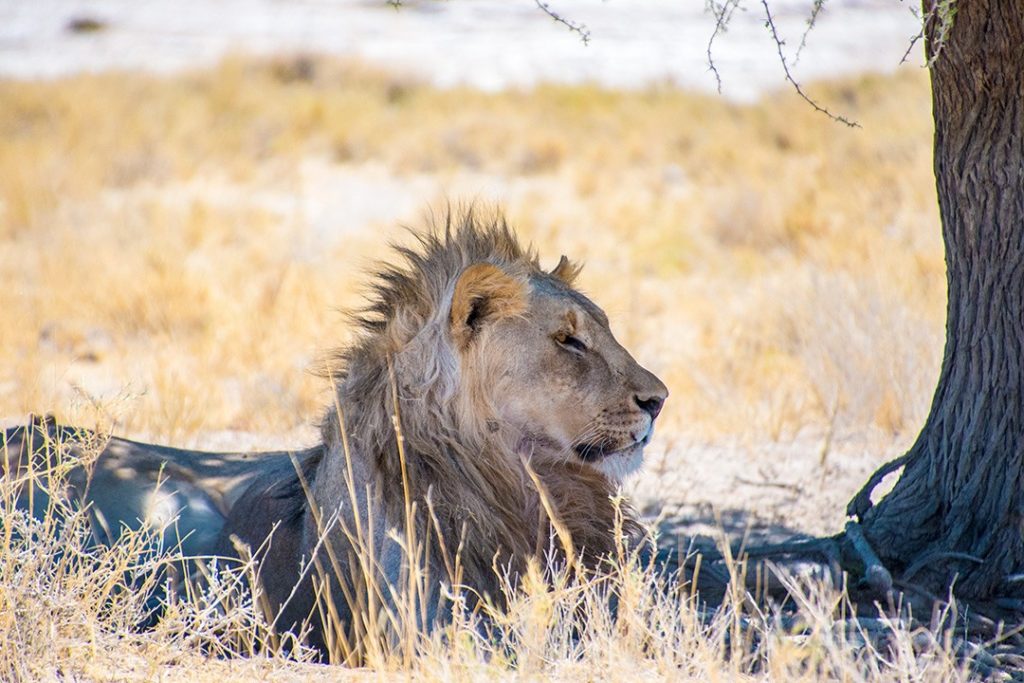
I took a deep breath and nodded. Peter worked silently and quickly while I, dripping with sweat and anxiety, carefully scanned our surroundings. Fifteen minutes later, the tyre was on and we got back in the car, laughing with relief and possibly a touch of hysteria.
Half a kilometre down the road, we stopped laughing. There, we spotted a lion lazing beneath a tree and we realised that this story could have easily ended differently.
2. Climbed three of the seven summits
Peter has climbed three* of the seven summits : Mount Kilimanjaro in Tanzania, Mount Elbrus in Russia and Mount Aconcagua in Argentina with each climb growing progressively harder.
(* Four if you count Kosciuszko in Australia, as does The Bass List)
When I spoke to him on the phone after Elbrus, he was in high spirits. When I spoke to him after Aconcagua, however, he sounded completely exhausted. Physically, it was the hardest day of his life, he said. Several times he had considered giving up and turning around – something I’d never heard him say about a mountain before.
Aconcagua is a ‘trekkable’ mountain (i.e. no technical rope work involved), but it poses a tangible risk. At nearly 7,000m, it is believed to have the highest death rate of any mountain in South America. As dangerous endeavours go, attempting to scale the seven summits ranks pretty high on our list.
3. Crossed a landslide in Peru
Crossing a landslide on our Salkantay trek in Peru seemed more thrilling than dangerous, but it posed enough of a risk to noticeably concern our guides. We trekked for an hour to try and avoid it, but when we found that a bridge had washed away, we turned around and returned to the site.
There, we picked our way across a steep slope of crumbling scree beneath a blanket of rain. Some of us fared better than others. One woman in her early twenties wept with nerves as she crossed, led by hand by two guides.
Peter and I were comparatively cavalier, but I look back now and see that a single misstep would have ended badly.
4. Hiked to Erta Ale in Ethiopia
The Danakil Depression in Ethiopia is one of the hottest, lowest and driest places on Earth. It’s so extreme that life has been found in pure acid here. Temperatures regularly reach 45°C (113°F) and seas of molten magma ooze just beneath the crust’s surface.
Its most impressive site is Erta Ale , one of the most active volcanoes in the world . Getting there has been called ‘the hike to hell and back’ and requires a three-day trip with a military escort.
In 2012, an attack by Afar rebels left five tourists dead and four people kidnapped, and there was a deadly incident days after our own visit.
It made us reflect once again on the pros and cons of risky travel and though Erta Ale was an incredible sight, I’m not quite sure I’d do it all again.
5. Jumped out of a plane – twice
This is where we get into fun territory where the perceived danger is greater than the actual. Peter and I have skydived twice, first in the UK and then in Australia. Both times were utterly thrilling.
Interestingly, the skydive in Cairns was almost cancelled because of rain and when we passed through heavy condensation, I understood why. At that height, raindrops sting like needles as you’re falling much faster than water.
Either way, I was pleased that the weather didn’t cancel our jump. As I say in the video, it’s the closest I’ll ever get to flying… unless I take up BASE jumping that is.
6. Jumped one of the longest bungys in the world
There is a moment as you shuffle onto the ledge of the 134m Nevis Bungy in New Zealand that you think Oh Jesus. If it’s true that humans are born with two fears – loud noises and falling – then surely jumping off a ledge into an abyss goes against human nature.
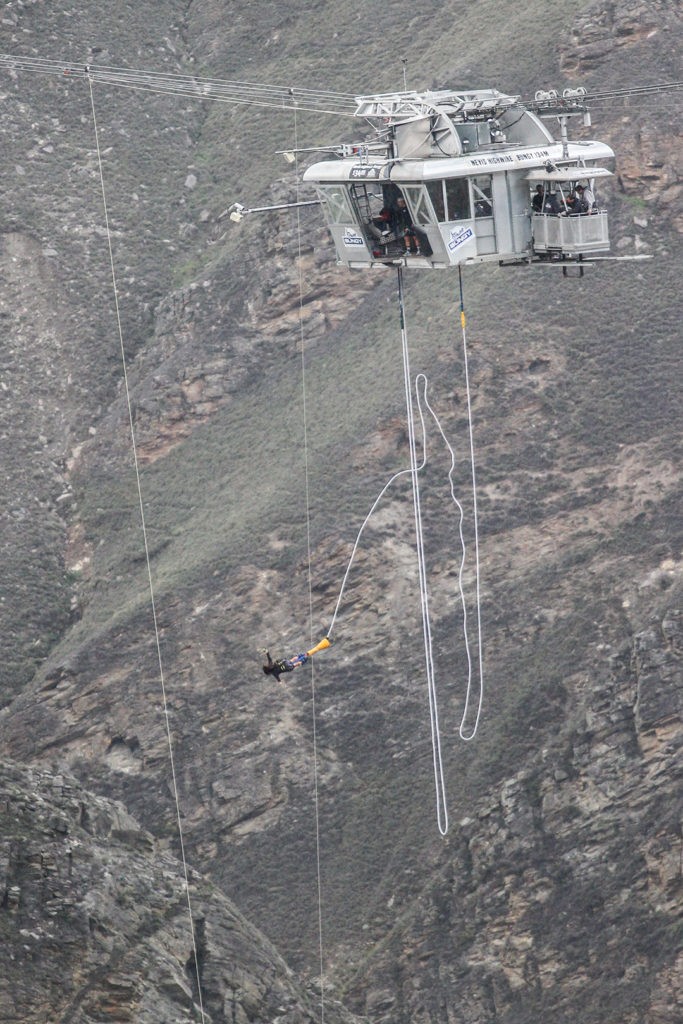
On the ledge, I waved gingerly to the camera and listened to the countdown: ‘three, two, one, bungy’. Heart lurching, I leapt off with a scream.
Seconds in, I realised that my eyes were closed. I snapped them open. If I was doing this, then I would bloody well enjoy it. I felt myself plunge deep into the valley, then rush back up again. I always thought I’d hate the bouncing sensation, but the Nevis Bungy was completely smooth. I swooped towards the ground again, feeling a whirl of disbelief. It was thrilling, frightening and utterly exhilarating.
People ask me if the Nevis Bungy or skydiving was scarier. Undoubtedly, it was the bungy. Despite the far greater height, skydiving doesn’t quite feel like falling. The force of the air around you has a buoying effect. With the Nevis Bungy, you really are just falling.
7. Dived with sharks in the Galápagos
Again, this was more fun than dangerous, but when people see the footage of Peter gliding into the frame above a reef shark, they usually gasp out loud.
On a dive in the Galápagos , we encountered dozens of whitetip reef sharks resting on the seabed. At nearly 20 metres deep, we spent several awe-inspiring minutes watching these magnificent (and chilling) beasts.
Of course, whitetip reef sharks are rarely aggressive towards humans. Unlike their Oceanic cousin, they are seldom aggressive unless provoked. They are, however, fearless and curious and will sometimes closely approach swimmers to investigate.
8. Drove the Sani Pass in Lesotho
Located in the western end of KwaZulu-Natal province of South Africa, Sani is a mountain pass connecting Underberg in South Africa with Mokhotlong in Lesotho. The hairpinned pass − named one of the most dangerous in the world − starts at an altitude of 1,544m and climbs to 2,876m.
Built circa 1950, Sani Pass remains a challenging drive. With winding twists, loose gravel, plunging drops and hairpins bends, it demands painstaking care and practised skill. In parts, the gradient reaches 1:3 and in treacherous conditions, has claimed lives. In fact, one of the hairpins has the rather sobering name of ‘suicide bend’.
We crossed the pass during our 2018 trip to South Africa. The progress was extremely slow but we didn’t complain. This is one occasion when it truly is better to be safe than sorry.
9. Swam with whale sharks in Djibouti
The whale shark is the largest known fish species living today. It poses no threat to humans, but its sheer size can be overwhelming.
On our trip in Djibouti , our spotter pointed to the waters ahead and Peter and I jumped straight in. Alas, the whale shark headed in the opposite direction and the two boats followed, depositing passengers far closer to him. Peter and I locked eyes. We’d made the mistake of jumping too soon.
It was then that a motion caught the corner of my eye. The whale shark was headed straight in our direction. I dipped underwater and the shark swam directly towards me as I hovered in the water.
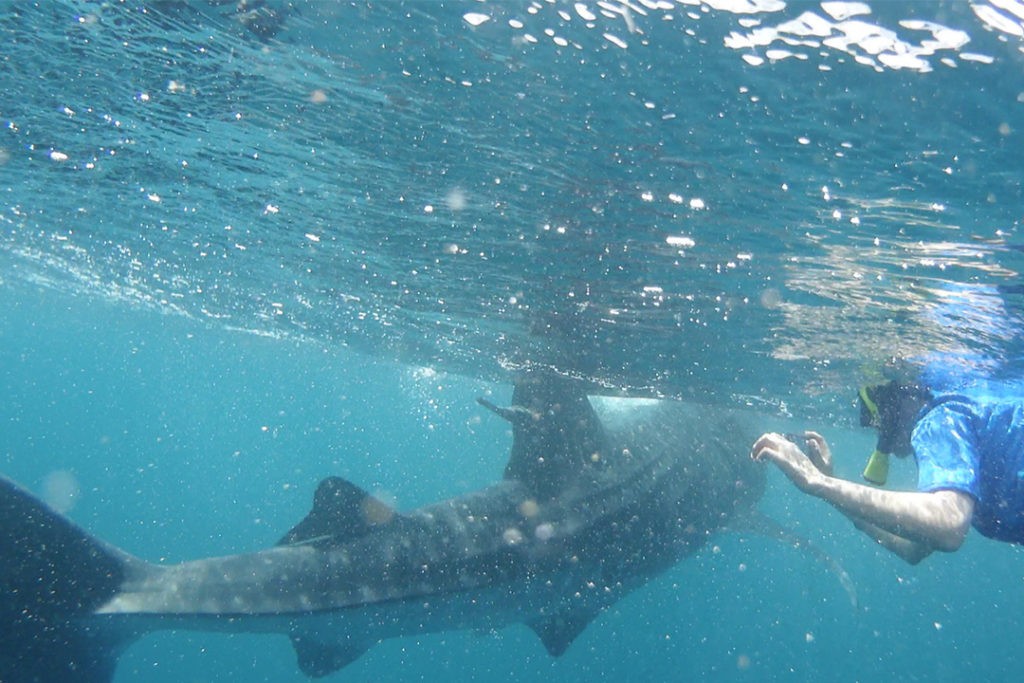
His skin glittered in the light and I held my breath as he swam so close I thought his tail would hit me as he turned. His enormous bulk slid swiftly by and I exhaled, long, soft and slow.
10. Scaled a via ferrata in Catalonia
After changing the tyre in Namibia, this is the most nerve-racking thing on the list for me. I’ve said before that I’m most nervous when I’m in charge of my own safety during risky activities. Unlike bungy jumping or skydiving where you’re never out of an expert’s hands, via ferrata requires you to change your own carabiners, meaning that an absentminded mistake could have you hurtling to the ground.
A few metres up on our via ferrata in Catalonia , my left leg began to shake uncontrollably. I’d never experienced anything like it before and I realised that I must be terrified. I remember that it had a strange, academic quality and a detached part of me thought, ‘Huh, so this is what it’s like.’
I gathered my nerves and continued up. At the top, neither Peter nor our guide, Jordi, believed me when I said that it was scarier than bungy.
Enjoyed this post? pin it for later…
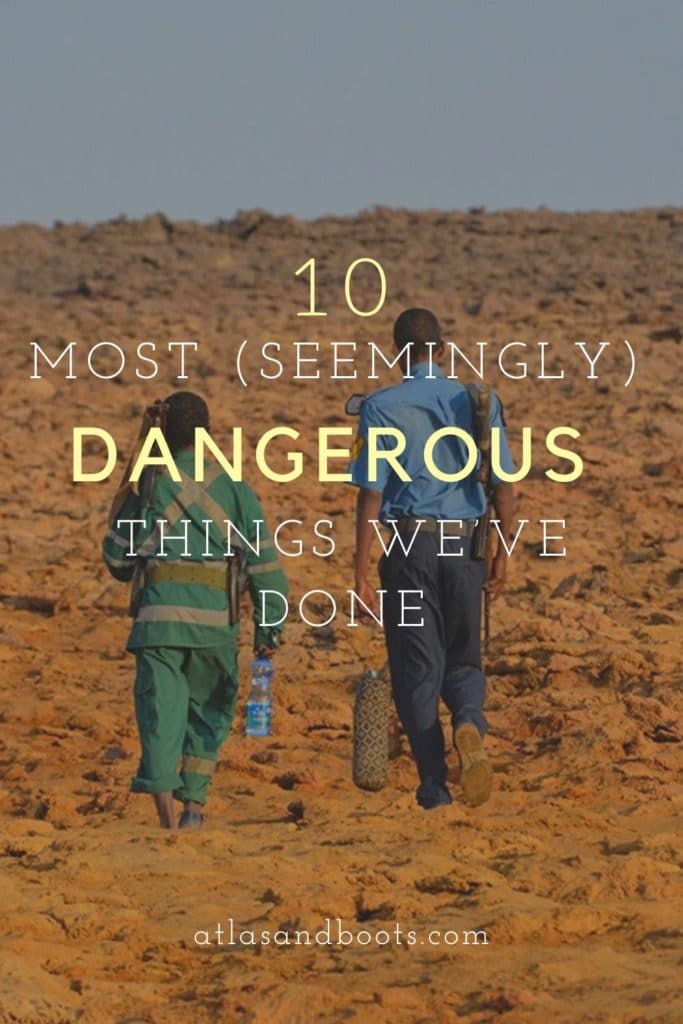
Through personal anecdotes mixed with succinct travel advice, we share everything we’ve learnt about life on the road in Don’t Offer Papaya: 101 Tips for Your First Time Around the World .
You might also like:
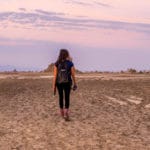
Finding the Universe
Travel tales, photography and a dash of humor
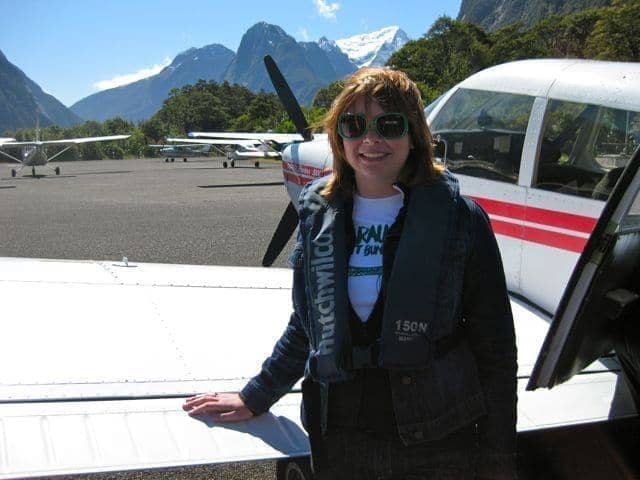
Travel blogging tips from the experts: A Dangerous Business
Last updated: July 23, 2020 . Written by Laurence Norah - 16 Comments
This weeks travel blogging tips article features one of my favourite travel bloggers: Amanda Williams, author of travel blog A Dangerous Business.
Amanda and I share a passion for New Zealand, and she has already provided me with a wonderfully comprehensive post on what to do when in the land of the long white cloud , a post which proved to be immensely valuable to me when I came out here.
Today Amanda shares her thoughts on what it takes to start a successful travel blog, taken from the lessons she has learnt over the last year of building her own site, including thoughts on advertising, traffic stats, and the things she wish she had done earlier. Enjoy the read.
Tell us a little bit about Amanda and your site: A Dangerous Business.
Well, I’m a 24-year-old journalist from Ohio, and I currently work at a small newspaper as an editor. I’ve been fascinated by the world “out there” ever since I was in gradeschool and rushing home to watch “Where in the World is Carmen Sandiego” every afternoon. In high school, I knew I wanted to travel far and wide, and I visited a total of 7 countries during college, including studying abroad for 5 months in New Zealand.
While I was in NZ, I kept a personal blog to keep my friends and family up to date on my daily life. I posted photos, wrote about my impressions of my new home, and described all my adventures in detail. Once I returned home and got hired into my current job, I got a bit bored and longed for a taste of travel again. So I decided to start a travel blog.
The name comes from a J.R.R. Tolkien quote that goes like this: “It’s a dangerous business, going out your door. You step onto the road, and, if you don’t keep your feet, there’s no telling where you might get swept off to.” It’s one of my favourite quotes, and I think it can be applied to travel.
Why did you start writing a travel blog?
Like I said above, I started my very first travel blog while I was studying abroad in New Zealand, as a way to keep family and friends in the loop. I feel like many people start blogs for this reason.
But, after I got back and entered into the “real world,” I missed having that element of travel and the opportunity to write in my everyday life. So I started a travel blog in order to force myself to put some of my stories and experiences down on paper.
I started it mainly just for myself, and never expected it to take off like it has.
How do you define success in terms of your travel blog?
How does anyone define travel blogging success? Money? Free trips? Getting mentioned in a big publication? I’m kind of fuzzy on it all. Sure, it’s nice to make a few bucks off my site, but none of these things are what I set out to do when I started my blog. I just wanted to write, and to have a place to put all my stories and photos.
Success for me is more about being proud of my content, and having others recognize that it’s good. Retweets on Twitter and comments on my posts go a much longer way in my mind than page views and advertising dollars.
What aspirations do you have for your travel blog?

I don’t have aspirations to be a wandering nomad like a lot of other bloggers. I want to travel, yes. But I also want to get married and settle down eventually, too.
Right now, my aspirations are to continue putting out quality content; to keep improving my stats; to make a bit of money; and to inspire others to get out there and see the world.
How important do you think site design and technical know-how are for a travel blog?
I think choosing a good, clean, easily-navigable design is extremely important for a travel blog. You want to encourage people to visit and use your site, not confuse them and drive them away. But that doesn’t necessarily mean you need to be a design wiz. I’m currently using a free theme, and hired the lovely Jenny Leonard to whip up my custom header for me.
I don’t necessarily think technical know-how is a must, but it definitely helps. I only know very, very basic html. When I run into technical issues, I usually go running to Twitter asking for help if I can’t find answers on Google. Luckily, there are a ton of helpful bloggers out there (like Chris from Aussie Nomad, for example) who are almost always willing to lend a tech-savvy hand.
Do you follow any metrics in terms of traffic analysis / site ranking, and how important do you think these are?

I’m not obsessed over my stats, but I still think it’s important (for me) to know where I stand. Based on page views, it’s easy to see what sort of content does well, and what tends to flop with my readers.
What would be your number one tip for increasing site traffic?
I think what I’ve found to be hugely important is being active on various forms of social media. You can be putting out great content, but if nobody knows about it, it’ll show in your traffic.
Of course, this won’t be true for everyone, especially those running blogs that are already hugely popular. But for relatively newer bloggers like myself, I think interacting with people on Twitter, Facebook, and other blogs is so, so important.
The more present you are, the more other people will start to take notice.
What have you found to be the hardest thing about running a travel blog, and how do you overcome this?
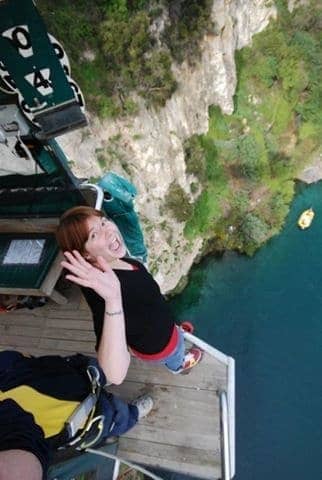
But the hardest thing for me, I think, is the time commitment. Since I’m one of the newer kids on the block, I know I have to put extra time into everything that I do. I spend time each day constructing new posts, promoting myself and interacting with others on Twitter and Facebook, and reading a bunch of other blogs. I also have a full-time job, so it’s often really tough to actually find any “me time.”
I try to strive for at least some balance, and I often take mini breaks from everything on the weekends, when traffic is generally lower anyway. I don’t want to get burnt out, or start to resent the time I put into my blog. I think the best way to avoid that is to know when to take a break.
What sort of time commitment do you put in to your travel blog on a weekly basis?
A whole lot! I’ve never actually kept track of the hours, but some weeks it ends up feeling like a second job – albeit a job I enjoy much, much more than my “real” one!
I’m different than some other bloggers in that I post fresh content nearly every day. This means I really have to keep on top of things, and sometimes put in some extra time.
If there was one thing you wish you could have known before you started writing your blog, what would it have been?
I wish I would have been aware of the wider travel blogging community when I started off. I wish I had known how great Twitter is, and how to actually use it to enhance my blogging. And I wish I would have switched over to a self-hosted site a lot sooner!
What have you found to be the best way to go about generating an income from your blog?
I only actually started accepting advertising in late November, so I’m pretty new to the whole thing. I was absolutely clueless at first when it came to things like prices and the like. But I’d say I’m definitely having some mild success with generating a bit of extra income each month from my blog. It’s by no means enough to live on, but it’s definitely helping to bolster my travel fund!
My biggest tip would be: If you have questions, find someone to ask! When I first started out, I contacted some fellow bloggers who I knew had experience working with advertisers, and asked them a bunch of things. They were super helpful, and gave a lot of great advice that I’m still using.
Also, reading posts and participating on the forums at Travel Blog Challenge has been a great source of info, too. .
How do you go about promoting your travel blog?
I mostly promote on Twitter and Facebook, but I also dabble in StumbleUpon every now and then. And, of course, simply commenting on other blogs is a great way to both interact with other bloggers, and to promote yourself at the same time.
If you have questions or problems with your site, where do you go to find answers?
Usually, I turn to Google first. Often, my problems are common or easy to fix, and I can usually work them out on my own. If I can’t, then I take my questions to Twitter, and hope that some tech-savvy soul takes pity on me and offers to help me out.
Travel blogging is becoming more and more popular. How do you differentiate yourself in such a crowded market?
Well, it certainly isn’t easy. It’s a lot of work, and sometimes even putting the work in doesn’t necessarily mean that you’ll see success. I think it all comes down to a combination of personality, finding your voice, providing quality content, and making sure you are seen and heard.
I feel like people only follow the content of a blog to a certain extent. They’re much more likely to stick around if they connect with your writing style and enjoy your personality. You can blog about amazing places and topics, but if you’re dead boring, people probably aren’t going to read.
And finally, what key advice would you give to people running, or thinking about setting up, their own travel blog?
I would tell them to start early, and start out blogging for themselves. This helps with that “finding your voice” part, because if you’re only blogging for yourself, you don’t feel as much pressure to be or say or do anything for someone else’s benefit.
And, of course, don’t give up! Blogging of any sort can get frustrating. I get flustered at least once a week. But the key is to keep at it as long as you’re enjoying it.
As always, tremendous thanks to Amanda for taking the time to answer my questions. You can find out more about her travels on her website: A Dangerous Business, plus you can find her on both twitter and facebook .
F or more travel blogging tips from the experts, have a look at the rest of the series . To keep up to date with upcoming posts you can subscribe to the RSS feed or join in on the site’s Facebook page . In the meantime, if you have any questions or thoughts on this post or the series thus far, the comments box awaits!
Enjoyed this post? Why not share it!
There are 16 comments on this post
Please scroll to the end to leave a comment
yTravelBlog says
8th April 2011 at 2:27 pm
Great stuff Amanda! Nice to read your answers. I agree on the don’t give up advice and it takes time to build a foundation. Be here in 2 years time and you will be flying…
Laurence says
4th April 2011 at 9:33 pm
Thanks Lindsay, much appreciated!
Lindsay Hogg says
4th April 2011 at 7:26 pm
This is a GREAT interview. So informative rather than the typical “where have you been, what’s your favorite and where are you going” Thanks for all the tips hommies! Some will be put to good use!
31st March 2011 at 12:35 am
Thanks Andi. Looking forward to putting your interview live too!
Thanks Nicole, and thanks for dropping by 🙂
31st March 2011 at 12:32 am
Cheers. Do check out the rest of the series too, some great names there with lots of experience to share.
Thanks for stopping by Ruth 🙂
Amanda Williams says
30th March 2011 at 11:58 pm
I just wish blogging could be my ONLY full-time job! Lol. But, sadly, I’m not sure it will ever pay the bills.
Thanks so much for the kind words, Andi. My blog is definitely like my baby, so I’m glad you can tell!
Andi Perullo says
30th March 2011 at 11:17 pm
Such a great interview! I definitely think travel blogging is a full time job for sure. Amanda it definitely shows on your blog how much love you put into it. 🙂
30th March 2011 at 4:21 pm
Aww shucks, thanks!
Thanks, Ruth! The time commitment can be tough, but you’ll find a balance that will work for you. Good luck with your blog!
Nicole McPherson says
30th March 2011 at 11:35 am
Great interview, and some tips I’ll definitely take on board – thanks!
30th March 2011 at 5:15 am
Thanks for this post. As a newer blogger myself, it’s great to read Amanda’s perspective.
EagerExistence says
30th March 2011 at 5:12 am
Nice interview… its good to get the background info on other travel bloggers… especially successful ones 😉
Ruth Rieckehoff says
30th March 2011 at 5:06 am
Hi Amanda, Great insight into the blogging world. I started my blog three months ago and I can definetly identify with what you say about the time commitment. Like you I, I have a full time job and sometimes I would like to have more time to work on the blog. Thanks for sharing your experience.
Leave a Reply Cancel reply
Your email address will not be published. Required fields are marked *
Let me know when there's a reply to my comment (just replies to your comment, no other e-mails, we promise!)
Subscribe to our monthly Newsletter where we share our latest travel news and tips. This also makes you eligible to enter our monthly giveaways!
We only ask for your e-mail so we can verify you are human and if requested notify you of a reply. To do this, we store your data as outlined in our privacy policy . Your e-mail will not be published or used for any other reason other than those outlined above.
- Destinations
Wild Junket

Why I Travel to ‘Dangerous Places’
Last Updated on November 12, 2021
Whenever I tell people where I’m traveling next, the immediate question is often “why do you travel to dangerous places”? Here’s why.
In the past decade of travels, I’ve visited several places that are considered ‘dangerous’ by many: North Korea, Saudi Arabia, Iraq, Iran, Haiti, Burma (or Myanmar), Afghanistan, amongst many.
Why? Because as a deeply curious traveler, I strongly believe that seeing a place for myself is the best way to mitigate everyone’s fears and bust the myths surrounding it. Traveling is my way of learning on-the-ground knowledge, and visiting these forbidden lands is a channel through which we see a place beyond the headlines. Here’s why I travel to ‘dangerous places’:
Table of Contents
To Learn Valuable Lessons
To see a country beyond headlines, reality vs what we see on tv, to be surprised, people are people, tourism can bring world peace, advise for travel to dangerous places:, inspired pin it, why travel to dangerous places.
At the start of 2012, news of North Korea’s nuclear weapons was flashing across TV screens around the world. I had been reading about the country for years, and I was watching the country sink deeper and deeper into isolation from the world. D
PRK (Democratic People’s Republic of Korea) is one of the most isolated nations in the world, having tucked itself into secrecy since its division with South Korea. Only local channels are shown on TV, there is no internet anywhere in the country and few foreign tourists visit the country each year (around 2,500 Western tourists not including the Chinese).
I’d heard that North Koreans were only fed the side of the story that their supreme leaders wanted them to hear; I couldn’t help but question if that’s happening to us too. Is the news media obscuring North Korea’s wider picture — is it all true or are our visions being skewed too?

I knew that visiting a country this controversial would subject myself and my work as a travel writer to scrutiny and that strict tourism laws in the country meant that we would be herded from place to place and shown only certain sights of the country. At the same time, I couldn’t miss up this excellent opportunity to step away from everything that’s been fed to us by the news media and make my own judgment for once.
Traveling to North Korea left me awed and overwhelmed. Regardless of the nation’s political standpoint, I found a country with an extreme camaraderie and pride, and people who were just as curious about me as I was of them. On the subway, I even interacted with people, showing them my photos and using sign language to talk to them.

In 2013, I went to Iran with no idea what to expect and it surprised me on so many levels. The urban sprawl was ridiculous, the sense of normality was slightly disappointing — but most of all, the warmth and hospitality of its people was unforgettable.
“Welcome!” was the word I heard most in Iran, I lost count of the number of times when Iranians warmly invited me into their country. Perhaps because of the hospitable nature of the Iranians or the fact that the country doesn’t see many foreigners, they are undoubtedly the friendliest people I’ve ever met on my travels. Locals came up to me ever so often, wanting to know where I’m from, what I was doing in Iran, and how I liked their country.
The people of Iran moved me with their genuine generosity and kindness — and it’s people like that who made my trip to Iran truly memorable. Traveling Iran as a solo female traveler can be an eye-opening experience, considering how misunderstood this Islamic Republic is. It is a rewarding place to visit especially for curious travelers who want to learn the basis of the country, who its people are, and what their culture stand for — beyond political issues and news headlines.

You have to understand that we see in the news doesn’t always reflect what is really happening on the ground.On my recent trip to Iraqi Kurdistan, I was surprised by how normal life was there and how safe I felt in Kurdistan.
Having been spared the war of 2003, Iraqi Kurdistan is a very different place from southern Iraq. Also known as “the other Iraq”, the semi-autonomous region is relatively safe, because of its strong military Peshmarga forces who have successfully defended the country from ISIS.
I was blown away by how different Iraqi Kurdistan was to how many of us imagined. It wasn’t what one would describe as “war torn” at all — instead, the cities were bustling and vibrant, and the natural sights were spectacular.
In all honesty, this trip to Iraqi Kurdistan was truly transformational. I didn’t know what to expect in Iraqi Kurdistan. I knew that it would be a learning experience, but I had no idea it would stir up so much emotions in me and change some of my perspectives in life.
Part of the appeal of traveling to these off-the-radar places is just how authentic they are, having been closed off to the outside world. My recent trip to Saudi Arabia was such an eye-opening experience — it truly surprised me and gave me a rare glimpse into a world that few foreigners have seen, one that momentarily felt entirely untainted by outside influence.
As with the case for many countries I’ve been, Saudi Arabia turned out to be quite different from how it is often portrayed on the news media.
For one, I was overwhelmed by how vibrant the capital city of Riyadh was. Tall skyscrapers, sparkly new malls and neon-signed restaurants line Olaya Street, the main artery of the city. I spotted international brands everywhere — from Victoria’s Secret to Zara, McDonalds to Starbucks.
Every women in Saudi Arabia wore an abaya (black robe that every lady wears in Saudi Arabia), but I also noticed many had on Kim Kardashian-style makeup, immaculately polished nails, branded handbags and the trendiest sunglasses.
Considering that tourism is very new to them, I was expecting quite a bit of curious stares from locals. But boy was I wrong! Saudi Arabians are used to seeing foreigners as over 30% of the population are foreign workers and expats. Saudis are also a global and well-traveled bunch, many of them having studied and lived abroad.

My experience in many places perceived as unsafe – from Iran to Burma – tells us that the story on the ground is often very different than what appears in media. And no matter what happens between governments, politicians and “leaders”, at the end of each day, people are people — they are generally good and life goes on for them in many fundamental ways just like it does for you and me.

Many of these regions need tourism badly to fight off poverty and resolve conflicts. Egypt for instance needs tourists now more than ever to revive the tourism industry that suffered severely due to the revolution; South Sudan is another good example of a brand new country whose fragile economy can benefit substantially from visitors. Most of all, tourism can be a powerful tool to fight off discrimination and advocate equality. If done correctly, it can help to educate the parties involved and the outside world, and bring peace.

Traveling to ‘danger zones’ clearly has both its rewards and risks. For visitors, there are the obvious perils involved, such as terrorist attacks, kidnapping and other crimes; but with some safety precaution and advanced planning, you might be returning home with a gratifying travel experience.
If you’re planning to travel to ‘dangerous places’, there are a few things to keep in mind:
- Check the latest blogs, websites, and forums to find out if it’s safe to visit.
- Follow the news to keep yourself updated of the political situation from time to time.
- Keep your plans flexible and be opened to last minute changes.
- When in the country, blend in to the crowd by dressing conservatively and not attracting too much attention.
- Be respectful of the locals and their ideas and do not try to force your opinions on them.
- Keep your family informed of where you’ll be visiting and your hotel info. Leave instructions on who to contact if they don’t hear from you after a certain period of time.
- If you are caught in a dire situation, report to your embassy in the destination as soon as possible.

This is a chapter from my new book, The Adventure Traveler’s Handbook . To find out more about the book, read here or buy a copy from Amazon .
Nellie Huang
Nellie Huang is the founder of WildJunket. Originally from Singapore, Nellie has traveled to over 150 countries across 7 continents. As an accomplished travel writer, she has written for BBC Travel, CNN and Rough Guides . She is also the author of five travel books, including the latest Lonely Planet's Mexico guidebook. Read more about her here and follow her on Facebook and Instagram .
Leave a Comment Cancel Comment
Save my name, email, and website in this browser for the next time I comment.
This site uses Akismet to reduce spam. Learn how your comment data is processed .
The Comments
Jeremy Branham
I like this post, especially the last section about tourism and world peace. Two years I wrote a post about how travel can change the world. Part of the inspiration for that posts was two things – the death of Osama bin Laden and my disdain for politics. People are caught up in the stuff that doesn't matter thinking that governments and politicians hold the key to peace. That is actually in our hands. The more we travel and build connections with people the more walls we break through and peace we can create. Great post!
Robert Brown
The only factor that I want to say is that you people are very fearless to check out those risky nations and get the attractiveness of the position for us to see it. Excellent job and hopefully I can also do it.
Yes I definitely think the benefits of tourism outweigh other factors. Visiting these places doesn\’t mean that we support the regime or the government, it just means we want to see things for ourselves.
I think this is the bravest thing to do: to come to see it for ourselves. I think the world will be a better place if everyone tries to understand each other a little better.
True, we also thought about it for a while whether it was the right thing to do. But after visiting, we know there\’s no right or wrong, nothing is as clear as everyone thinks it is, but at least we believe education through travel goes a long way.
I have heard that some parts of Iraq are safe to visit and locals are very hospitable and kind. Iran also has a great reputation for hospitable people. Thank you for sharing!
Joanne Joseph
I enjoyed reading your views on traveling to places off most people's radar. I'm looking into a trip to North Korea next year so this post was one more push in that direction.
Thanks Joanne, I'm very glad that we helped push you towards making that decision. Visiting North Korea was definitely an eye opener and made me realize how far the truth is from what we see on TV everyday. Enjoy your trip and let me know how it goes!
Traveling definitely has its rewards and one of those is being able to find out more about their culture. Although I have got to say, you are one heck of a courageous fellow traveling in forbidden lands. LOL
As compared to some other travelers we know, we're hardly courageous! There are still many 'forbidden lands' we'd love to visit – like Sudan and Afghanistan, both of which we've heard great things about.
Charles Rahm
I quote Mark Twain: “Travel is fatal to prejudice, bigotry, and narrow-mindedness, and many of our people need it sorely on these accounts.” That really brings it to the point! Thank you for this article.
Love the quote, thanks for sharing!
David DiGregorio
This is a great post . Nowhere on the planet should be forbidden. Only through visiting and sharing our combined experiences can we really grown to understand each other.
While precautions should always be taken, it's never as bad as you think its going to be …!
Great story! It's stories like this that really make us question all these information fed to us by the news media.
Thank you! ;)
hi there! Thanks for dropping by! Yes I have been to Antarctica – it\’s definitely a place unlike ANYWHERE else in the world. It makes you feel like you\’re at the edge of the world. I\’ve written quite a lot about it here: https://wildjunket.com/tag/antarctica/
Marcello Arrambide
Lovely post! There's definitely a lot of misconception going around about these "dangerous" places. For a traveler to go to them helps shed light on reality. I have been to South Sudan, Israel, and even Colombia. There was never a time I felt unsafe.
I’m stoked to see your take on Tajikistan and Afghanistan this summer – I have no doubt you’ll love them both every bit as much as I did.
Yes you were the one who inspired me to go there! Can’t wait!!!
Andreas Moser
I have made similarly positive experiences in Iran.
In my experience, most people who think that a place is “dangerous” have never been there. Actually, they have often never left their country or comfort zone at all. And that sometimes includes the people writing travel advisory warnings.
Emily Harper
Hey Nellie!
I admire your boldness. It once crossed my mind but I haven’t mustered enough courage to travel to risky places. Perhaps I have been watching too much TV. Who knows, after careful consideration and research, I will get to visit these countries one day. I am not closing my doors. :)
Hi! I love your blog. If you had to choose between visiting Iraq or Iran, which would you pick?
hi Paige, that’s a hard question to ask. It really depends on what kind of travel experience you have, what type of travel you like, etc. Iran is very easy to travel, people are extremely welcoming and outgoing, and there are a lot of interesting sights. As for Iraq, I only visited the Kurdistan region in northern Iraq, which is apparently the only stable and safe part to travel at the moment. I would recommend traveling Iran then Iraq.
You May Also Like
Birdwatching in pico bonito, honduras, how to walk the camino de santiago, summer in greenland: cruising nuuk fjords.

The 50 Most (& Least) Deadly Travel Destinations
Published on December 1, 2022 by Matthew H. Nash
One crucial factor when planning an international trip is safety. From homicide rates to natural disaster risk, some countries pose a greater threat to safety than others. Our research team crunched numbers on seven safety risk factors for 50 of the most-visited countries to create our “Travel Safety Index” .
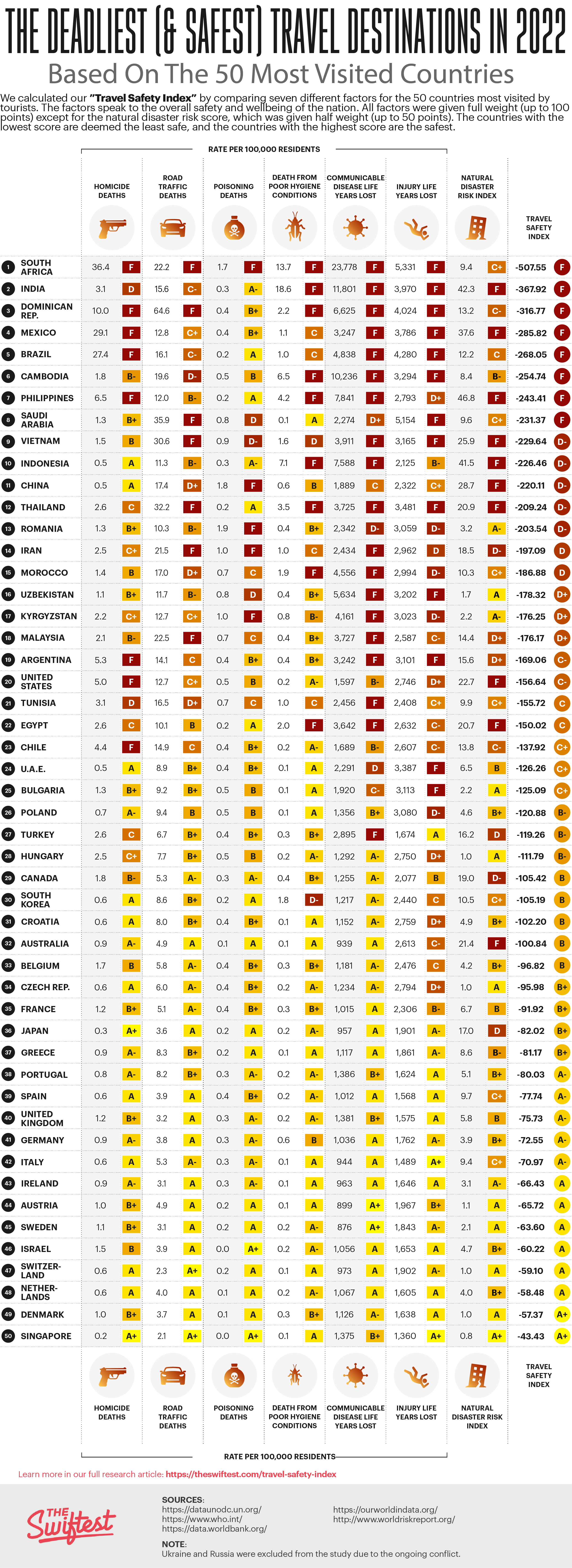
Get notified when we publish new research studies
Stay in the loop with our cutting-edge data analyses
Ranking Factors
The 50 countries included in our study were selected based on how popular they are among tourists. To determine the deadliest places in the world for tourists, we looked at the following ranking factors:
Please note: Due to ongoing conflicts in the region, Russia and Ukraine were omitted from the study.
1. Homicide Rate (0-100 points) – The number of intentional homicides per 100,000 people.
Source: United Nations Office on Drugs and Crime
2. Road Traffic Death Rate (0-100 points) – The estimated road traffic death rate per 100,000 people.
Source: World Health Organization
3. Poisoning Death Rate (0-100 points) – The mortality rate attributed to unintentional poisonings per 100,000 people.
4. Unsanitary Conditions Mortality Rate (0-100 points) – The mortality rate that is attributed to unsafe sanitation, unsafe water, and a lack of proper hygiene per 100,000 people.
Source: World Bank
5. Life Years Lost Due to Communicable Diseases (0-100 points) – The number of life years lost due to infectious diseases (adjusted for disabilities) per 100,000 people.
Source: Our World in Data
6. Life Years Lost Due to Injury (0-100 points) – Age-standardized and disability-adjusted life years lost due to injuries (including conflict, violence, and self-harm) per 100,000 people.
7. Natural Disaster Risk (0-50 points) – An index created by the German non-profit Bündnis Entwicklung Hilft in partnership with the United Nations University Institute for Environment and Human Security, the World Risk Report scores countries based on the risk of a natural disaster such as earthquakes, floods, or cyclones as well as the ability of the country to handle a disaster should it occur.
Source: WorldRiskReport
Study Limitations
An individual’s exposure to risk while traveling largely depends on the type of travel they choose and which areas of a country they visit. For example, going to a destination and staying in an all-inclusive luxury resort will often carry significantly less risk of bodily harm than staying in an area known for high crime, injury, or natural disasters. It’s impossible to account for every variable that a traveler may experience when analyzing countries as a whole. This study attempts to aggregate data taking into account a variety of factors to determine a nations overall risk profile.
Where Are the Most Dangerous Places to Travel?
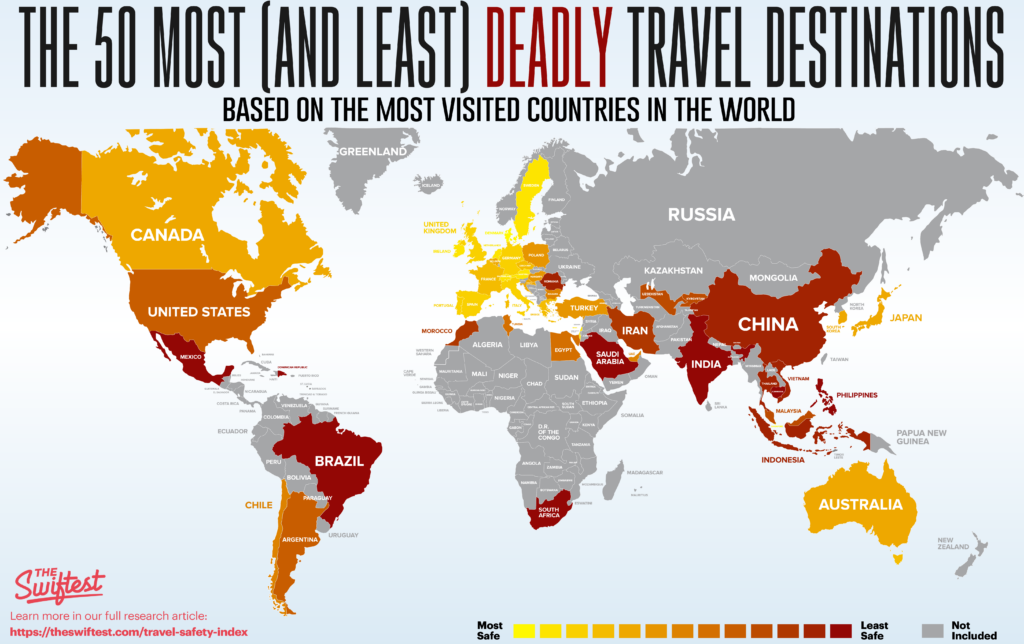
Below are the 20 deadliest travel destinations:
- South Africa
- Dominican Republic
- Philippines
- Saudi Arabia
- United States
#1 Most Deadly Country: South Africa

South Africa is a beautiful and exceptionally biodiverse country that attract millions of international tourist each year. However, it also tops the list of the most deadly countries for tourists. Out of the 50 countries studied, South Africa has the highest homicide rate (36.40 per 100,000 people) and the highest number of life years lost due to communicable diseases (23,778 years per 100,000 people). The country also has the sixth-highest road traffic death rate (22.22 per 100,000 people).
South Africa scored an F in six of the seven factors used in our research study. The U.S. Department of State indicates:
“Violent crime, such as armed robbery, rape, carjacking, mugging, and ‘smash-and-grab’ attacks on vehicles, is common. There is a higher risk of violent crime in the central business districts of major cities after dark.
Demonstrations, protests, and strikes occur frequently. These can develop quickly without prior notification, often interrupting traffic, transportation, and other services; such events have the potential to turn violent.”
Why is South Africa so unsafe?
Approximately 68 people are murdered in South Africa every day. Why this occurs is a complicated question to answer, but many believe it boils down to the following reasons:
- Poverty and income inequality
- High amounts of gang violence and organized crime
- Weak, slow judicial system
Other factors like the prevalence of easy access to firearms, alcohol abuse, unemployment, and corruption have also been cited as causes for the extremely dangerous crime and hazardous living conditions within South Africa.
#2 Most Deadly Country: India

India is second on the list of most deadly countries for tourists. While the country has a relatively low homicide rate and poisoning death rate, they are the top country for deaths from poor hygiene conditions, at 18.6 per 100,000 people.
Not only is India extremely populated, but it is also has extreme income inequality, with a massive gap between the country’s richest and poorest citizens. This wealth gap means that many of India’s over 1.3 billion people live in poverty and dangerous living conditions, with an estimated 60% of its citizens surviving on little over $3 a day.
Shoddy infrastructure, substandard health, and sanitation conditions are just some of the issues that Indians face on a daily basis, with the lowest classes being forced to navigate the worst of it.
Most and least deadly by category
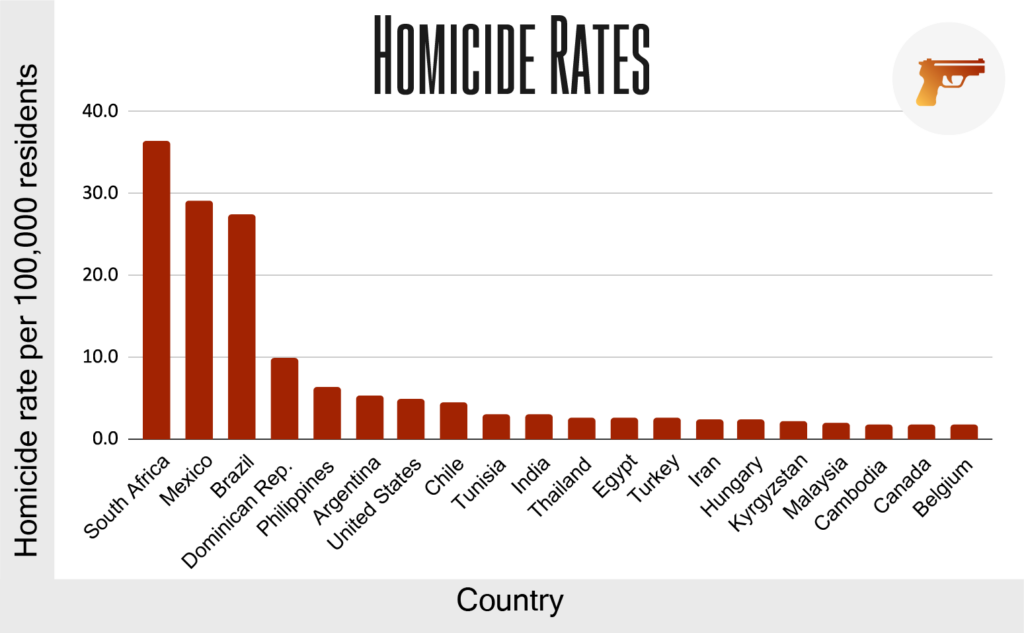
South Africa has the most documented incidents of homicide by a relatively large margin, with 36.4 homicides per 100,000. Mexico, the country with the second highest homicide rate, has 29.1 homicides per 100,000, and Brazil has 27.4 homicides per 100,000. The homicide rate drops significantly from there, with the remaining countries reporting 10.00 or fewer per 100,000. Notably, the US has the 7th highest rate of homicide when compared to these 50 countries.
The countries with the highest homicide death rates are:
Road Deaths
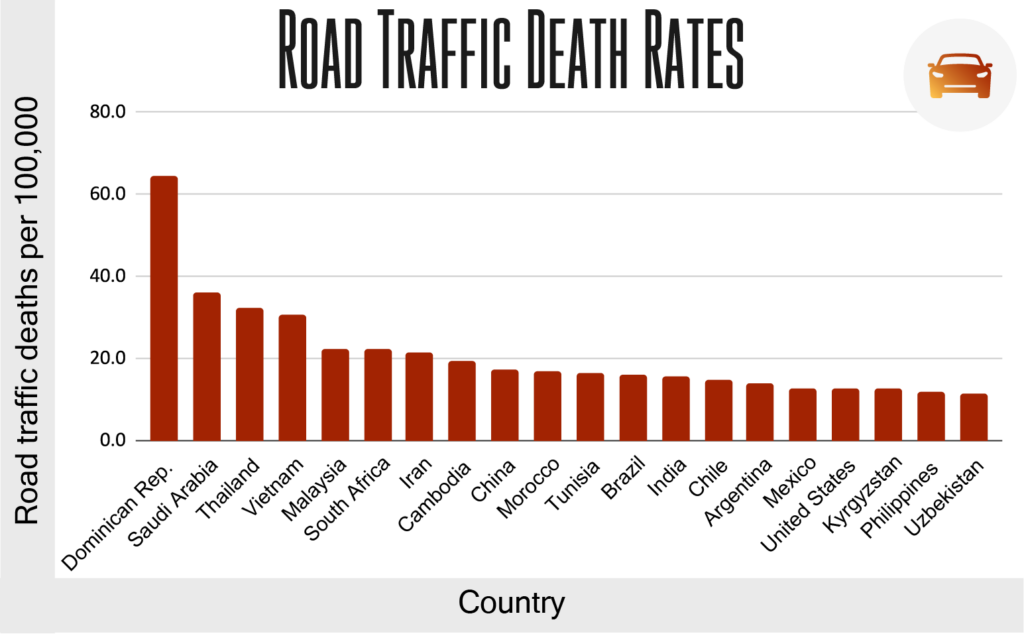
Vehicle transportation is unavoidable for most travelers, and unsafe road conditions can provide a considerable safety hazard in many countries. According to the CDC , 1.35 million people globally are killed in motor vehicle accidents every year, making this a real danger and a serious consideration when traveling to countries with more lax driving laws and poorly maintained infrastructure.
The Dominican Republic has a road death every two hours, which accounts for a significant portion of Dominican Republic deaths per year. Reasons for the dangerous road conditions are attributed to “a lethal mix of alcohol, speed and blatant disregard for traffic laws,” according to The San Diego Union-Tribune.
The countries with the highest road traffic death rates are:
Poisoning Deaths
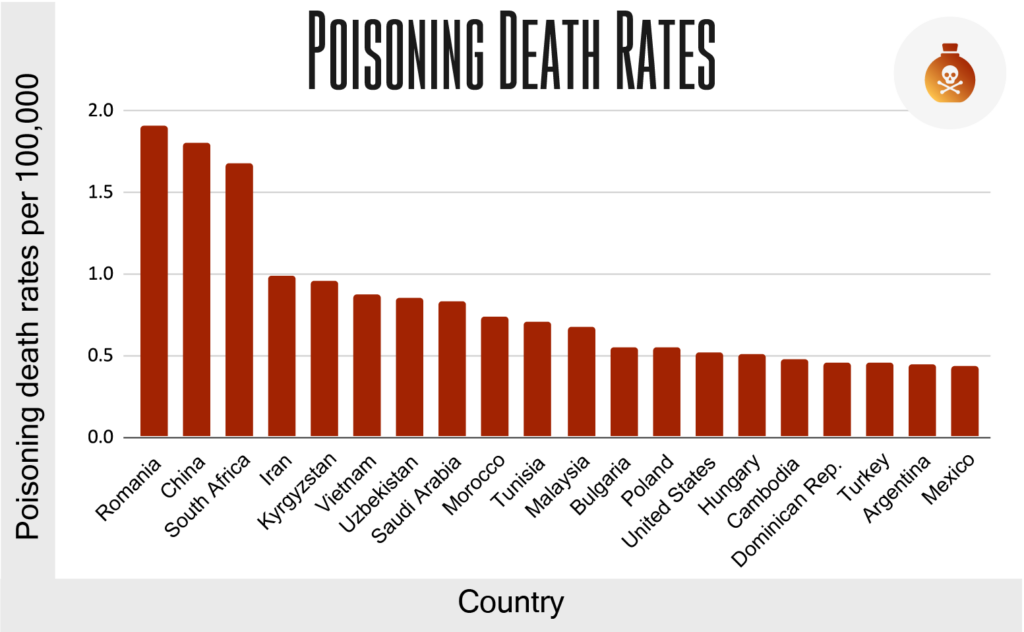
Romania, China, and South Africa are all outliers when it comes to poisoning deaths. According one study by the NIH , China had 16,179 unintentional poisoning deaths in 2016 which made up 31% of the world’s total of 52,077 poisoning deaths that year. The details and causes of poisoning incidents in China is scattered which suggests these numbers may be underreported.
The countries with the highest poisoning death rates are:
Mortality Rate from Unsanitary Conditions
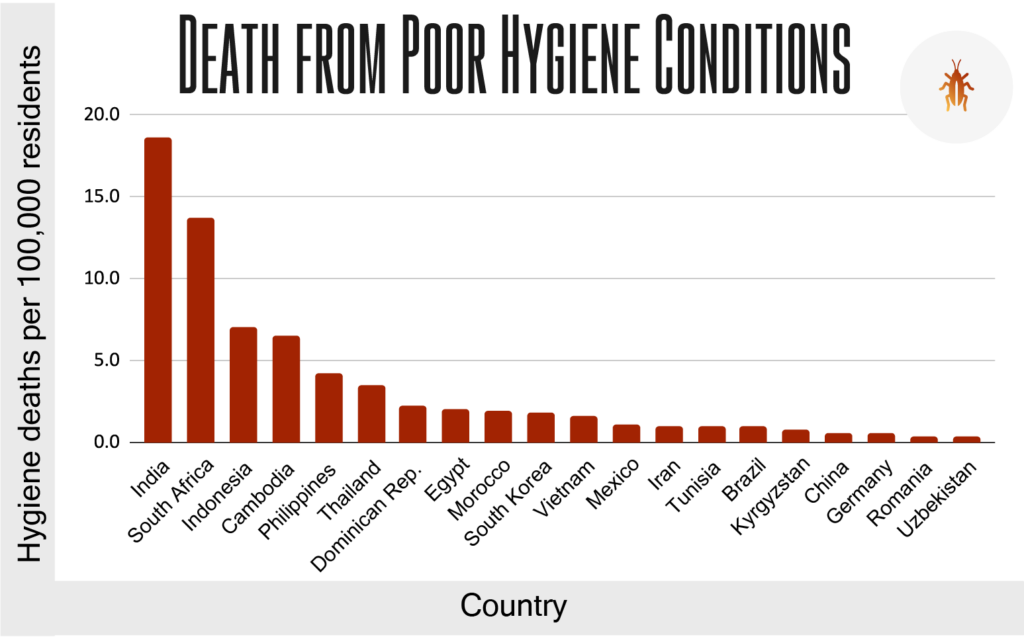
Anyone who has had traveler’s diarrhea or another food-borne illness will know how vital sanitation is when it comes to a vacation. There are ways to prevent illness from unsanitary conditions, but it’s not entirely possible to eradicate the threat of sickness in all regions.
While India is a developing country and is modernizing quickly, there’s still much progress to be made in terms of general hygiene. An estimated one in ten deaths in India is attributed to poor hygiene conditions. Similarly, South Africa is having significant issues with clean water access and available sanitation services for its citizens, though this does appear to be improving.
The countries with the highest death rates from poor hygiene:
- South Korea
Communicable Disease Deaths
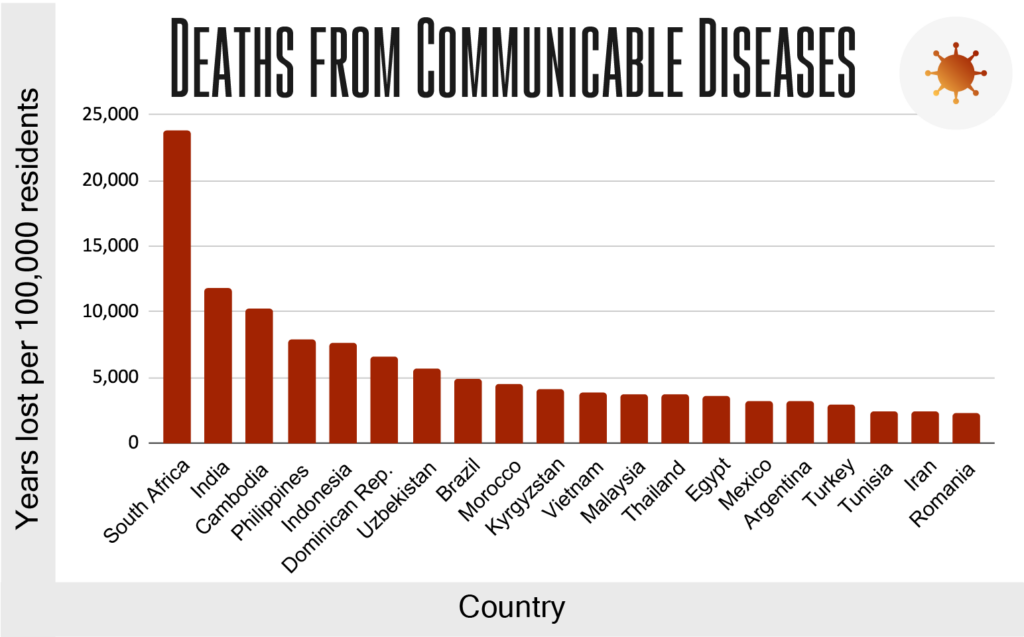
Covid-19 has shown us that infectious diseases are extremely serious, but many other diseases around the world also have devastating impacts and cause countless deaths every year. These include diseases like dengue fever, malaria, measles, cholera, typhoid, yellow fever, and more. It’s always a good idea to check with your medical provider before traveling to a new region because they will have data available to ensure you are immunized against local diseases as much as possible and can take other preventative measures such as wearing insect repellant.
South Africa has over double the number of life years lost due to communicable diseases as India. Some of the diseases affecting South Africans include HIV, tuberculosis, respiratory infections, and more, according to the CDC.
The countries with the highest number of years lost from communicable diseases:
Life Years Lost to Injury
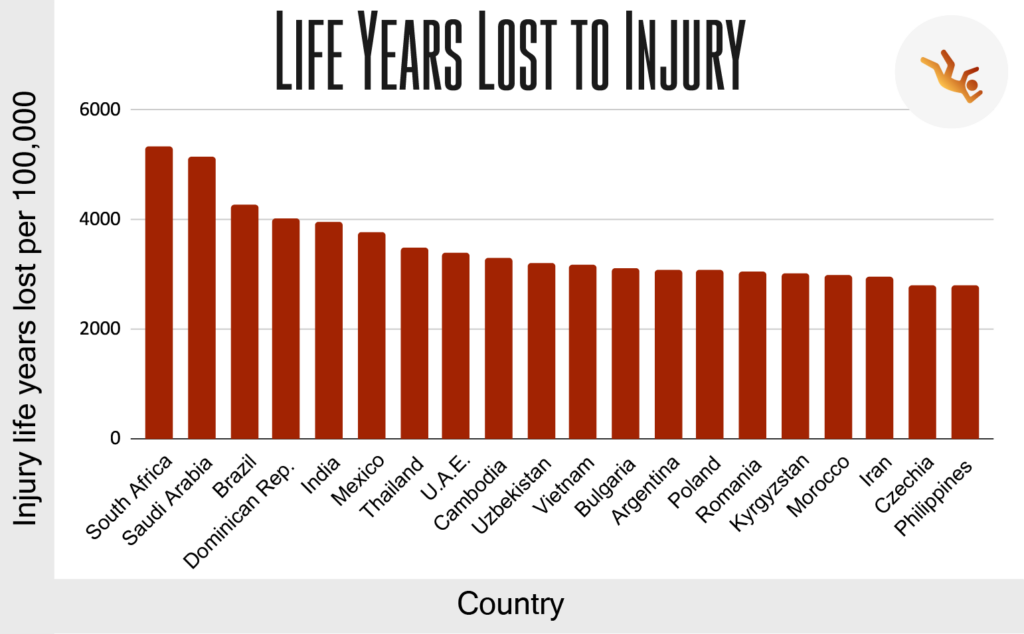
Injury in life is inevitable. You can’t prevent a broken arm or a sprained ankle anywhere in the world, but some regions are more prone to accidents or injury. This can be for various reasons, including infrastructure problems, inaccessible walkways, poorly maintained hiking paths, and much more.
South Africa has the highest years of life lost due to injuries, with many of those injuries coming from interpersonal violence and road traffic incidents. Saudi Arabia likewise reports many injuries, with most reported injuries affecting young males. These injuries were largely traffic-related.
The countries with the highest number of life years lost to injury are:
- United Arab Emirates
World Risk Index
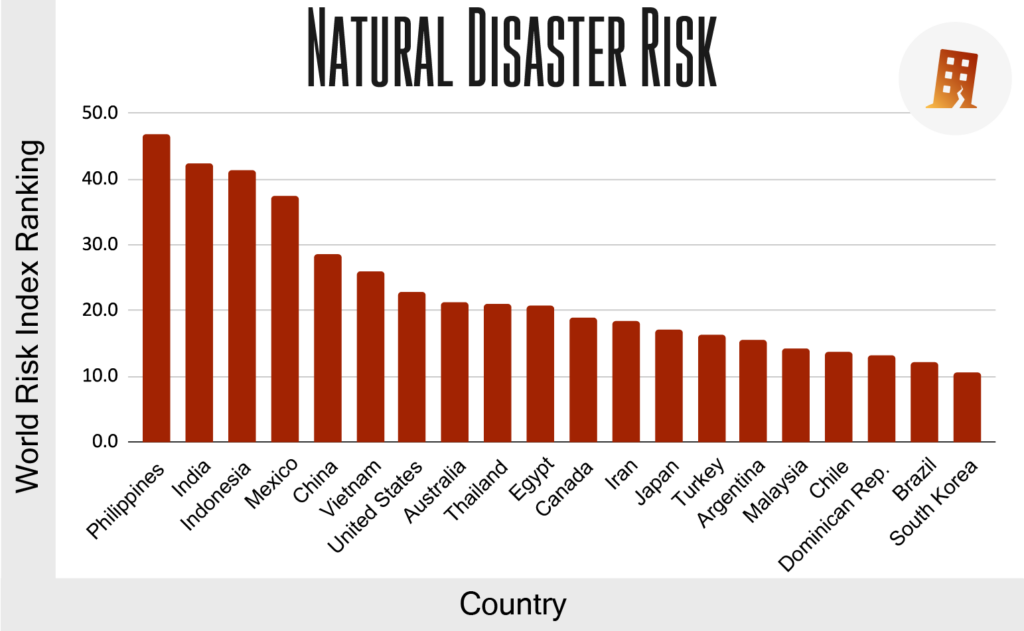
Natural disasters are increasingly becoming a regular part of our modern life due to the impacts of climate change , and it would be unwise to fail to consider the likelihood of natural disasters when picking a travel destination. Not only should the location be factored in, but also the season. For example, many counties have significant and deadly monsoon and hurricane seasons, which can threaten tourists and locals alike.
The most dangerous country when it comes to natural disaster risk and readiness response is the Philippines, according to the annual World Risk Index. The Philippines garnered a score of 46.8. The second and third most dangerous countries are India and Indonesia, followed by Mexico and China. Notably the US and Australia ranked 7th and 8th respectively.
The countries with the highest natural disaster risk:
What Are the Safest Countries for Tourists to Visit?
Based on data for 50 of the most-visited countries in the world, these are the fifteen safest countries for tourists and their Travel Safety Index scores:
- Netherlands
- Switzerland
- United Kingdom
- Czech Republic
#1 Safest Country: Singapore

According to our index, Singapore is the least deadly country for tourists. With a very low homicide rate, road death rate, and natural disaster risk, Singapore is an excellent choice for travelers in terms of safety.
What makes Singapore so safe? Well, crime does not pay in Singapore. The consequences for committing crimes in Singapore are incredibly high, even for “smaller” crimes. This, combined with high surveillance and police presence, makes Singapore the world’s safest country for travel.
This, of course, doesn’t mean you shouldn’t still take universal safety precautions, even in Singapore. For some top travel safety tips, see the end of the article.
#2 Safest Country: Denmark

Denmark’s high safety ranking likely won’t come as a surprise to those familiar with Denmark’s reputation. The low crime rate is often attributed to strong social safety nets that keep its citizens out of poverty, which decreases petty crimes like theft and pickpocketing. Denmark also has a robust police presence, a (relatively) transparent government, and high-quality technological surveillance, which makes Denmark an uncommonly safe place to live and travel.
This level of safety and community trust made Denmark go viral recently when people on social media discovered footage of Danish mothers and fathers leaving their newborns outside to sleep in their strollers while the parents go into shops and cafés. This is a common practice and is often believed to help babies and infants sleep comfortably and develop better immune systems. The idea of trusting the general public with an infant seems like madness in many other parts of the world. This goes to show the level of safety and transparency within Denmark.
Tips for staying safe while traveling, no matter the destination

- Never travel without doing your research – Each destination, from the most to the least deadly, will have its share of challenges and hurdles. Looking up common scams in your destination city or country will help you stay sharp and mindful of dangerous tactics.
- Check the natural disaster risk for your region – Many places around the world, from Louisiana to Mumbai, are more prone to natural disasters at certain times of the year. Knowing if your destination is experiencing monsoon season, hurricane season, extreme heat or cold, and other potentially dangerous natural disasters will keep you and your family stay safe and help you avoid potentially high-risk areas.
- Practice universal safety precautions – Just because you might be in a “safe” country, don’t let your guard down. Crime, unsanitary conditions, and injuries can happen anywhere, and tourists are often targeted everywhere in the world.
- Invest in high-quality safety travel gear – Things like RFID neck wallets, money belts, and sturdy luggage locks will help keep you and your family’s items safe around pickpockets.
- Register your trip with your local embassy – Your government having a way to find you and help remove you from a dangerous situation is incredibly important. If you plan to travel internationally, see if your country has a way to report your trip before embarking on your adventure. The United States has STEP (Smart Traveler Enrollment Program), Canada has Registration of Canadians Abroad, and other countries have equivalent programs for their citizens.
- Save your embassy’s information – Speaking of embassies, know your country’s embassy information before traveling internationally. Whether you write down the embassy phone number and address on a piece of paper or add it to your phone’s cloud service, having a way to access your country’s representative embassy while traveling abroad could be lifesaving in the event of an emergency.
- Travel with a friend or family member – Solo travel can be a fun, freeing activity. But it can also open you up to more potential risks. Traveling with friends and family is often a safer alternative to solo travel.
- Don’t keep all of your cash in one place – Having all your funds in a central location could be disastrous should an emergency arise. If you get robbed, your wallet goes missing, or you get separated from the rest of your group, it’s essential to have emergency money to fall back on. Keeping extra cash in your phone case, in your shoe, or somewhere else inconspicuous may seem silly, but it could bail you out in a pinch.
- Be careful where you eat – Not all countries enforce strict sanitation standards regarding food and beverages. Check reviews, go to restaurants suggested by friends and family, and practice precautions when eating out (particularly when it comes to street food).
- Know the risks of your destination and travel accordingly – If, for example, you do some research and find that your destination may not have the safest water, you can bring a Grayl or filter bottle. Knowing what to expect by planning ahead can save money (and discomfort) during the trip.
- Have your medical information (securely) available – Nobody wants to think about the possibility of hospitalization or injury while on vacation, but it can and does happen. Memorizing your blood type, having a list of your medications and dosages, as well as any allergies and other pertinent medical info available for medical professionals to review is critical should an emergency arise.
- Hire a guide – While guides can’t reasonably protect you from all danger, they can use their local knowledge of the country to keep you safe. Many guides will provide translation services, ensure you eat in safe restaurants, and can help you avoid dangerous neighborhoods.
- Keep a family member or friend aware of your travel plans – Having a friend or family member back home know your travel itinerary could be incredibly helpful if something goes wrong.
- Listen to your intuition – If something doesn’t feel safe, seems too good to be true, or otherwise sets off “alarm bells” while traveling, trust your instincts and remove yourself if it is safe to do so.
- Always travel with insurance – You never know what can happen while traveling. Whether you’re traveling domestically or across the world, it’s always better to err on the side of caution. Travel insurance is often fairly inexpensive ( often costing less than $100 for a two-week trip ) and can save thousands in emergency expenses. See some of our guides here: Antartica , Belize , Costa Rica , Cruise , Dubai , and Europe .
- United Nations Office on Drugs and Crime
- World Health Organization
- Our World in Data
- WorldRiskReport
- CNN: Seeing the new India through the eyes of an invisible woman
- Business Tech: New data shows shocking rise in violent crime in South Africa
- CNET: India spent $30 billion to fix its broken sanitation. It ended up with more problems
- The Economist: Why it is so hard to fix India’s sanitation
- Borgen Project: 10 Facts about Sanitation in South Africa
- National Library of Medicine: The high burden of injuries in South Africa
- National Library of Medicine: Burden of traumatic injuries in Saudi Arabia
- ~ New York City
- Middle East
- Career & Money
- Living in NYC
- Inspiring Women
- Empowerment
- Women’s Issues
- #HilaryRowland
- Our History
- Our Content
- Our Mission
- Meet Hilary
Top 10 Most Dangerous Travel Destinations
The most incredibly dangerous places to visit — and why.
In case you hadn’t heard, there’s a new breed of travelers. They’re known as the “anti-tourist”. Instead of going to beautiful places promoted for tourism, these free-spirits love to visit areas that are not only discouraged by travel advisories, but are also deemed “forbidden”. The more the media makes a fuss about the place, the more the trip becomes exciting. With no police assistance or ambulance to a local hospital, they want to encounter danger, up close and personal.

The anti-tourists find thrill primarily from the difficult and dangerous experience, rather than from being in the new environment.
Remember that invincible feeling you had when you were a teenager? When you were excited to see the gritty and more dangerous places of the world? Well, for some people that feeling doesn’t dissipate, but grows stronger over time.
A travel psychology expert named Michael Brein identifies this behavior as “macho tourism”. When danger is being reported in a particular part of the world, the anti-tourists then desire to visit that place in order to A) prove that they’re tougher than the rest of us, and/or B) get an adrenaline rush and feel more alive. Remember the time of your childhood when your mother told you not to go to a seemingly creepy place, but you went anyway? And then you came home safe and said “Look Mom, I made it”? The anti-tourists are said to be relieving that early feeling of triumph.
No big surprise, but Instagram and Facebook may have contributed to this anti-tourism behavior. When people are able to travel to the baddest badlands around the world without being harmed, they are most likely to brag about it on their social networking sites, which encourages their ‘friends’ and followers to attempt similar feats for bragging rights.

When visiting the forbidden, the anti-tourists risk being kidnapped for ransom or held captive by terrorists; they often get caught in wars and strife arising in unstable territories, get lost and killed in deadly terrains, encounter wild and deadly animals, get robbed and or murdered by opportunistic local serial thieves and killers, or become infected with exotic diseases. Sounds fun, right? (jk!) But for as long as the craving for excitement exists, the anti-tourists will continue to ignore cautionary travel alerts, and will take critical travel advisories as a “go” signal.
There are also anti-tourists who risk their lives for a “personal mission”. Maria Rychlicki, a municipal government worker in Los Angeles, spent time in Lebanon, Egypt, Israel and Columbia when these countries were on State Department alert lists. She knows she has been picking trips that are on advisory lists, but she sees this as an opportunity to represent America. “Visiting countries on the advisory list means I am not spending money to meet other American tourists. I have often felt I am a good ambassador of the American people. I have been, at times, the first American that people (in a foreign land) have met,” she claims.
We’re not encouraging people to travel to the “forbidden” and risk being kidnapped or killed, but if you are one of the few travelers who love to go to places that other people are afraid of, then these dangerous areas are ideal for you. Enter at your own risk.
Pages: 1 2 3
Originally from Denver and now living in NYC, Angie has been writing since she was small. She lives in the Flatiron district with her partner Tanya and their mutt Sparky (always adopt!) In her spare time she loves to paint (mostly abstract) and talk to random people on the street to find out what's interesting to them.

You may also like...

Reader Discussion: 114 Comments
VIPIN SAINI
What an amazing article. In love with all these beautiful photographs. Many of these places are on my travel bucket list for a very long time. Gonna start ticking them off this year. Thanks for sharing this. Looking forward to reading more of these awesome travel blogs 🙂
Joanne Moran
I don’t want to get kidnapped or anything like that and then get sold to white slavery mafias!!! Remember the movie Taken?!
Dawn Gonzales
I bet most people who are saying that those countries are truly dangerous and shouldn’t be visited are yet to visit those places themselves.
Isadora Oliver
Learning about those unsafe places will put off the myths that surround them, and it gives a chance to humanize the people there again.
Violet Bell
Advanced knowledge of survival skills is what one needs in able to outlast any difficult situation one may encounter in those unsafe places.
Cindy Buford
West Bank and Gaza strip is Israel are areas that can be considered dangerous because of the tension on the borders with Israeli government forces.
Alexis Stevenson
What are these youngsters trying to achieve anyway? Are they trying to make a mark in this world or just trying to be famous on social media? If by any chance you die, I bet none of your followers actually care.?
Bernice Perry
Never travel alone as a woman. Not because we can’t do it, but because we are more likely to be targeted than most men. But whether we are a man or a woman, it is always practical not to travel alone in a risky place.
Peggy Ortiz
It’s always good to travel in pair or groups because when a problem arises, there are more chances that someone can find help.
Angelica Prouty
Anti-tourists must be street smart. One should never wear a Rolex and carry a big camera hanging around the neck. Observe how people act, their gestures and body languages to know how to respond accordingly.
Going to precarious places is no fun at all. Imagine having to watch over your shoulder in every minute? How can you appreciate the time you are spending on that place?
Your email address will not be published. Required fields are marked *
Follow @Urbanette!
Behind the scenes:.

Monthly Newsletter
Popular topics, trending now.

Olivia Wilde on Living a Fulfilling Life
Olivia Wilde tells Urbanette what makes her tick -- and why you should care.

The Story of 5 Women and Their Incredible Inventions
Their amazing stories ...and the men who stole all the credit.

Angelina Jolie on Her Insecurities & Finding Happiness
How she gets through hard times, her fears, and how she finds happiness.

5 Signs He’s Lying To You
How to know what you're really getting from him.

My Adventures in Speed Dating
Three personas, three events. The experiment begins.

6 Easy Ways to Boost Your Self-Confidence
How to make yourself feel like you can conquer the world in six easy steps. No, Really!

Editor’s Pick of the Month

Advice for My 20-Something Self
If I could give my younger self some advice, I’d tell her this...
All content is strictly copyright. Contact us for permission.
A Dangerous Business is an award-winning travel blog aimed to help people plan their dream trips all around the world. I'm here to help with printable itineraries and checklists to help you make that next bucket list adventure a reality!
New Zealand Road Trip Printable
California Desert Road Trip Printable
Portugal 10-Day Printable Itinerary
Northern USA Road Trip Printable
Southwest Road Trip Printable
Florida Keys Printable
Oregon Road Trip Printable
Ireland Road Trip Printable
Iceland Road Trip Printable

Travel Safety Tips for College Students Exploring New Destinations

Your Checklist For Visiting Austria’s Christmas Markets
Exploring the World’s National Dishes: Which Country Eats the Healthiest?

The World’s Largest Tourism Spenders in 2023: A Global Overview
- Yellowknife
- Yacht Adventures
- WorldTravel
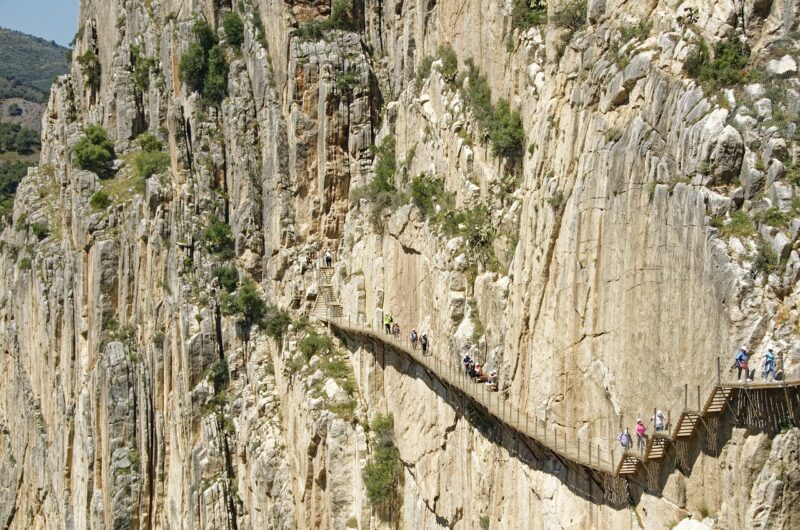
The 15 Most Dangerous Tourist Attractions in the World
In a world brimming with breathtaking landscapes, ancient wonders, and adrenaline-pumping adventures, some tourist attractions beckon the daredevils, the thrill-seekers, and the intrepid explorers.
These are the destinations where the line between excitement and danger blurs, where the allure of nature’s majesty is matched only by the risks it presents.
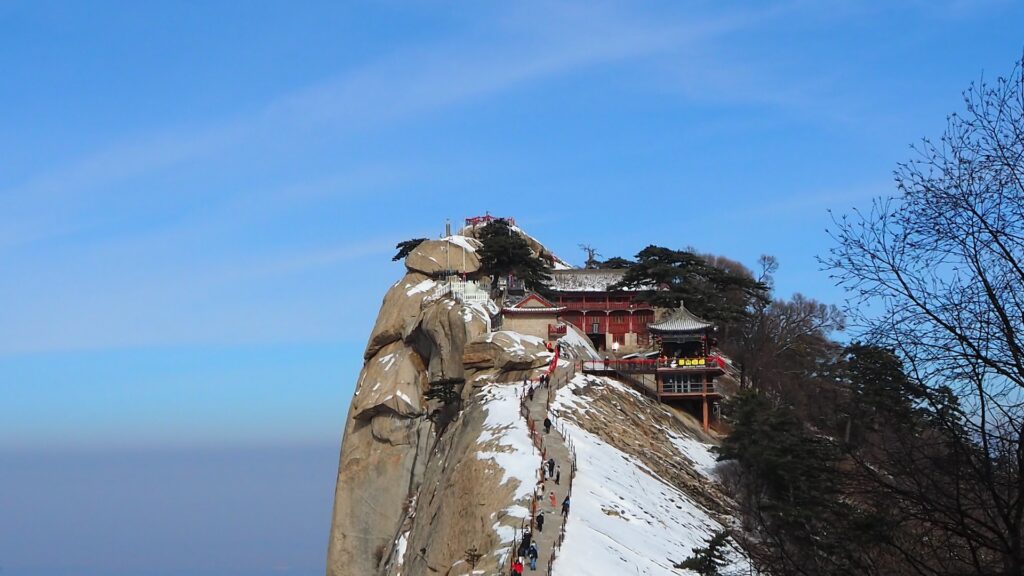
From towering peaks and treacherous roads to the depths of the ocean and the heart of dense jungles, these are the most dangerous tourist attractions in the world. Each one holds a unique peril, demanding respect for the forces of nature and a keen sense of adventure.
In this article, we delve into the heart of danger, exploring the main risks that define these captivating destinations, reminding us that while the world is vast and beautiful, it can also be unforgiving and relentless.
1. Mount Everest, Nepal/Tibet
Mount Everest, the pinnacle of adventure for mountaineers worldwide, conceals its deadliest secret in plain sight: the main danger here is the unforgiving interplay of extreme altitude and brutal weather conditions.
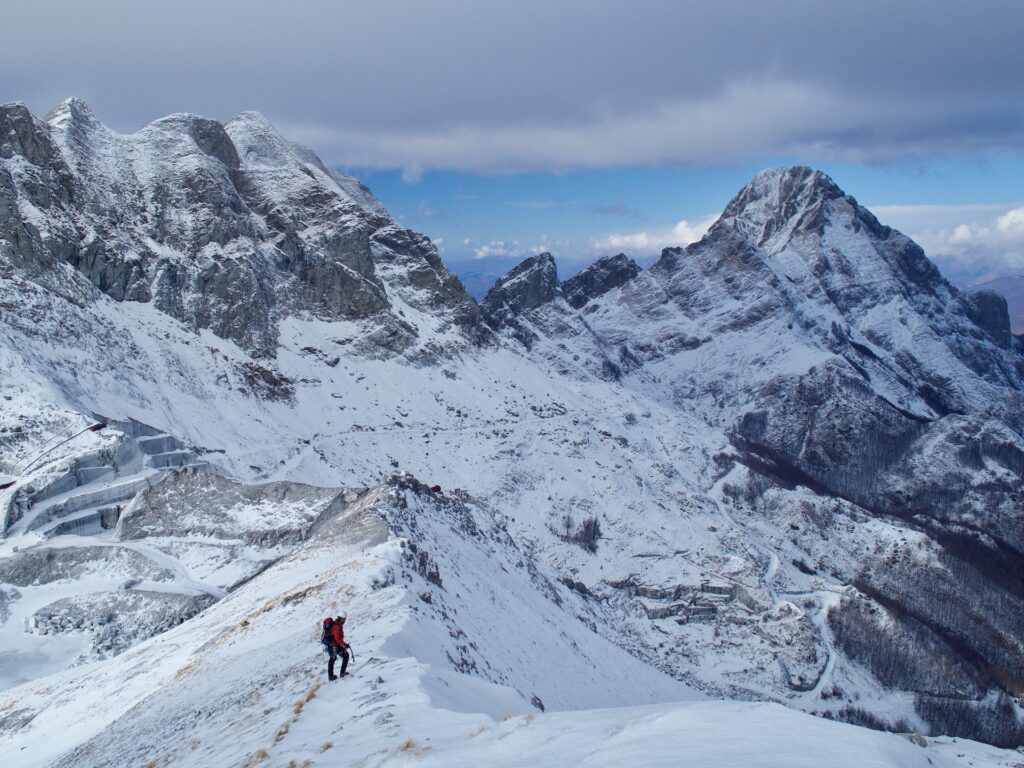
Standing at a staggering 29,032 feet (8,849 meters) above sea level, climbers brave the treacherous ascent through the “Death Zone” where oxygen is scarce, and the human body deteriorates rapidly. Altitude sickness, the most prevalent threat, can manifest as nausea, dizziness, and, in severe cases, death.
The risk is further compounded by the looming specter of avalanches, which can strike without warning, and the bone-chilling frostbite that lurks in the frigid cold. Scaling Everest is an epic struggle against the elements, where the consequences of nature’s fury are gravely real.
2. Death Road, Bolivia
Bolivia’s Yungas Road (one of the most dangerous in the world ), colloquially known as Death Road, offers a spine-tingling adventure through the picturesque Andes. Yet, beneath its scenic beauty lies an ominous peril.
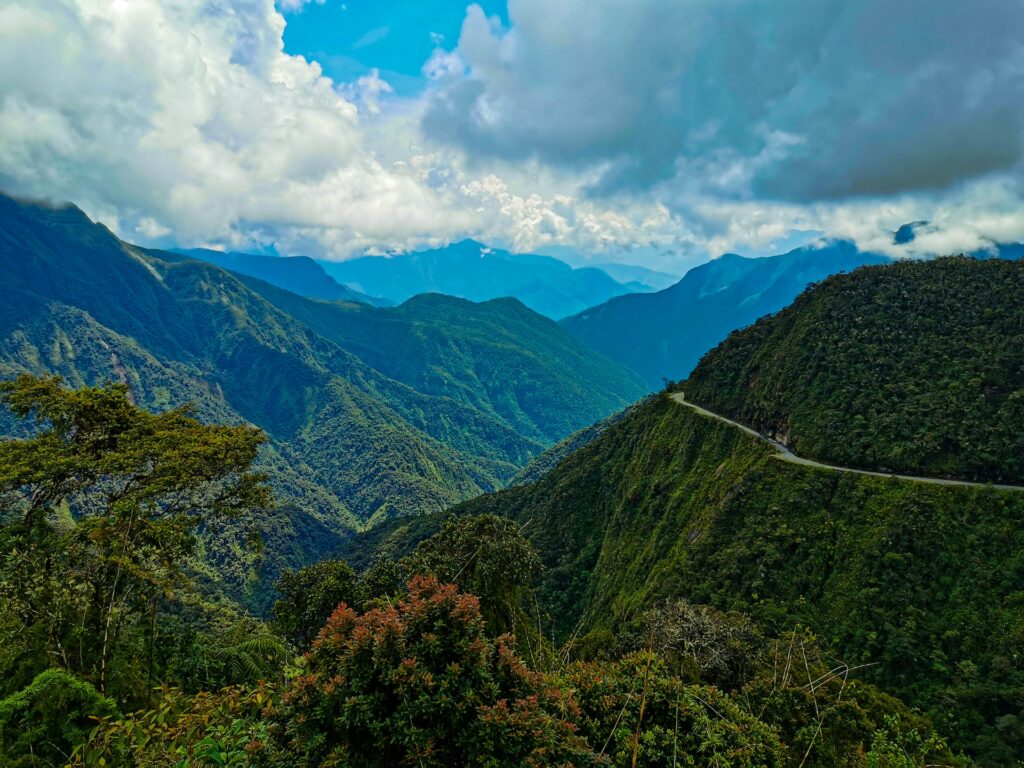
The main danger is the road itself—a serpentine pathway, barely wide enough for one vehicle, that winds perilously along steep cliffs. With drops of up to 2,000 feet (600 meters), the margin for error is razor-thin.
Accidents are frequent, and fatalities are not uncommon. Cyclists, thrill-seekers who tackle this treacherous route, must grapple with the constant threat of veering off the edge. In this high-stakes game of brinkmanship, Death Road tests nerve, skill, and the laws of gravity.
3. The Devil’s Pool, Zambia
Victoria Falls , a roaring natural wonder between Zambia and Zimbabwe, is home to The Devil’s Pool—an alluring but precarious attraction. Here, the main danger is the omnipresent risk of being swept over the precipice by the formidable currents of the Zambezi River.
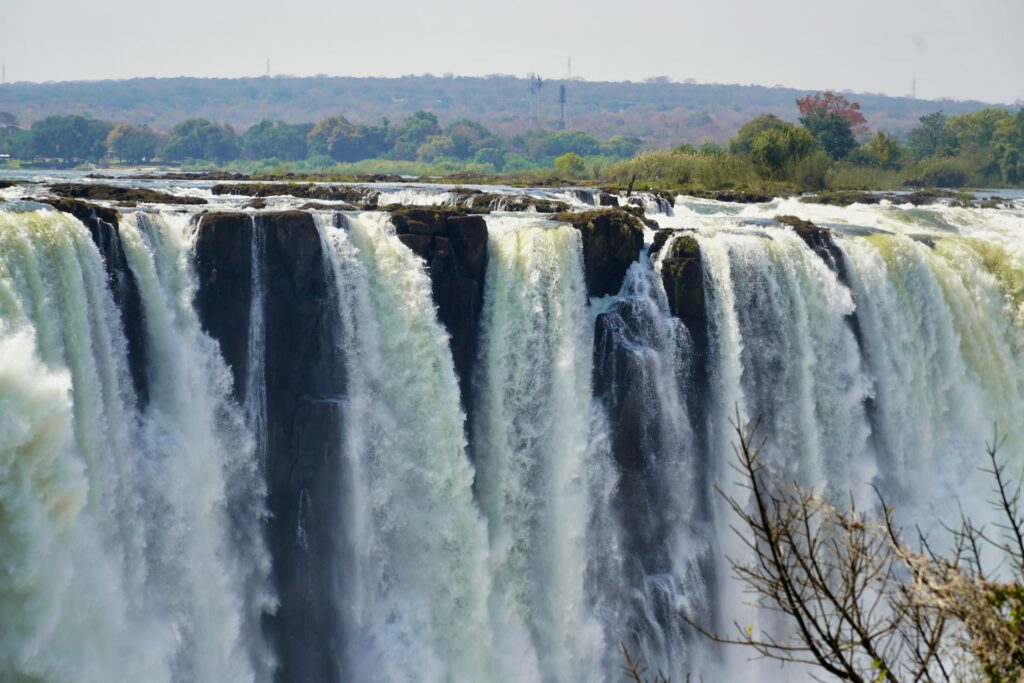
The Pool lures brave souls who seek to peer into the abyss from the very edge of the falls. But this heart-pounding encounter with nature’s force demands the utmost caution. Visitors must navigate slippery rocks and powerful currents to access the pool.
A single misstep could spell disaster, making it a destination where thrill-seekers must tread carefully and respect the raw, untamed power of Victoria Falls.
4. El Caminito del Rey, Spain
El Caminito del Rey, situated in the heart of Spain ‘s Andalusian mountains, offers breathtaking views that come at a perilous price. The main danger here lies in the high, narrow walkway that clings precariously to steep cliffs. This pathway, which was once in a state of disrepair, gained notoriety for its harrowing accidents.
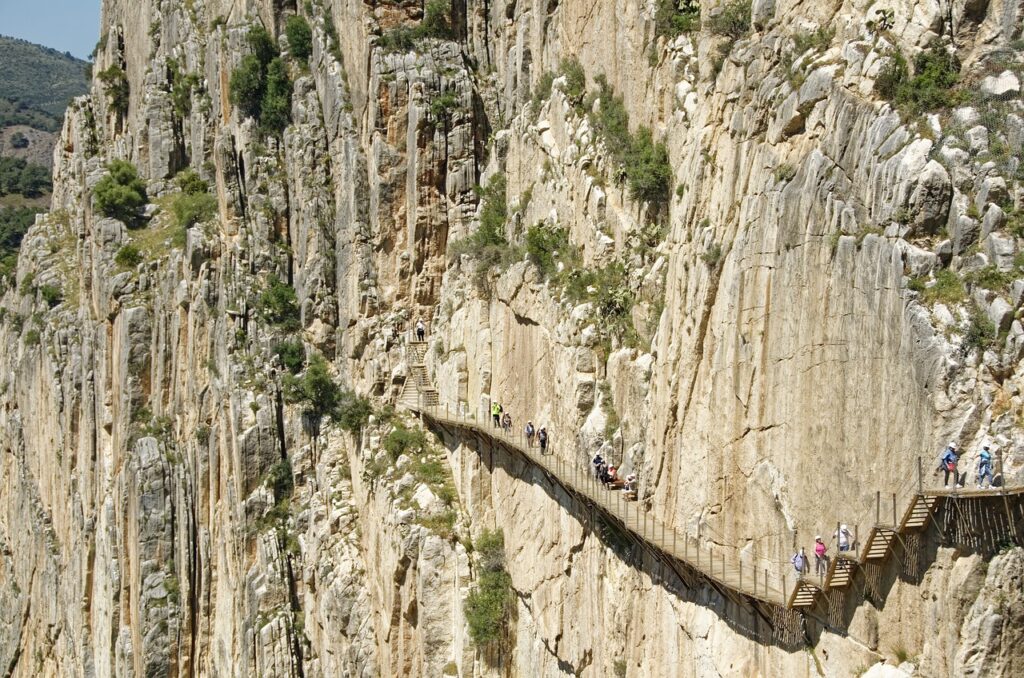
Although it has since undergone extensive renovations to enhance safety, it remains a destination where the specter of vertiginous drops and dizzying heights is ever-present.
Visitors must summon their courage to traverse this dizzying trail, where one false step could result in a fatal plunge into the abyss.
5. Crocodile Farm, Australia
Australia ‘s Crocodile Farm may be a magnet for thrill-seekers, but the main danger lurks just beneath the surface. Here, the proximity to saltwater crocodiles, known for their aggression and lethality, poses an imminent threat.
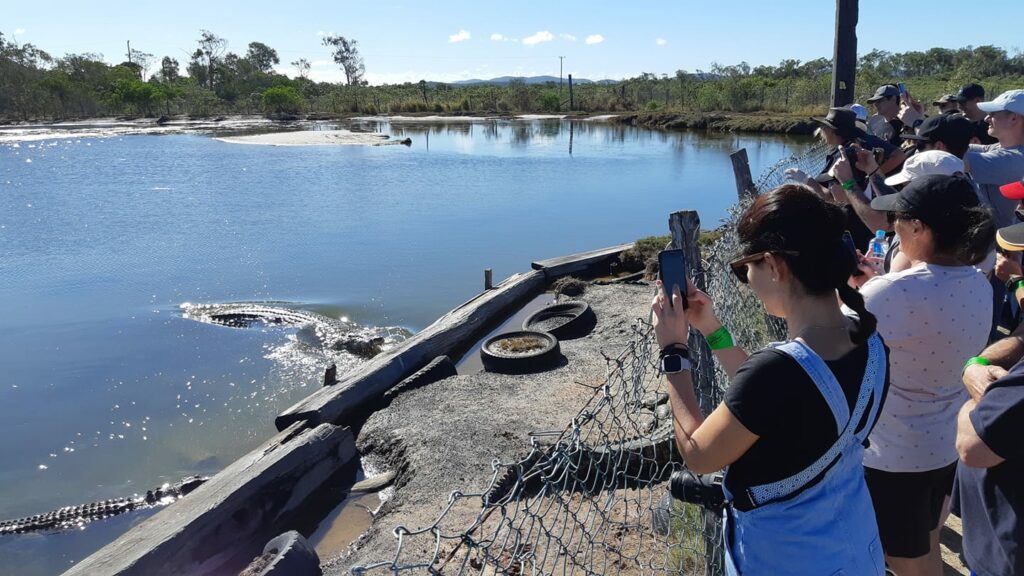
These apex predators are notorious for their lightning-fast strikes, capable of overpowering even the most vigilant of visitors. To get up close and personal with these reptilian giants is an adrenaline-pumping experience, but it’s a dance on the edge of danger.
Maintaining a respectful distance and adhering to stringent safety protocols are paramount when venturing into the crocodile’s lair.
6. Chernobyl Exclusion Zone, Ukraine
The Chernobyl Exclusion Zone, a haunting relic of the world’s worst nuclear disaster, offers a sobering experience fraught with danger. The main peril here is not immediate, but long-lasting: exposure to radiation. Decades after the catastrophic explosion at the Chernobyl Nuclear Power Plant, the area remains contaminated, and visitors risk harmful radiation exposure.
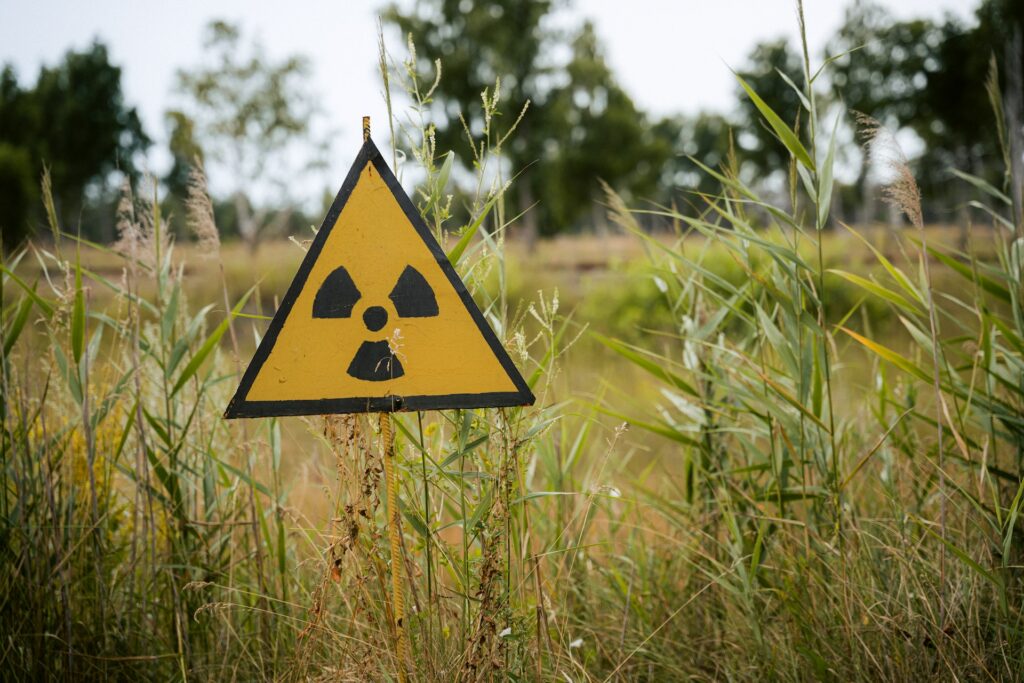
Although guided tours have strict safety measures, the specter of a silent, invisible menace looms. The very ground, air, and structures retain traces of radiation, making this journey a somber reminder of the devastating consequences of nuclear accidents.
It’s a destination that demands caution, respect for the environment, and adherence to all safety guidelines to mitigate the inherent risks.
7. Volcano Boarding, Nicaragua
Nicaragua’s Volcano Boarding is an exhilarating adventure sport that comes with an adrenaline-pumping peril. The main danger here is the high-speed descent down steep volcanic slopes. Armed with a wooden board, daredevils hurtle down active volcanoes, reaching speeds of up to 50 miles per hour.
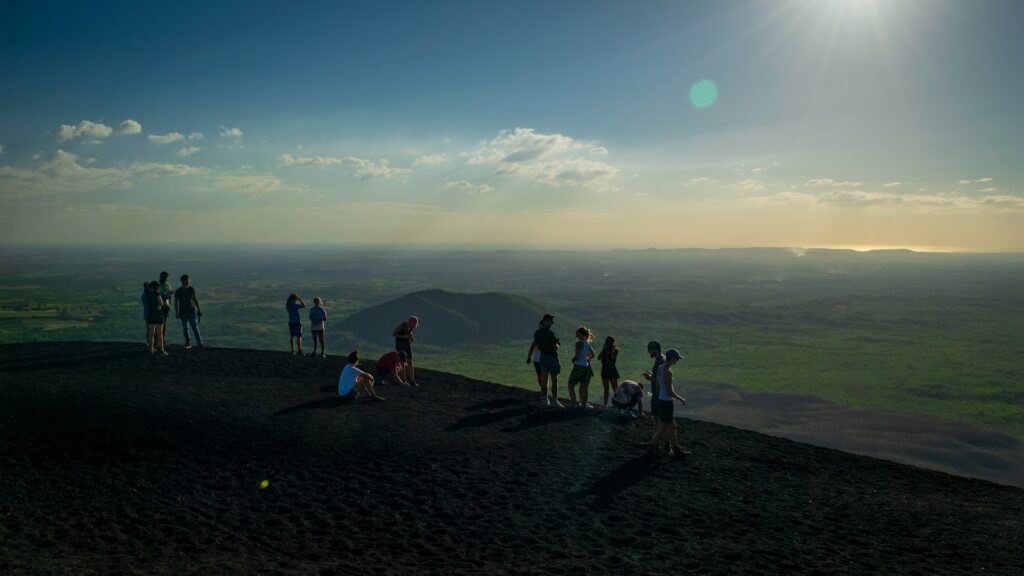
While the thrill is undeniable, the risk of injury looms large. Volcanic terrain is unpredictable, and a sudden rock or uneven surface can lead to accidents. Protective gear is essential, but even with it, participants are not immune to the inherent dangers of this fiery ride.
Volcano boarding is a daring pursuit, where the line between thrill and danger blurs, and where each descent carries the potential for an unforgettable experience or a risky tumble.
8. Running of the Bulls, Spain
Spain’s iconic Running of the Bulls, part of the San Fermín festival in Pamplona, is a heart-pounding event synonymous with danger. The main peril lies in the potential for runners to be gored or trampled by the charging bulls. Participants sprint through narrow streets, attempting to stay ahead of the stampeding animals.
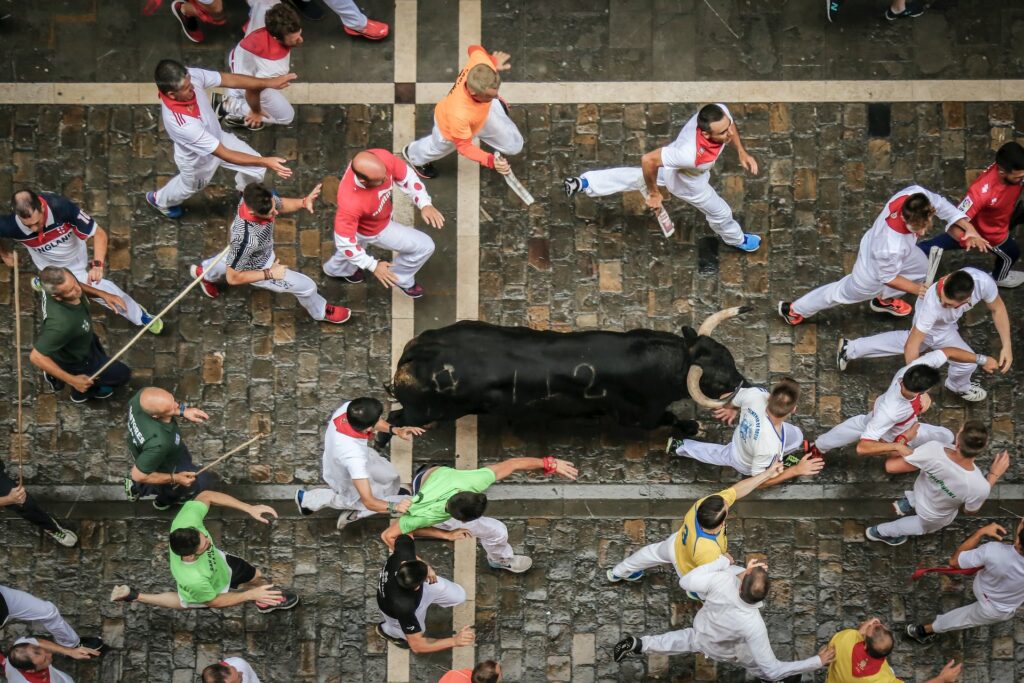
The bulls are massive, powerful, and disoriented by the chaos of the event. Injuries and even fatalities are not uncommon. Despite the rush of adrenaline and the allure of tradition, running is a high-stakes gamble with the potential for grave consequences.
It’s an age-old tradition that has fascinated the world, but it’s also one that demands unwavering respect for the inherent dangers it presents.
9. Cliff Diving in Red Bull Cliff Diving World Series Locations
Cliff diving in Red Bull Cliff Diving World Series locations is a breathtaking spectacle that tests the limits of human courage. The main danger in this awe-inspiring sport is the risk of hitting rocks or miscalculating a dive from extreme heights.
Competitors dive from heights of up to 27 meters (88 feet) into the open ocean, executing acrobatic feats before plunging into the water.
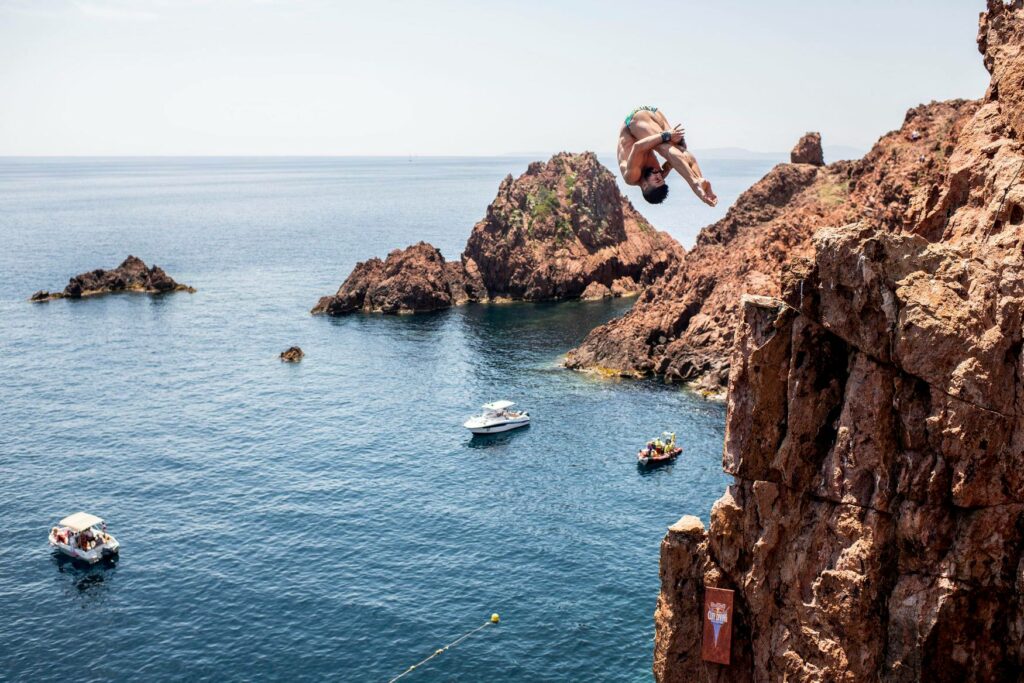
The precision required is staggering, and the margin for error is minuscule. One misjudgment in timing or positioning can result in painful and sometimes life-threatening injuries.
The thrill of conquering gravity draws athletes and thrill-seekers alike, but the sport’s unforgiving nature reminds participants that, in the world of cliff diving, danger is ever-present, and respect for its power is paramount.
10. Cage Diving with Great White Sharks, South Africa
Cage diving with Great White Sharks in South Africa is a heart-pounding adventure that brings you face-to-face with one of the ocean’s most fearsome predators. The main danger here is the proximity to these massive, predatory sharks, even when you’re safely ensconced in a cage.
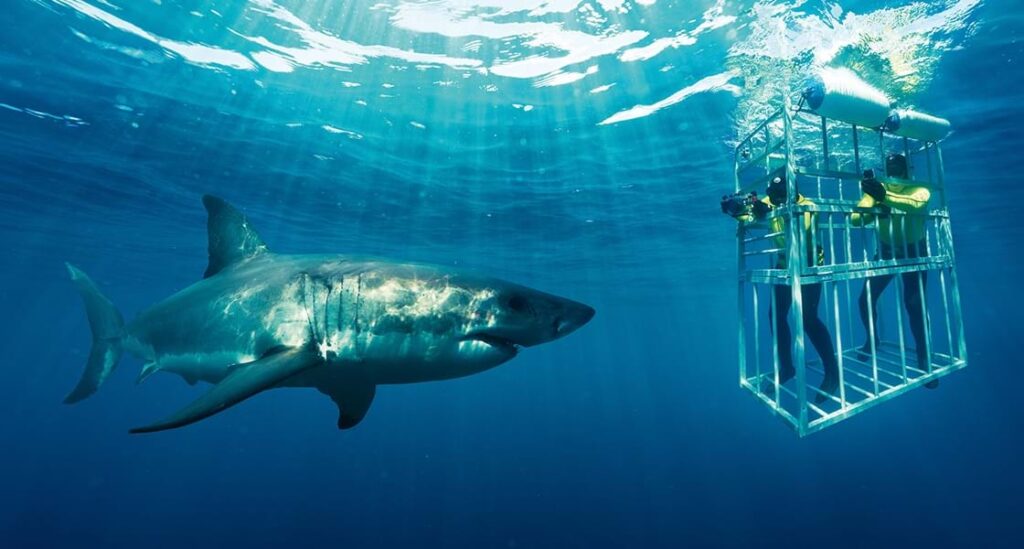
While the cage provides a barrier between you and the sharks, it’s a heart-stopping experience as these apex predators circle, attracted by bait. Though fatalities are rare, the unpredictability of these creatures and the inherent risks of being in the open ocean with them make this a truly dangerous attraction.
It’s a thrilling venture that tests your nerves and leaves you with an unforgettable adrenaline rush.
11. Machu Picchu, Peru
Machu Picchu, the awe-inspiring Inca citadel nestled high in the Andes mountains of Peru , holds a hidden danger that often surprises visitors. The main peril here is the risk of altitude sickness. Sitting at an elevation of around 7,970 feet (2,430 meters), the thin air can wreak havoc on the unacclimated.
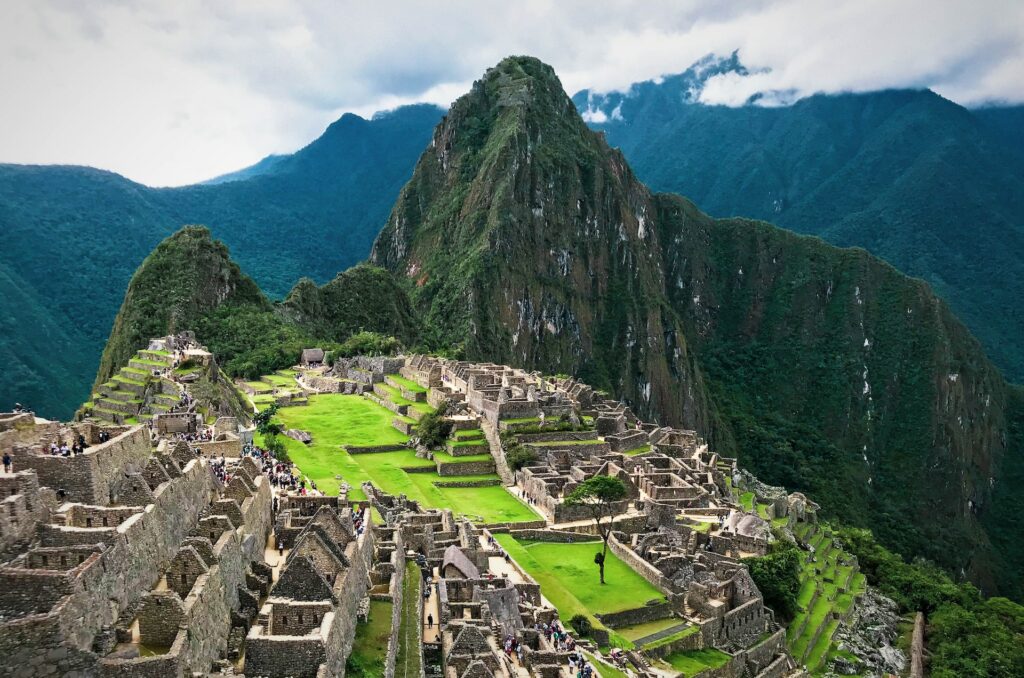
Symptoms include nausea, dizziness, and headaches, and in severe cases, it can lead to more serious health issues. To fully appreciate the beauty and history of Machu Picchu, visitors must be aware of the altitude’s potential impact and take measures to acclimate or seek medical attention if necessary.
It’s a destination where the breathtaking views are complemented by the need for caution in the high-altitude environment.
12. Mount Huashan, China
Mount Huashan in China is renowned for its treacherous ascents and death-defying plank paths. The main danger here is the precarious cliffside plank path, which clings to the mountain’s steep cliffs. With sheer drops on one side and challenging weather conditions, including strong winds and rain, navigating this path can be a harrowing experience.
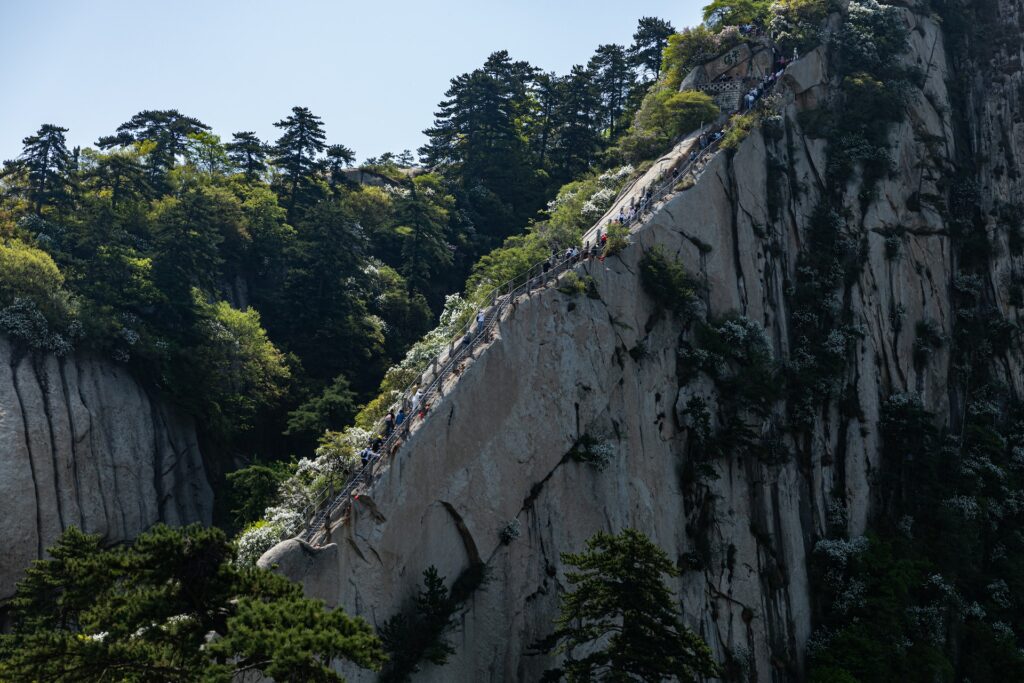
The plank walk involves shuffling along wooden planks secured to the rock face, holding onto chains for dear life. While there have been safety improvements in recent years, it remains a destination where thrill-seekers test their courage and balance, knowing that even a momentary lapse in concentration can have dire consequences.
Mount Huashan’s allure lies in its perilous beauty, making it an attraction where danger is an integral part of the journey.
13. Madidi National Park, Bolivia
Madidi National Park in Bolivia offers an immersive adventure into the heart of the Amazon rainforest. However, the main danger here is the formidable presence of venomous snakes, spiders, and other wildlife that call this dense jungle home.
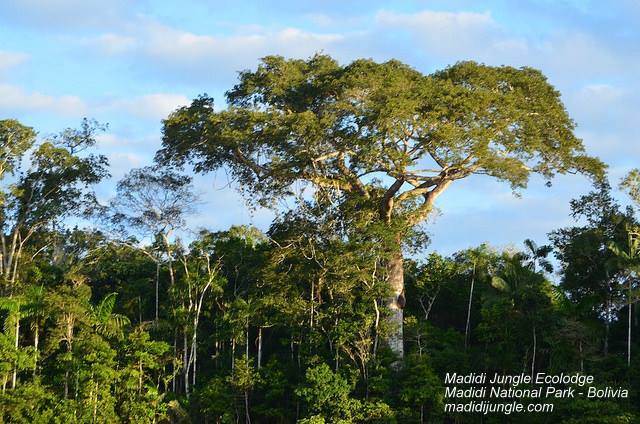
As you trek through the lush foliage and winding rivers, the hidden threats become apparent. Encounters with deadly snakes like the bushmaster and venomous spiders like the wandering spider can quickly turn a nature expedition into a perilous encounter.
While guided tours can mitigate some risks, the wild and untamed nature of this rainforest ensures that danger lurks in the shadows. Madidi National Park is a testament to the beauty and ferocity of nature, where every step brings both wonder and caution.
14. Danakil Depression, Ethiopia
The Danakil Depression in Ethiopia is one of the most inhospitable places on Earth. The main danger here is twofold: extreme heat and the relentless fury of volcanic activity . Temperatures regularly soar to unbearable heights, making dehydration and heatstroke real threats.
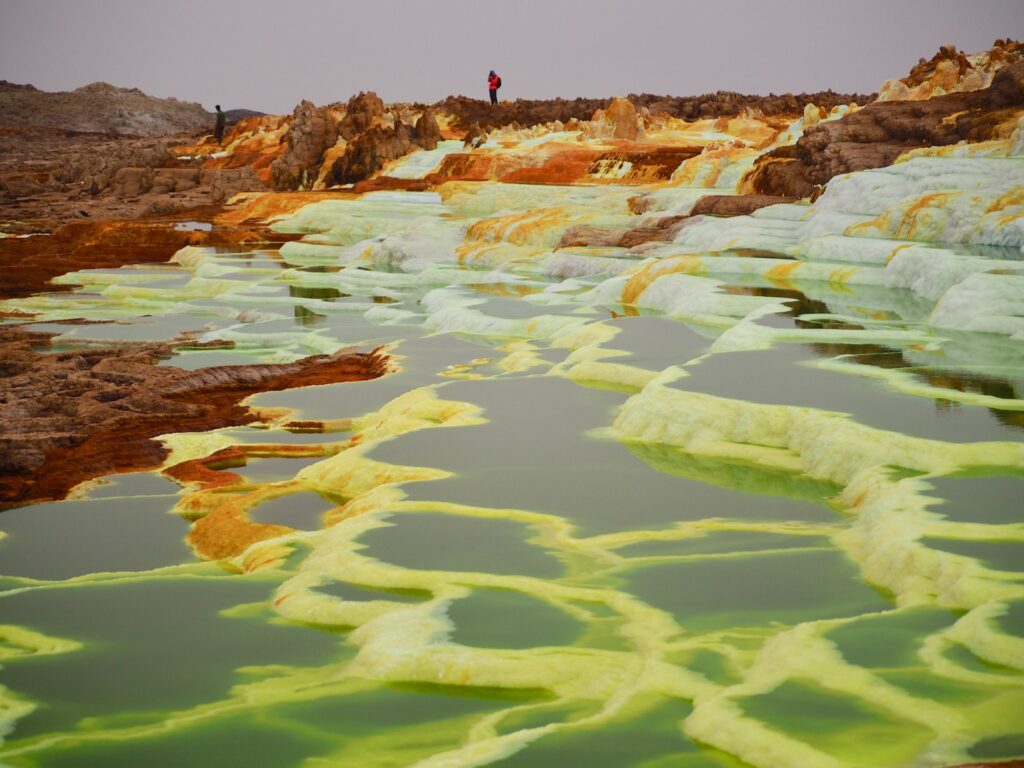
Amid this geological inferno lies lava lakes, sulfur springs, and scorching geysers. The volatile landscape poses risks of eruptions and toxic gas releases. To venture into Danakil is to tread on the edge of Earth’s violent forces, where survival demands meticulous preparation, protective gear, and a deep respect for the unforgiving environment.
The allure of witnessing this geological spectacle is undeniable, but it’s a destination that commands the utmost caution.
15. Aletsch Glacier, Switzerland
Aletsch Glacier, the largest glacier in the Alps, offers a mesmerizing vista of icy majesty. However, the main danger here is the deceptively tranquil surface concealing treacherous crevasses. Hikers and climbers who traverse this glacier risk falling into hidden chasms.
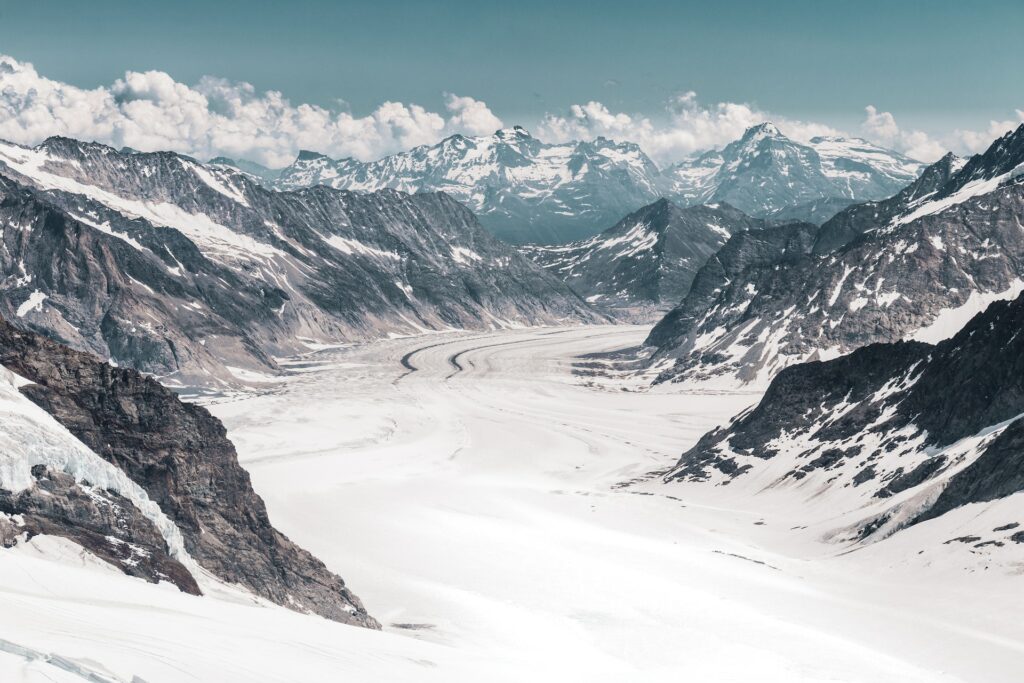
The shifting ice can create unpredictable conditions, and even experienced mountaineers are not immune to the hazards. A fall into a crevasse can be deadly or result in serious injury. Proper equipment, training, and guides are essential for those who wish to explore this icy wonderland.
Aletsch Glacier serves as a reminder that nature’s beauty often conceals formidable challenges, and those who venture into its depths must do so with the utmost care and preparedness.
Most Dangerous Tourist Attractions Summary
As we conclude our journey through the world’s most dangerous tourist attractions, we are left with a profound appreciation for the audacity of the human spirit. These destinations, marked by their perils and the courage of those who explore them, serve as reminders of the boundless wonders our planet holds and the responsibility we bear as visitors.
Whether you’re drawn to the dizzying heights of mountains, the depths of the oceans, or the heart of dense jungles, these attractions challenge you to venture beyond your comfort zones. They remind us that the pursuit of adventure, of the extraordinary, often comes with inherent risks.
While we embrace the thrill, let us also remember the importance of safety, respect for the environment, and responsible tourism. In the world’s most dangerous places, the line between awe and peril is fine, and it’s up to each traveler to navigate it with care and reverence.
**Please note that this post may contain affiliate links. When booking through one of our links, we earn a small kickback at no extra cost to you and it’s a big help to keep the site up and running.
- Extreme Travel

Related Posts

7 Best Airport Lounges in the World – and How to Access Them

20 Common Tourist Scams – As Described By Locals

5 Things To Learn When Moving Abroad

The Top Countries With the Hottest Women
53 Best Travel Blogs and Bloggers To Follow (in 2024)

Written by Ankit Singla
3K Followers
Last Updated on:
by Ankit Singla
If you’re searching for the best travel blogs today, look no further.
As always, I created this list to help aspiring travel bloggers learn a thing or two from these established sites.
However, people who are only looking for travel ideas and tips will also enjoy this post.
Without further ado, let’s take a look at the top travel blogs to follow in 2024.

Best Travel Blogs
- Nomadic Matt
- Backpacking Matt
- Adventurous Kate
- The Blonde Abroad
- California Through My Lens
- Dan Flying Solo
- Travel With Lakshmi
- Fluent in 3 Months
- Cheapest Destinations Blog
- Alex in Wanderland
- I Am Aileen
- Wandering Earl
- Be My Travel Muse
- Followtheboat
- Matthew Woodward
- The Opposite Travellers
- We Seek Travel
- Bucket List Journey
- Migrationology
- The Cranky Flier
- Never Ending Footsteps
- A Dangerous Business
- Against The Compass
- Everything Everywhere
- The Longest Way Home
- Global Grasshopper
- Girl Gone Travel
- Oneika The Traveller
- The Adventurists
- Time Travel Turtle
- Hand Luggage Only
- Travel4Wildlife
- The Insatiable Traveler
- View From The Wing
- Uncornered Market
- Jessie On a Journey
- Legal Nomads
- TravelFreak
- The Everywhereist
- Keep Calm and Travel
- Practical Wanderlust
- Expert Vagabond
- The Voyageur
- Amateur Traveler
- Girl Eat World
- The Adventure Junkies
- A Broken Backpack
- The World Travel Guy
- Life Part 2
1. Nomadic Matt

By: Matthew Kepnes
I have to be honest with you — I love everything about Nomadic Matt .
Everything from his website’s design to his personal writing voice makes for an engaging reading experience. Not to mention that the name “Nomadic Matt” really sticks with me.
Matthew Kepnes, AKA Nomadic Matt, was once a cubicle worker who admittedly wasn’t always a big traveler. On his first trip back in 2004, he went to Costa Rica where his perspective in life transformed forever.
A single trip — that’s how easy it is to fall in love with travel.
Today, Matthew continues living the life he was born for. He primarily blogs about travel tips, encompassing topics like how to save for a trip and things to do in Singapore.
Blog Topics
- Travel Insurance
- Travel planning
- Saving money on travel
- Travel gear
- Destinations
Monetization Strategies
- Display advertisements
- Superstar Blogging online course
- Affiliate marketing ( Check: Best Travel Affiliate Programs )
2. Backpacking Matt

By: Matt Kyhnn
I think there’s something about the name “Matt” that raises a person’s affinity for traveling.
Backpacking Matt , owned and run by Matt Kyhnn, is a travel blog that has similar vibes with Nomadic Matt. It has a simplistic design, a memorable content tone, and striking travel photos that bring the blog’s stories to life.
Matt Kyhnn also leverages videos — providing his audience a more immersive way to enjoy his content.
Fresh out of college, Matt simply decided that he won’t settle for a 9-5 job. Instead, he spent months working and traveling across Ireland, Scotland, and other regions in mainland Europe.
He then booked a one-way ticket to New Zealand where he now resides. In addition to his blog, Matt also runs his own travel planning and booking website — Planit NZ.
Blog Topics
- Affiliate marketing
- Planit NZ travel planning and booking services
- Brand collaborations
3. Adventurous Kate

By: Kate McCulley
Kate McCulley, AKA Adventurous Kate , is a travel blogger with lots of adventures to tell.
She’s been to 83 countries, seven continents, and plenty of experiences to help women appreciate the traveling life.
Kate’s blog was built during her time in Southeast Asia along with her freelance portfolio, which helped fund her travels. Her target audience is women who want to travel, but required guidance on how to do it safely and easily.
The “Solo Female Travel” category on her blog consists of posts about travel safety, travel planning, destination guides, and more. She also compiled a list of travel resources that help turn her audience’s travel ideas into action plans.
- Travel safety for women
- Sponsored posts
4. The Blonde Abroad

By: Kiersten “Kiki” Rich
I covered Kiersten “Kiki” Rich of The Blonde Abroad in my list of the top lifestyle bloggers to follow in 2024.
As her blog’s name suggests, she’s mainly a travel blogger who also discusses two other lifestyle-related topics — blogging and photography.
Kiersten spent three, eye-opening months in multiple countries to re-envision the idea of “ success .” She succeeded in her goal and is now one of the most accomplished travel bloggers on the web.
The Blonde Abroad covers a range of topics from travel photography to foreign cuisine. All of which draws wisdom from Kiersten’s personal travel experiences.
- Photography
- Travel destinations
- The Travel Shop
- Social media and influencer marketing consulting
5. California Through My Lens

By: Josh McNair
Josh McNair, owner of California Through My Lens , has a distinct writing style that vividly describes details of travel destinations.
Unlike bloggers who discovered the love for travel in their adulthood, Josh has always been a passionate traveler at heart. He created California Through My Lens to document his adventures with the online audience.
California Through My Lens is run by both Josh and his wife, Amy. The pair also has an active YouTube channel called Through My Lens where they share their experiences in video form.
As you may have guessed, Josh’s content focuses on the beaches, caves, hiking trails, waterfalls, and various landmarks in California. Intricate details of each location, from hike distances to specific travel tips, are often included in his posts.
- National parks in California
- Driving around California
- California destinations
- Selling eBooks
- Advertisements through YouTube
6. Dan Flying Solo

By: Daniel “Dan” Clarke
Dan Flying Solo is by Daniel Clarke — a travel blogger, photographer, and creative director at his own Portugal-based media company.
Dan’s blogging life was ignited by his passion for photography. He was originally a frustrated restaurant manager who wanted more out of life.
Like me, Dan is a self-taught blogger. He worked day in and day out by doing free online courses, YouTube tutorials, and heaps of informative guides.
What makes Dan Flying Solo an extra noteworthy blog is its library of video content. Daniel also makes it clear that the site has no particular theme — not unlike everything else in life.
“ There’s not one particular theme to this blog because I don’t think that’s how life really is. We change and what we enjoy changes.”
7. Travel with Lakshmi

By: Lakshmi Sharath
Lakshmi Sharath worked on a desk job for multiple media organizations for 15 years. She then started her personal travel blog in 2005 — traveling to over 25 countries and across every corner of India.
Travel with Lakshmi has only grown steadily ever since. It won multiple awards, including “India’s best travel blog of the year” award from Indiebloggie.
As an Indian herself, Lakshmi made sure to highlight the country’s top travel destinations on the blog. She also documented her travels to foreign countries — from Abu Dhabi to the United Kingdom.
As a way to support aspiring travelers around the world, Lakshmi also covers important tips on starting a travel blog. This includes essential tips on photography, travel planning, and travel writing.
- Social media marketing campaigns
- Content marketing and writing services
- Digital media consulting services
8. foXnoMad

By: Anil Polat
foXnoMad is a unique travel blog run by digital nomad Anil Polat.
Anil was exposed to travel at a young age because his parents were journalists. Other than routine trips between Turkey and the United States, they also visited multiple destinations around the world.
Even in his professional life as a computer security consultant, travel was a big part of Anil’s life. He eventually decided to quit his job and fixate on one goal: to visit every country in the world.
What makes foXnoMad unique is that Anil utilizes his knowledge in tech to provide insightful tips on traveling smartly. He also develops apps that can help travelers in situations like determining water drinkability and calculating tips.
You can check out his podcast where he talks about current events, new product tech releases, and all things travel-related.
Blog Topics
- foXnoMad Shop
- Paid mobile apps
9. Fluent in 3 Months

By: Brendan “Benny” Lewis
Fluent in 3 Months by Brendan Lewis is created for travelers with a purpose.
Apart from regular posts about travel planning and destinations, Brendan also writes a lot of guides on foreign languages.
Remember, language is a crucial part of every culture. Brendan makes sure you learn dozens of useful words and phrases that will enrich your visit to any country.
Some of the most prominent content formats in his blog are “ways to say” posts and phrase listicles. There are also fun, bite-sized stories like “How I Learned French on the Toilet in 6 Months.”
For more serious language learners, Fluent in 3 Months offers “The Challenge.” It’s a full-fledged online course that will enable you to hold a 15-minute conversation in a new language.
- How to speak foreign languages
- Language hacking
- Traveling jobs
- The Challenge online course
- Speaking engagements
10. Cheapest Destinations Blog
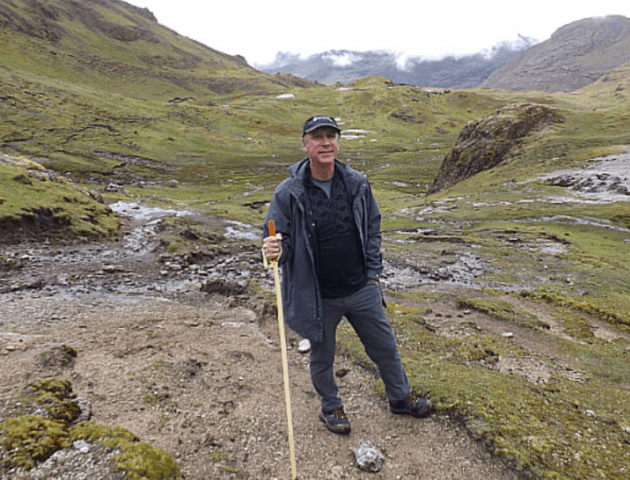
By: Tim Leffel
Cheapest Destinations Blog is one of the oldest travel blogs on this list.
It is created and run by Tim Leffel — an award-winning travel writer and author.
Tim has made it his life’s goal to help people make the most out of travel while spending less. His blog contains posts that teach how to spend your travel money wisely and how to make every cent count.
Other than Cheapest Destinations Blog, Tim also runs a handful of other blogs on different, travel-related topics. This includes Perceptive Travel, Travel Writing 2.0 Blog, and Cheap Living Abroad.
- Travel budgeting
- Influencer marketing through 360 Degree Travel Network
11. Alex in Wanderland

By: Alexandra Baackes
Alexandra Baackes created Alex in Wanderland for two reasons.
First, she’s been dealing with a case of wanderlust all her life. And second, she’s a fan of a beloved, fictional character — Alice in Wonderland.
Alexandra is originally from Brooklyn, New York where she purchased her one-way ticket into the traveling life. She now blogs about the best travel destinations, outdoor activities, and her personal, travel-related gear.
One of the things I like about Alex in Wanderland is the presentation and categorization of content.
On the “Categories” page, Alex makes sure articles are well-organized based on topics like travel inspiration, activities, and planning. This makes it easy for her audience to find the information they need at any given time.
- Outdoor activities
12. Hey Nadine

By: Nadine Sykora
Nadine Sykora of Hey Nadine is a popular travel blogger, YouTuber, and social media influencer.
Over the past 10 years, she has traveled across 55 countries, spoken on expert panels, and became a keynote speaker.
Nadine’s goal is simple: share her travel experiences with the world and help others do the same.
Hey Nadine contains a host of content on travel advice, hacks, destinations, and inspiration. As a seasoned YouTuber, you can expect her blog content to contain a lot of embedded videos from her channel.
- Video production
- Advertisements through YouTube
- Sponsored content
13. I Am Aileen

Just like Kiersten Rich, Aileen Adalid is another travel blogger whom I also featured in my top lifestyle blogs listicle.
Aileen runs I Am Aileen — an award-winning blog that discusses just about everything there is to discuss in travel. She writes about destinations, the best travel activities, foreign cuisine, and more.
What interested me the most about Aileen is her blogging background. At age 21, she quit her corporate job, which only paid $300 a month, to become a professional traveler.
Since then, she’s been on a streak of smashing goals and breaking barriers. Thanks to her commitment to quality content, she’s recognized as one of the top bloggers in Asia.
- Online shop
14. Wandering Earl

By: Derek Earl Baron
Here’s a fun trivia about Wandering Earl .
Unlike most bloggers who use their first names, the “Earl” in “Wandering Earl” is actually a middle name. Blog owner Derek Earl Baron only thought that “Wandering Derek” didn’t sound as catchy.
Derek is a one-of-a-kind, adventurous soul who discovered his purpose as a modern nomad relatively early into adulthood. After graduating in 1999, he planned a three-month vacation across Thailand, Cambodia, and Vietnam.
That three-month vacation continues to this very day.
And that’s how Wandering Earl was created — documenting Derek’s adventures in over 100 countries. He also shares valuable pieces of wisdom on travel planning, food, budgeting, gear, and so on.
Wandering Earl has that “old-school” look and feel to it. On the plus side, the site’s design only highlights
- Working while traveling
- Selling “eGuides”
15. Be My Travel Muse

By: Kristin Addis
Be My Travel Muse is a solo female travel blog created by Kristin Addis.
She studied in Taiwan and kept an investment banking job for four years. The only problem was, her daily routine rendered her creative, dreamer side claustrophobic.
Her first step was a one-way ticket to Bangkok — envisioning a life of writing and travel. That’s exactly what she accomplished with her blog, which now caters to millions of readers all over the world.
Kristin believes that solo traveling is the best way for women to feel empowered and more confident. She prioritizes solo female travel tips on her blog, including guides on safety, packing, and maintaining relationships.
Be My Travel Muse also has heaps of content on popular travel destinations and self-care for women.
- Self-help for women
- Relationships
- The Photo Muse Masterclass online course
16. Followtheboat

By: Liz Cleere and Jamie Furlong
Followtheboat is a unique travel blog that focuses on a specific mode of transport: sailing.
It is created with love by a travel writer Liz Cleere and photographer Jamie Furlong. There’s also Millie the rescue cat, which functions as a source of inspiration and encouragement for the blog’s human founders.
Despite the focus on sailboats, Followtheboat’s content isn’t just made for sailors. The posts are tailor-made for travelers who also happen to be interested in the art and joys of sailing.
Don’t be surprised at the humor and dynamic range of topics on the blog. You’ll find posts like “tools you need on a sailboat” and “is this the weirdest loo in the world?”
Followtheboat also has a library of podcasts, which record Liz and Jamie’s experiences on their travels.
- Boat maintenance
- Patreon donations
17. Matthew Woodward

By: Matthew Woodward
If Followtheboat is about boats, you can probably guess what Matthew Woodward is a blog about trains.
Not to be mistaken for Matthew Woodward the internet marketer, Matthew Woodward the rail adventurer loved trains as a child. He owned model railway sets, traveled alone by train, and watched shows about trains on TV.
In his time as a geography student, he explored Europe with his trusty Interrail pass. He set his passion aside to focus on his career, which he eventually gave up to become a travel writer.
Today, he blogs about railway systems over different continents. He’s also an accomplished author of three books: “The Railway to Heaven,” “A Bridge Even Further,” and “Trans-Siberian Adventures.”
- Railway systems
- Traveling by train
- Selling books
18. The Opposite Travellers

By: Ryan and Rachel Riel
The Opposite Travellers were created by married couple Ryan and Rachel Riel.
While both loved to travel, Ryan and Rachel had contrasting preferences when it comes to traveling.
Rachel prefers to travel in style and luxury — through the accommodations and services offered by establishments and travel agencies. Ryan, on the other hand, leans toward daring adventures like biking and trekking — on $5 per night accommodations.
The couple, however, utilized their differences as a selling point in The Opposite Travellers.
As such, the website’s “Travel” section has two main categories: “Luxury Travel” and “Adventure Travel.” In other words, the blog has a diverse content library for travelers of all tastes and budgets.
The Opposite Travellers also boasts high-quality visuals taken and produced by Ryan Riel. All of the site’s videos are published on Ryan Riel Media — Ryan’s official YouTube channel.
- Content production
- Social media marketing
- Influencer marketing
19. We Seek Travel

By: Olly Gaspar
We Seek Travel is an adventure travel blog by traveler and adventure photographer Olly Gaspar.
Olly has been living out of his bags full-time since 2018, turning his passion for global adventure into a treasure trove of useful travel guides accompanied by his inspiring photography.
His travel blog serves as a window to extraordinary experiences around the world– from backpacking in India to climbing Himalayan peaks, crossing deserts on camelback, cycling over the Arctic Circle, hiking with gorillas in Uganda, and even fighting Muay Thai in Thailand.
But We Seek Travel is more than just a diary of adventures. It’s a resource-rich hub where Olly shares his firsthand experiences to help modern explorers discover unique outdoor adventures, off-beat hiking trails, travel photography gear, and helpful accommodation and digital nomad resources.
- Travel Planning & Accommodation
- Outdoor Adventure
- Hiking & Trekking
- Travel photography
- Travel Gear
- Photography licensing
- Adventure Photography shoots
- Tourism development
20. Bucket List Journey

By: Annette White
Travel is all about adventures, and so is life.
That’s the essence of the Bucket List Journey by Annette White.
The blog’s tagline is “tools and inspiration to live your list.” It refers to a person’s “bucket list,” which is basically a list of goals and experiences they want in life.
Annette didn’t always have such a positive outlook in life. She used to be diagnosed with anxiety, which caused her to miss out on life-enriching experiences and opportunities.
Eventually, she decided that she’ll no longer become a prisoner of fear and uncertainty. She had courage and took charge of her life’s direction — something every aspiring blogger needs to do at one point.
Bucket List Journey talks about bucket list-worthy destinations, motivation, money, and travel tips. Annette also imparts knowledge on people who also struggle with facing fear and making braver life decisions.
- Overcoming fear and anxiety
21. Migrationology

By: Mark Wiens
When I first visited Migrationology , I wasn’t sure whether to classify it as a food or travel blog.
Then I checked out Mark Wiens’s “About” page. There, I learned that he viewed food as a way to connect with people in various cultures.
And to be exposed to these cultures, Mark dedicates his time, money, and efforts to travel.
Mark makes sure the blog only focuses on content based on his personal travels. It’s made for people who want to experience the flavors of the world — in person or through Mark’s posts.
Apart from general food travel blog posts and city guides, Migrationology also offers readers a “Food Tour” service. It is the result of a year of research done by Mark himself — in partnership with Bangkok Vanguards .
- Bangkok Food Tour
22. The Cranky Flier

By: Brett Snyder
We already mentioned a blog about boats and another about trains. It’s time to talk about a blog on airplanes and air travel.
Cranky Flier is a unique blog created by Brett Snyder — President and “Chief Airline Dork” of Cranky Flier LLC.
Brett has been fascinated with airlines all his life. When he was young, he collected airline timetables and even spent a birthday with his grandmother watching planes land.
As an adult, he spent several years in the airline industry fulfilling multiple roles. He became a sales intern at USAir, senior analyst at America West, marketing planning product at United, and so on.
Today, Brett publishes his opinions about the airline industry on Cranky Flier. He also updates several series, like “Worst Airline Ever,” “Airlines We Lost,” and “Across the Aisle Interviews.”
I’ll let you determine what these series are all about based on what they’re called.
- Airline industry
- Cranky Concierge service
23. Never Ending Footsteps

By: Lauren Juliff
Lauren Juliff is one of those bloggers who already knew what they wanted to be from an early age.
She dreamt of traveling to new places, meeting new people, and exploring new cultures. Never Ending Footsteps is proof that she accomplished all three.
The blog consists of posts about Lauren’s fulfilling travels to different countries. But unlike a lot of famous travel bloggers, she also talks about the downsides of being a digital nomad.
Never Ending Footsteps has a “The Incidents” blog section where Lauren discusses the not-so-sexy aspects of traveling. She has been scammed, attacked by monkeys, locked out of her room, lost her passport, and more.
Despite these incidents, Lauren’s love for travel only grew. Such experiences increased her wisdom and travel acumen — resulting in some of the most insightful travel articles ever published.
Lauren also helps her audience get into the world of travel blogging. Check out “How to Start a Travel Blog” for information on web hosting, working with WordPress, and so on.
- Travel safety
24. A Dangerous Business Travel Blog

By: Amanda Williams
A Dangerous Business Travel Blog is a straightforward blog made to help people travel.
It is created by Amanda Williams, who is a former journalist with degrees in journalism, hospitality, and tourism management.
Amanda first got into journalism by editing obituaries — eventually becoming a copy and layout editor at a newspaper company. She started A Dangerous Business Travel Blog in 2010 out of boredom and her need for a creative outlet.
Fast forward to 2024, the blog now averages over 340,000 page views per month. Amanda also maintains a strong social media presence with thousands of followers across networks like Facebook, Twitter, and Instagram.
A Dangerous Business Travel Blog contains posts about travel planning, packing, destinations, and inspiration. Everything is sprinkled with high-quality photos to keep readers engaged and enthused.
The centerpiece of A Dangerous Business Travel Blog is “The 10-Day Adventure Project.” Put simply, it’s a collection of ready-to-use, self-guided itineraries that will shave hours off your travel planning process.
- Packing
- DangerousBiz online course
- Freelance writing
25. Against the Compass

By: Joan Torres
How do you make a travel blog stand out?
Joan Torres has a surefire answer: covering the most unusual and “off the beaten track” destinations.
Against The Compass is a unique blog that talks about the travel routes and destinations you probably haven’t heard of. It covers destinations that people don’t normally include in their bucket list, like Pakistan, Tunisia, Syria, and other high-risk countries.
Of course, Joan makes sure to highlight the importance of safety when traveling in relatively low-popularity destinations. He has comprehensive guides for solo female travel, travel insurance, and general travel safety.
- Travel insurance
26. Everything Everywhere

By: Gary Arndt
In travel blogging, a picture is undeniably worth a thousand words. There’s simply no excuse for any travel blogger to forego the inclusion of visual content in their posts.
Gary Arndt’s absolutely nailed it with his photography work for Everything Everywhere .
Gary actually won multiple, major travel photography awards — more than any travel photographer. His photography is so good that I suggest you check the “Travel Photos” page on Everything Everywhere.
Go ahead, take a break and thank me later.
Other than taking breathtaking photos, Gary also publishes detailed blog posts about the places he’s been. He’s been on the go for roughly 9 years non-stop, which means readers will never run out of material.
27. The Longest Way Home

By: David Ways
The Longest Way Home started as the personal travel journal of David Ways — a solo traveler in search of home.
The blog originally started as David’s private, digital diary. As he journeyed across Europe and gained experience, it turned into a full-on blog with travel guides to specific locations.
David finally found home in Nepal before traveling to other parts of Southeast Asia.
He’s not the most nitpicky blogger in terms of grammar and spelling, but he’s definitely a brilliant storyteller. He’s also skilled in capturing and immortalizing moments into photos, which you can view on his blog’s gallery.
The Longest Way Home has a library of content about various destinations, trekking, and travel planning. It also features in-depth travel guides to Nepal, Thailand, and overland travel — plus a mini-guide to Portugal.
- Travel planning
- Overland travel
28. Global Grasshopper

By: Becky Moore
Global Grasshopper is a travel blog run by Becky Moore and her team of professional travel photographers and writers.
Becky’s first adventure was a six-month voyage in Southeast Asia. She considers herself a “semi-nomad,” traveling from country to country while nestling in Ireland, Australia, or parts of Southeast Asia.
Global Grasshopper contains posts about popular travel destinations, hotels, and other places that deserve more attention. Readers will also enjoy the blog’s posts about dog-friendly travel — covering topics like dog booster seats and pet-friendly hotels.
Since the blog is run by a team of experts, expect the content quality to be top-notch across the board. The team also organizes boutique tours, which readers can participate in for a memorable travel experience.
- Traveling with a pet
- Boutique tours bookings
29. Girl Gone Travel

By: Carol Cain
Carol Cain is an accomplished professional in the field of communications. She is a social media marketing expert, public speaker, branding agency owner, and award-winning travel blogger.
Girl Gone Travel is the result of Carol’s innate passion for travel and knack for digital marketing. It is a well-designed, engaging, and filled with quality content that shines with Carol’s personality.
Other than her travel-related posts, Girl Gone Travel also publishes a lot of posts about blogging and online branding. This makes it an excellent place to start for hopeful travelers who plan to have their own blog one day.
- Destinations
- Online branding
- Brave World Media company
30. HoneyTrek

By: Mike and Anne Howard
Believe it or not, HoneyTrek is a travel blog about a honeymoon.
Yes — it’s probably the longest honeymoon ever.
Founders Mike and Anne Howard are a power couple with skills that can make any blog great. Anne is a former magazine editor whereas Mike’s a veteran digital media strategist and photographer.
Together, they’ve honeymooned to over seven continents and 60 countries while creating the most romantic travel blog in the process.
HoneyTrek contains a collection of posts about their travel destinations, experiences, and travel tips for all budgets. They also wrote two successful books: “Comfortably Wild” and “Ultimate Journeys for Two.”
- Travel budgeting
- Travel skills
31. Oneika The Traveller

By: Oneika Raymond
Oneika The Traveller is an award-winning travel blog by journalist, keynote speaker, and media personality Oneika Raymond.
For those who don’t know Oneika, she’s the on-air travel and lifestyle correspondent for CTV Canada and NBC New York. Even more impressively, her blog won her a gold medal in the 2018 SATW Lowell Thomas Travel Journalism competition.
Oneika talks about travel destinations and her go-to tips for life on the road. With her experience in the field of journalism, she’s definitely one of the most engaging storytellers on this list.
- Fashion and style while traveling
- Traveling as a minority
- Personal opinions
- Social media marketing
32. The Adventurists

By: Tom Morgan
The Adventurists is hands down one of the most well-designed travel blogs in this post.
The blog proves that integrating tons of video content into one page doesn’t have to affect its loading speed. In fact, the site loads surprisingly fast despite having several video panels on the homepage.
I’m not going to delve too deeply into this technical feat. What I’m going to focus on, however, is the brilliant team behind The Adventurists.
The site is founded by “Chief Idiot” — Tom Morgan. Apparently, most of the crazy ideas featured on the blog were his.
Every page on the site reflects Morgan and his team’s wackiness and passion for great adventures. They do, host, and document daring outdoor activities on air, land, and sea — plus, a whole lot of charity.
Their audience can also participate in these activities, which can be held in various parts of the globe. The “Monkey Run,” for example, is an event where participants race through dirt trails on tiny bikes.
The bottom line is, it’s hard to come up with unique ideas that set you apart in the blogging landscape. The Adventurists, on the other hand, managed to do so multiple times.
- “The Adventures” events
- The “Shop of Stuff”
33. Time Travel Turtle

By: Michael Turtle
Time Travel Turtle is created by Australian Journalist Michael Turtle.
Michael was born to be a storyteller and he knew it from an early age.
In school, he ran the student newsletter and contributed a weekly column. He also filled the role of deputy editor of a university newspaper.
Time Travel Turtle’s contains mainly posts on the locations that Michael has visited over the years.
Like most renowned travel bloggers, Michael captures amazing photos that travel enthusiasts can fall in love with. He puts some of these photos up for sale to companies who’d like to feature those locations or properties.
Michael continues to explore the world as a digital nomad. He also shares practical travel tips so readers can experience these adventures themselves.
- Selling photography
34. Hand Luggage Only

By: Yaya and Lloyd
Hand Luggage Only is a hugely successful travel blog by couple Yaya and Lloyd.
The site doles out travel advice, inspiration, photography tips, food reviews, and posts about must-see destinations. It also has a library of high-quality videos where Yaya and Lloyd describe their experiences in detail.
Yaya and Lloyd started the blog in 2014 with a plan to share their travel stories with the world. Within a few hours, they published their first posts using photos they already took and edited.
The moral of the story is, consider starting a blog if you already have a library of unused travel photos.
35. Travel4Wildlife

By: Christina Garcia and Hal Brindley
It should only take anyone a second to figure out what Travel4Wildlife is all about.
The blog is created by couple Christina Garcia and Hal Brindley out of their passion for wildlife.
Hal is an experienced wildlife photographer for organizations like the Nature Conservancy Magazine, SEE Turtles, and RARE Conservation. Christina, on the other hand, is an experienced zoologist who worked on studies on wolves, cheetahs, and leopards.
Travel4Wildlife’s goal is to increase awareness and increase the appreciation for wildlife. More importantly, it was Christina and Hal’s life goal to promote wildlife conservation through responsible tourism.
Behind the scenes, the couple teams up to create compelling articles that focus on wildlife in specific destinations. The blog covers a range of species on different continents — from owls in South Africa to polar bears in Canada.
- Wildlife tour reviews
- Responsible travel
36. The Insatiable Traveler

By: Susan Portnoy
Susan Portnoy, also called The Insatiable Traveler on her blog, is a seasoned travel writer and photographer.
Susan’s last full-time job was VP of corporate communications at Condé Nast. When that door closed, she took on a freelancing career as she learned the art of photography.
Fast forward a few years, and she has enough accolades to make photography degree holders envious.
Her photographic works were featured by organizations like National Geographic and companies like Bing. She also won awards like the SATW Lowell Thomas Award and the 2018 Gold in the Muster Photo Competition.
The main focal points of The Insatiable Traveler include destinations, cruises, photography, and travel gear. Susan also covers the safaris in various regions, like Tanzania, Namibia, and Kenya.
37. View from the Wing

By: Gary Leff
Just like Brett Snyder, Gary Leff of View From The Wing is an expert in all things air travel.
Gary was named one of the “World’s Top Travel Experts” by Condé Nast Traveler since 2010. He also co-founded InsideFlyer.com — a community made by and for frequent flyers.
View From The Wing is a goldmine of timeless tips on airline miles, credit cards, hotels, and business travel. No matter your sub-niche in travel, I recommend checking it out for ways to maximize your frequent flyer miles.
Gary also publishes posts called “Trip Reports” about establishments, food, and various attractions.
- Hotel reviews
- Credit cards
38. Uncornered Market

By: Daniel Noll and Audrey Scott
Dan Noll and Audrey Scott are a pair of adventurers, storytellers, and tourism advisors who advocate for responsible traveling.
They created Uncornered Market — a responsible tourism blog — after leaving their secure and stable lifestyle in Prague. Prior to that, they lived in San Francisco and took a leap of faith for the sake of avoiding regrets.
It’s clear that both Dan and Audrey believed that fulfillment can’t be found within the confines of your comfort zone. They explored, made connections, and shared their experiences through their travel blog.
Some of the topics you’ll find in Uncornered Market are about destinations, sustainable tourism, food, and trekking. Dan and Audrey also write about personal growth and experiential travel.
Uncornered Market is also a tourism development and marketing consultancy company. They help travel companies, destinations, and tourism organizations build their brands and deliver their message to a wider audience.
- Responsible tourism
- Tourism development and marketing consultancy services
39. Jessie on a Journey

By: Jessica “Jessie” Festa
Like plenty of bloggers, Jessica Festa needed a taste of life before discovering her true calling.
In her youth, Jessie traveled to mostly cruises in the Caribbean and road trips in North America. She also experienced being a sightseeing guide in New York.
Jessie on a Journey is the result of her pursuing her dreams of getting paid to do something she loves. She now blogs about being a solo female traveler, blogging it, and profiting off of it.
I’m sure a lot of big-name bloggers are all too familiar with how Jessie made the blogging vision a reality.
For a long time, she felt that the workaday lifestyle isn’t for her. It made her feel like she’s living everyone else’s life — not the kind of life she wanted to keep.
Despite the disapproval of loved ones, Jessie decided to quit her secure job in favor of being a travel blogger.
She was just as unprepared as most people before starting their own blog. The key difference is, she went out there and took her first step.
- Travel blog consulting
- Tour company consulting
40. Legal Nomads

By: Jodi Ettenberg
Back when Jodi Ettenberg was in law school, she never would’ve guessed she’d run a successful travel and food business.
That happens to a lot of people, especially those who never thought of giving priority to their passions.
It’s just a hunch, but I think the name Legal Nomads had something to do with Jodi’s background in law.
Legal Nomads highlights destinations and local cultures just as insightfully as other travel blogs. What makes it different is that Jodi focuses on local cuisines to experience and tell the stories of each destination.
A huge part of Jodi’s blog is about wellness and gluten-free eating. She then utilized her knowledge and experience to create detailed restaurant cards, which travelers can use when visiting certain countries.
- Gluten-free restaurant cards
- The Legal Nomads Shop
41. Indiana Jo

By: Jo Fitzsimons
Like Jodi Ettenberg, Jo Fitzsimons also used to practice law before becoming a successful travel and lifestyle writer.
Indiana Jo started way back in 2010 where Jo can comfortably type away her thoughts and musings. Fed up with her full-time job, she went out to see the world as a digital nomad.
It wasn’t always smooth sailing for Indiana Jo, however. According to her, she thought about quitting the blog several times before finally realizing that it’s a lifetime thing.
Jo writes about her travel experiences, destinations, wine, and food. She also shares travel planning tips along with a long list of content about topics that personally interest her.
- Travel health and safety
42. TravelFreak

By: Jeremy Scott Foster
TravelFreak is the brainchild of Jeremy Scott Foster who left America in the middle of a recession and to Australia.
For a while, he racked up some savings as a traveling bartender. It took some time before he finally made the switch to be a digital nomad and online entrepreneur.
Jeremy created the blog to help people create opportunities to achieve the fulfilling life they deserve.
He writes about travel advice, destinations, gear, and ways to get your finances in order as you travel. This includes guides on how to land and keep a job abroad along with resources on reliable booking websites.
I personally like the way Jeremy designed TravelFreak to provide the best possible user experience. Unlike a traditional layout, the site features a search bar so readers can jump right into the content they need.
TravelFreak has been featured in Forbes, National Geographic, The New York Times, and a few other big-name publications.
43. The Everywhereist

By: Geraldine DeRuiter
Before anything else, yes — that’s Rand Fishkin in the photo above.
And yes, the next travel blogger on this list is Rand’s longtime sweetheart and wife.
Geraldine DeRuiter was a former copywriter and went with Rand in his travels, which are often business-related. She then turned to the habit of documenting their travel experiences, which she described as “love letters” to her husband.
Today, Geraldine works full-time on The Everywhereist — named by Time magazine as one of the best blogs in 2011.
The Everywhereist contains posts about food and Geraldine’s travel experiences along with a comprehensive Philadelphia travel guide. The guide contains information on where to go, eat, shop, and stay.
Geraldine also wrote a book called “All Over The Place.” It chronicles how she embraced her love for blogging after being laid off, which aspiring bloggers can draw inspiration from.
- All Over The Place book sales
44. Keep Calm and Travel

By: Clelia Mattana
Keep Calm and Travel is a travel blog created by serial traveler Clelia Mattana.
Ever since she was 19, Clelia is a certified sea lover and globetrotter. But like many travel bloggers, she was given a choice between a secure job and the traveling lifestyle.
Clelia’s finalized her choice when she bought a one-way ticket to Asia. She then created Keep Calm and Travel to send a simple message:
“No matter what your age is, or your budget, or status, you can travel and live your life on your own terms.”
The blog’s topics include destinations across continents, photography, and travel gear. She also has a dedicated page for Sardinia, which is one of her absolute favorite travel destinations.
45. Practical Wanderlust

By: Lia and Jeremy Garcia
Lia and Jeremy Garcia, who aptly labeled themselves a “travel couple” on Instagram, are the minds behind Practical Wanderlust .
Jeremy is a film degree holder whose passions include writing and directing. He also became a high school teacher who taught filmmaking and digital media art.
Lia, on the other hand, has a fashion design and apparel merchandising degree. She took on roles in corporate merchandising before becoming a business systems analyst.
Why did I tell you all this? Simple: I want you to know what the pair had to give up pursuing their dreams of traveling.
Practical Wanderlust’s goal is to help other people enjoy travel in the most realistic and sensible approach possible. The blog is filled with detailed content on planning memorable trips on a budget, where to go, and staying safe.
Lia and Jeremy also host their own podcast, which is available on Google Podcasts, Spotify, and Apple Podcasts.
- Coaching and mentoring services
- Sponsored podcast episodes
46. Expert Vagabond
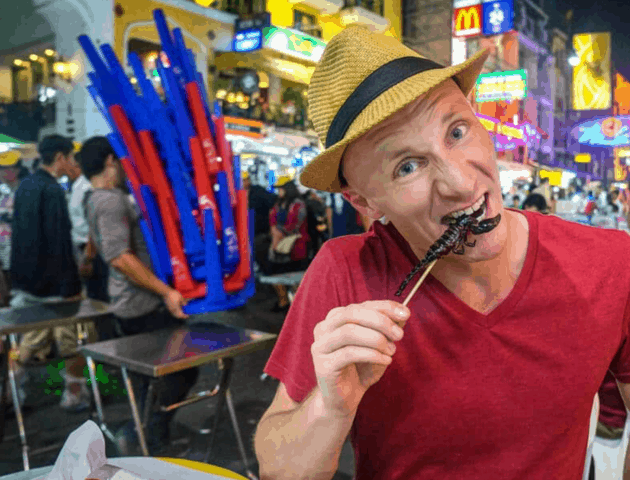
By: Matthew “Matt” Karsten
Matthew Karsten, AKA the Expert Vagabond , has been a travel blogger, photographer, and digital nomad for nine years.
He talks about budget travel tips, destinations, travel photography, and strategies to make the digital nomadic life work.
Matt is a business degree holder who spent time freelancing as a nightlife and event photographer. While he admits it was fun, he knew that he wants and deserves something more.
After a year of downsizing his life, eating homemade food, selling eBooks, and saving every penny, he was ready. He set out to obtain a different kind of wealth — that which is made with adventures and experiences.
- Nomadic living
47. The Voyageur

By: Pauline Chardin
Pauline Chardin is a France-based fashion designer, photographer, and art director.
She always had a soft spot for travel — driven by her appreciation for picturesque architecture, landscapes, and good food. She started The Voyageur to help people view the world through her voice and eyes.
The Voyageur is a simple, yet aesthetic website achieved through Pauline’s incredible photography skills. Apart from itineraries and posts about hotels, food, art, and architecture, the site also has a sizeable photo gallery.
Images are accompanied by a brief article that describes the destination’s history and Pauline’s thoughts and emotions during her visit. I’m not sure what it is, but there’s something about this content format that’s truly engaging and relaxing.
- Art and architecture
48. Amateur Traveler

By: Chris Christensen
Don’t be fooled by the name — Amateur Traveler is by no means run by an amateur.
Chris Christensen is a skilled photographer, travel writer, and podcast host. The site also utilizes a long list of monetization strategies that I believe every blogger should learn.
True, he wasn’t the most experienced traveler when he started the blog. Before he created Amateur Traveler, he was a full-time EVP of engineering and operations for a company based in Silicon Valley.
In his defense, he grew up in a family that traveled a lot to national parks in a trailer. He also learned a lot of foreign languages, which he believes is a window into understanding and embracing different cultures.
Amateur Traveler discusses destinations, travel budgeting, planning, gear, and booking. The site also features a weekly podcast on the top destinations around the world.
- Amateur Traveler Shop powered by Etsy
- Podcast advertisements
- Social media and content marketing consulting services
- Content writing services
- Paid guest posts
49. Girl Eat World

By: Melissa Hie
Melissa Hie is the “Girl” in Girl Eat World — a name that encapsulates what the whole blog is all about.
You see, Melissa’s three passions are food, travel, and storytelling. She started the blog in 2015 as a digital diary for herself and friends who need travel tips.
Prior to her blog’s success, she amassed quite a following on Instagram. This springboarded her blogging career, which she put in the back burner after focusing on her full-time career.
Girl Eat World is essentially a compendium of Melissa’s travel stories and travel planning guides. She also has an iconic style of capturing Instagram posts, which must be seen to be appreciated.
50. The Adventure Junkies

By: Antonio Cala and Amanda Zeisset
The Adventure Junkies is definitely not your average travel blog.
It’s not just about the travel stories of founders Antonio Cala and Amanda Zeisset. Upon visiting the blog for the first time, you’ll realize that it’s all about the community the blog has built.
New visitors are encouraged to join “ Summit ” — a free community for people who seek adventures through travel and outdoor activities. There, members can connect, plan events, share posts, ask questions, form groups, and discuss anything related to travel.
The Adventure Junkies also compile guides and resources about outdoor activities like diving, kayaking, mountain biking, and snowboarding. There’s also a section for visitors who’d like to learn about outdoor and underwater photography.
Antonio and Amanda started The Adventure Junkies as a personal blog about their three years of cycling. Over time, their readers began asking questions on how they can plan their own adventures.
The couple then realized that they need to create something more than a personal blog. As such, they transformed The Adventure Junkies as a one-stop shop for adventurists.
- The Adventure Junkies Store
- Paid digital guides
51. A Broken Backpack Travel Blog

By: Melissa Giroux
Melissa Giroux used to be a social worker who only traveled once a year.
Melissa created A Broken Backpack a year after her journey in the Canadian Rockies — hitch-hiking from point A to B. She continued working on her blog as a creative outlet while working on a farm in Australia.
It didn’t take long before A Broken Backpack’s popularity gained momentum and gave Melissa a new frontier.
The website contains crucial tips on travel gear, budgeting, destinations, and the life of a digital nomad. Melissa also put together in-depth guides on travel blogging, moving to another country as an expat, and backpacking.
- SEO eBook on Nomad Life 101
52. The World Travel Guy

By : David Leiter
David Leiter is an American travel blogger currently based in Bali, Indonesia, with his wife Intan (who’s a Bali local).
They travel around the world and try to document the most scenic destinations by creating articles, photos, videos, and guides for other travelers.
David runs The World Travel Guy , an adventure travel blog that he started when he was a solo traveler, but now covers their travels around the globe as a couple.
In total, they’ve visited dozens of countries, while also checking off some bucket list adventures like a Komodo dragon safari in Indonesia, the Mount Everest Base Camp trek in Nepal, and a bunch of world monuments like the Angkor Wat and Taj Mahal.
- Adventure Travel
- Destination Guides
- Budget Tips
- Travel Photography
- Drone Videos
- Affiliate Partnerships
- Display Advertisements
- Sponsored Trips
- YouTube Videos
53. Life Part 2

By: Jonathan Look Jr. and Sarah Wilson
The last blog on this list that your best life can start at any time you choose.
Let me tell you the story behind Life Part 2 and the people behind it.
Jonathan Look Jr. and Sarah Wilson are both happy retirees with a simple mantra: “don’t waste your retirement.”
To them, retirement isn’t about being comfortable and secure. Rather, it’s all about the freedom to listen to your heart and follow where it takes you.
Jonathan and Sarah met in Chiang Mai, Thailand where they both agreed to see the world as a couple.
Life Part 2 is a mix of all things travel. At times, there’ll be a post about remote destinations and backpacking, and at other times, the theme is luxury travel.
You will, however, notice that the content topics on the blog often revolve around retirement, minimalism, and travel.
Planning to go on your own travel adventures? Perhaps you’re thinking of starting your very own travel blog?
It doesn’t matter if you’ve got a case of wanderlust or the desire to be a travel blogger yourself.
The list above has some of the best travel blogs ever created. They can provide you with ideas and inspiration for your next trip or first-ever travel blog post.
If you think I missed a great travel blog that everyone should read, let me know in the comments below. Good luck!
Disclosure: This article includes affiliate links. If you purchase through these links, we may earn a commission at no additional cost to you. Thank you for supporting us.

Ankit Singla
Ankit Singla is a full-time blogger, YouTuber, author, and public speaker. He founded and leads Master Blogging . With over 13 years of blogging expertise, he has assisted numerous aspiring bloggers in achieving their dreams of creating successful blogs.
Popular Posts by Ankit Singla ( see latest )
- 11 Best Blog Topic Research Tools (Free and Paid) + Tutorial
- 7 Best Keyword Research Chrome Extensions for Bloggers
- 9 Best Digital Products to Sell as a Blogger [All Profitable]
Master Blogging, powered by Ankit Singla’s 13 years of blogging expertise, is your reliable resource for building a profitable blogging business. Here, you’ll gain the insights and support to thrive in blogging.
BLOGGING DEALS
© 2013 – 2024 Master Blogging® | Hosted by WPX | Built with Kadence Theme
21 U.S. Travel Bloggers Worth Following
21 u.s. travel bloggers everyone with wanderlust should be following.
/granite-web-prod/1e/3b/1e3b09b1147c4498b49cf7e2f9443fef.png)
If being a travel blogger sounds like a dream job — well, it kind of is. Writers across America spend their days exploring fantastic sights in dozens of exotic countries, documenting what they experience and making a living as they go.
But that doesn’t mean the job is easy. Most professional travelers have made impressive sacrifices to follow their dreams, whether it's by selling all of their belongings, living in small apartments with several roommates, or just living very simply. Superb travel blogging also takes a unique knack for making extraordinary travel experiences resonate with the masses.
Here, we’ve rounded up some of the most engaging and inspirational travel bloggers across the U.S. And yes, a little bit of jealousy is OK.
A Dangerous Business
/granite-web-prod/93/54/9354d3cbbda641b2b2ed6b49a14ffa6d.jpg)
The blogger behind A Dangerous Business is Amanda, who decided in high school that she wanted to travel. An avid Lord of the Rings fan, she was determined to visit New Zealand and spent two weeks there in 2005. She has since been to over 50 countries on six continents.
With the hopes of traveling more, Amanda started A Dangerous Business in 2010, but isn't a full-time traveler. She enjoys the comforts of home — and her beloved cat — far too much. Instead, she created the blog as a hobby and a way to combat boredom at work. In 2015, after earning her Master's degree in Tourism Management, she went full-time as a blogger.
The goal of A Dangerous Business is to help people find ways to fit travel into their lives. Amanda works with global brands and destinations to create bucket-list-style travel trips, and has been featured on The Huffington Post and USA Today Travel .
Follow Amanda on her adventures by visiting her on Facebook and Instagram .
The Everywhereist
/granite-web-prod/e2/89/e289aea4ac7d4df6b02a45b6f314ce6a.png)
An author and public speaker, Geraldine DeRuiter runs the award-winning blog, The Everywhereist .
While her focus is primarily on travel-related topics, she does occasionally delve into content related to dessert and feminism. And she has an apparent fondness for Jeff Goldblum.
The Seattle blogger has been featured in Forbes , The Independent and The Huffington Post . TIME Magazine also called her work “clever,” while The New York Times described her as "dark and hilarious."
These assessments are evident when you explore The Everywherist, which showcases Geraldine's dry wit. Check out her Facebook page and Instagram page to keep up with her shenanigans.
The Blonde Abroad
/granite-web-prod/da/a6/daa655986cc949f28ee9598f7d579757.jpg)
The award-winning travel and lifestyle blog, The Blonde Abroad , is run by California native Kiersten Rich. She left her job in corporate finance to become a world traveler, and has now been to over 50 countries.
Through her blog, Kiersten hopes to inspire people to live a life they love and not settle for anything less. The Blonde Abroad is a multi-level business that allows Kiersten to earn an income through various streams of revenue. She offers social media and marketing consulting, content creation and blog mentorship retreats, and takes all-expenses-paid press trips to produce content for brands.
You can catch all of Kiersten's adventures on Instagram , where she does weekly Q&A stories on travel, work and personal topics.
Adventurous Kate
/granite-web-prod/dc/42/dc426daf0bbe41eabada8f441d25612e.jpg)
Kate McCulley travels the world for a living and documents her adventures on her blog, Adventurous Kate . It all started in 2010 when she quit her job in online marketing to travel to southeast Asia for six months. Those six months turned into five years and she's now traveled across more than 65 countries.
Adventurous Kate started on that trip to southeast Asia, when Kate began building up her freelance work portfolio while developing her blog. In 2016, she moved to New York City, revamped her blog and downsized her travel, so she's only away from home about 25 percent of the time.
You can keep up with Kate on social media by following her on Facebook , YouTube and Twitter .
/granite-web-prod/e6/a7/e6a785e8abd948ad9e4ac156ca4f3e81.png)
A self-described former cubicle dweller, Matt Long is the man behind the LandLopers blog. His passion for travel led him to start the blog, but he doesn't backpack around the world. He lives in a house in the suburbs with his three dogs and has found a way to make travel his profession. The blog name comes from the word "landloper," which is a wanderer or vagabond.
LandLopers is a reflection of Matt's experiences, and provides information on many travel-related topics. He strives to make travel more fun and accessible by sharing tips on how to experience the best destinations around the world.
Follow Matt on Instagram , Twitter and Facebook .
Lee Abbamonte
/granite-web-prod/c6/6c/c66cd6f844a14c25b34b10ff6bde4d54.jpg)
A Wall Street veteran, Lee Abbamonte worked in energy and wealth management for eight years after earning his undergraduate degree in Finance and Marketing from the University of Maryland at College Park, and his MBA from the Thunderbird School of Global Management.
Lee is now a multimedia travel personality, brand ambassador and entrepreneur.
He's also the youngest person to visit every country in the world, plus the North and South Poles. His goal is to visit all 325 countries and unique destinations in the world via the Travelers Century Club list. He has been featured in or on a wide array of media outlets, including Fox News, ESPN, CNN, Sports Illustrated , the Washington Post and Conde Nast Traveler.
Lee documents his travels on Facebook , Instagram , YouTube and Twitter .
Sending Postcards
/granite-web-prod/92/4b/924bddb6fb3b479e97a250aae96a8b7c.jpg)
The travel blog Sending Postcards is a labor of love between a married couple. While they don't disclose their names, they do share their story. After their wedding, the duo left Canada to travel the world together. The blog was essentially a way to document their extended honeymoon.
The two spent a year traveling around Africa, Europe and the U.S., living in Montreal for a few years before settling in San Francisco, which they currently call home. As they travel to various destinations, many right in and around California, they share their adventures on Sending Postcards.
Hippie in Heels
/granite-web-prod/18/ff/18ffcbf171974f79867c15db64a908c9.jpg)
Rachel Jones grew up in a small town in Ohio, where she lived with her brother and parents. When she got to college, she spent two summers backpacking in Europe and a month in Uganda. She went on to graduate with honors as a nurse. After 11 months as a cardiac care nurse in Charlotte, N.C., Rachel realized that a life in the "real world" wasn't for her. And so, she decided to retire from nursing and follow her heart.
She chose Goa, India, where she could ride a camel and climb a mountain, as her next home. It's where she's spent the last five years and where she currently documents her life on her travel blog, Hippie in Heels . She basically lives out of a backpack and survives on street food. While she's barely getting by financially, the trade off is worth it because she's been to 30 countries and counting. And she met the love of her life in India.
Follow Rachel and her Indian adventures on Facebook , Instagram and Twitter .
Pause the Moment
/granite-web-prod/23/f8/23f8834bfbb149cfa95642f59539dc31.jpg)
In 2008, the day after his 24th birthday, Ryan headed to Dublin, Ireland for his first solo backpacking trip through Europe. The three-month experience was life changing, and in 2010, Ryan quit his job. He then set off on a trip around the world that was supposed to last six months to a year. His passion for the sun, the sea and adventure wouldn't let him stop there, and he's been on the road for seven years.
Now he's a digital influencer and travel blogger who has spent the last three years in Playa del Carmen, sometimes visiting Greece during the hot summer months. His blog, Pause the Moment , features travel guides and resources for destinations all across the world. In 2017, he started running small group tours to Egypt, which he plans to continue in October 2018.
Catch Ryan on his Facebook page and on Twitter .
Camels & Chocolate
/granite-web-prod/32/96/32967a55b76240e0896d1150ad44c9d3.jpg)
A Nashville-based freelance writer and fitness buff, Kristin Luna runs the Camels & Chocolate blog. She was a college tennis player and marathoner, and she loves to travel with her husband. And while she's all about diving, hiking and skiing, she's not a nomad. She has simply mastered the art of balancing career with family and traveling.
Most of her freelance work involves influencer campaigns where she partners with brands and destinations to create original content. She also consults with small businesses on marketing and media strategy. And while she currently lives in Nashville, her blog has been around since 2007, so it's full of helpful and interesting information on tourist locations all over the world. Kristin has appeared in multiple media publications, including Redbook magazine, Glamour magazine, Marie Claire and National Geographic .
Camels & Chocolate has a social presence on Facebook , Instagram and Twitter .
Just Chasing Rabbits
/granite-web-prod/7d/93/7d93885a1bc4439bbc8dd55e6644fc26.png)
Mississippi couple Mark and Jennifer Campbell share their travel stories on their blog, Just Chasing Rabbits . The self-proclaimed "young at heart" duo has been traveling together since 2004, when they went to New Orleans on their honeymoon.
Mark and Jennifer travel with a sense of curiosity, always on the lookout for unusual and amazing sites. They hope to inspire their readers to take everyday moments and turn them into unforgettable adventures.
In addition to giving readers an inside look at their travels, Just Chasing Rabbits also has an online shop full of cool travel-related products personally selected by Mark and Jennifer.
Keep up with the two lovebirds on Facebook , Instagram and Twitter .
My Itchy Travel Feet
/granite-web-prod/bd/a9/bda946ed094b482f9eefed40404c952a.jpg)
A travel guide for baby boomers, My Itchy Travel Feet is the work of Donna L. Hull, the blog's chief navigator, and Alan Hull, the site's photographer. The Montana couple has been documenting their travels since 2008, covering both domestic and international destinations.
They have travel guides for a variety of places all across the world, and also have tips and ideas for themed trips like bucket list trips, cruises, romantic getaways and national park adventures. With Donna's preference for luxury and Alan's rugged sense of adventure, My Itchy Travel Feet has something for every baby boomer (and beyond) to enjoy.
Follow the couple on their travel journeys via YouTube , Instagram and Facebook .
Be My Travel Muse
/granite-web-prod/cc/6f/cc6f7652e1a34b79b7a4617a5565fac0.jpg)
Since 2012, southern California resident Kristin Addis has been a solo globetrotter. After working as an investment banker in Newport Beach, she got burned out and decided to make a big change. She sold her belongings — everything except a carry-on bag — and has since experienced amazing global adventures.
She's hitchhiked across China, taken a 35-day safari to Africa and spent two months hiking in Patagonia. She even became a Buddhist nun for 10 days. Her blog focuses on solo travel and outdoor adventures like hiking, camping and scuba diving.
New content is posted on Be My Travel Muse every Monday, Wednesday and Friday, offering readers ways to make the most of their travels. Kristin shares packing lists, country cost guides and exercise tips for novice and expert travelers from all around the world.
See where Kristin's next adventure will be by following her on Instagram , YouTube and Facebook .
Local Adventurer
/granite-web-prod/7a/c8/7ac8447fc9bb453c8552cb98a1fc8f82.png)
Each year, travel bloggers Esther and Jacob of Local Adventurer move to a new city. The Atlanta natives decided on a year in each spot because it's enough time to discover amazing spots in each new place, without being too permanent. After moving across the country and realizing that they hadn't gotten to know their hometown as well as they should have, they decided to get out and explore.
Esther and Jacob travel full-time but focus on local destinations. They seek to find adventure in everyday life, seeing the world through a childlike lens that highlights the beauty in even the most mundane things.
My Beautiful Adventures
/granite-web-prod/8c/8d/8c8d8b36f9724538b1be9e1e743c097d.png)
Chinese medicine doctor and travel photojournalist Andrea (Andi) Perullo de Ledesma is a Charlotte, N.C., resident and blogger who runs My Beautiful Adventures . She's a native southerner but has lived in seven states and been to over 50 countries on six continents.
She claims to live a very dichotomous life because she struggles with wanting to capture the world on film through travel and focusing on her experience practicing Chinese medicine, which she considers her true calling.
Andi's love affair with travel can be credited to her intrigue of diverse cultures, roads not traveled and life-changing experiences. During her time traveling the world, she met an Argentinean man, Lucas, who she married in Buenos Aires after five years of a long-distance relationship.
In 2015, Andi had a son, Joaquin, whom she calls her "most beautiful adventure yet."
Follow along as she travels the world on Facebook , Instagram and Twitter .
Hole in the Donut
/granite-web-prod/32/2a/322a24e1462b44f784fc1cf55208f280.jpg)
No, Hole in the Donut is not a food blog. But it might awaken your appetite...for travel.
Barbara Weibel is the owner/editor of Hole in the Donut, which she started in 2007. While working in various industries like marketing, advertising, real estate and public relations, Barbara was merely earning an income, but never felt passionate about what she did. She envied people who loved their jobs.
That's when she left her job and spent six months traveling solo around the world. She had no plans other than to go wherever the wind blew her. She documented all of her travels and blogged about the different places she visited. In 2009, she decided to become a full-time traveler.
Hole in the Donut is where Barbara shares her adventures in interesting countries. She features stories about the people she meets, the wild encounters she has and the spiritual lessons that she learns along the way.
Stay in the loop with Barbara's travels by following her on Facebook , Instagram , Twitter and YouTube .
Jessie on a Journey
/granite-web-prod/c6/ec/c6ec941316ab4f938597d4d6b63e96b0.png)
Started in 2011 by Jessica (Jessie) Festa, Jessie On A Journey is an award-winning solo female and offbeat travel blog. Jessie was born and raised in New York, where she is a certified sightseeing guide.
She grew up traveling, taking North American road trips and Caribbean cruises. While studying at the State University at Albany in New York, Jessie had several opportunities to travel. She taught English in Thailand, backpacked solo across Europe, studied in Australia and hiked through China.
After college, her 9 to 5 job wouldn't allow her time to travel and Jessie realized that she had to spend her life doing something she loved, not something she was "supposed" to do. Now she runs her blog, offering readers tips on solo travel, as well as blog advice and resources for others who want to start a travel blog.
Hook up with Jessie on Twitter , Instagram and Facebook .
Travel Mama
/granite-web-prod/9a/33/9a3323b96dac4c77867fc7bcdd506a76.jpg)
Moms who like to travel will find common ground with Colleen Lanin, the founder/editor-in-chief of Travel Mama . Colleen is an award-winning author with a Master's degree in Business Administration. She's also a member of the Society of American Travel Writers. She was invited to the White House as one of the 100 most influential travel bloggers for a summit on study abroad.
Colleen's stories have been featured in Parenting Magazine , the Chicago Tribune, Working Mother Magazine and the Orlando Sentinel . She has lived in California, Minnesota and southern France, as well as Arizona, where she currently resides. She shares her life with her husband, two children and a rescue pup.
Check out Colleen and Travel Mama on the Travel Mamas Facebook page and on Twitter .
Solo Traveler
/granite-web-prod/8a/c6/8ac65f42af9a41a1829c791306b3ea5f.png)
Janice Waugh started Solo Traveler in 2009. When she became a widow and am empty nester, a love of travel fed her inspiration. Her personal musings quickly became public and now Solo Traveler is a community where people who love travel share tips, tricks and support one another.
The Solo Traveler publishes posts that highlight the benefits of solo travel and how to do it well. Weekly features cover solo travel destinations and photos provided by readers. The blog has a Facebook page with over 230,000 followers, as well as a Pinterest page loaded with more tips, tricks and solo travel ideas.
Tourist 2 Townie
/granite-web-prod/23/af/23af50fdf12e49e68bda66dbd04aaced.jpg)
Gareth Leonard, a former Marketing Director, has a passion for slow, meaningful travel, which he shares on his blog, Tourist 2 Townie . After spending six years working to make other people's dreams come true, he decided to drop everything and follow his own path.
In 2009, he bought a one-way ticket to Buenos Aires and left his comfortable life behind.
Now he documents all of his adventures in Argentina, as well as other destinations around the world. He gives recommendations on the best places to see, the coolest things to do and his favorite places to eat. Check out Gareth on YouTube , Facebook , Instagram and Twitter .

Is Cancun Safe?
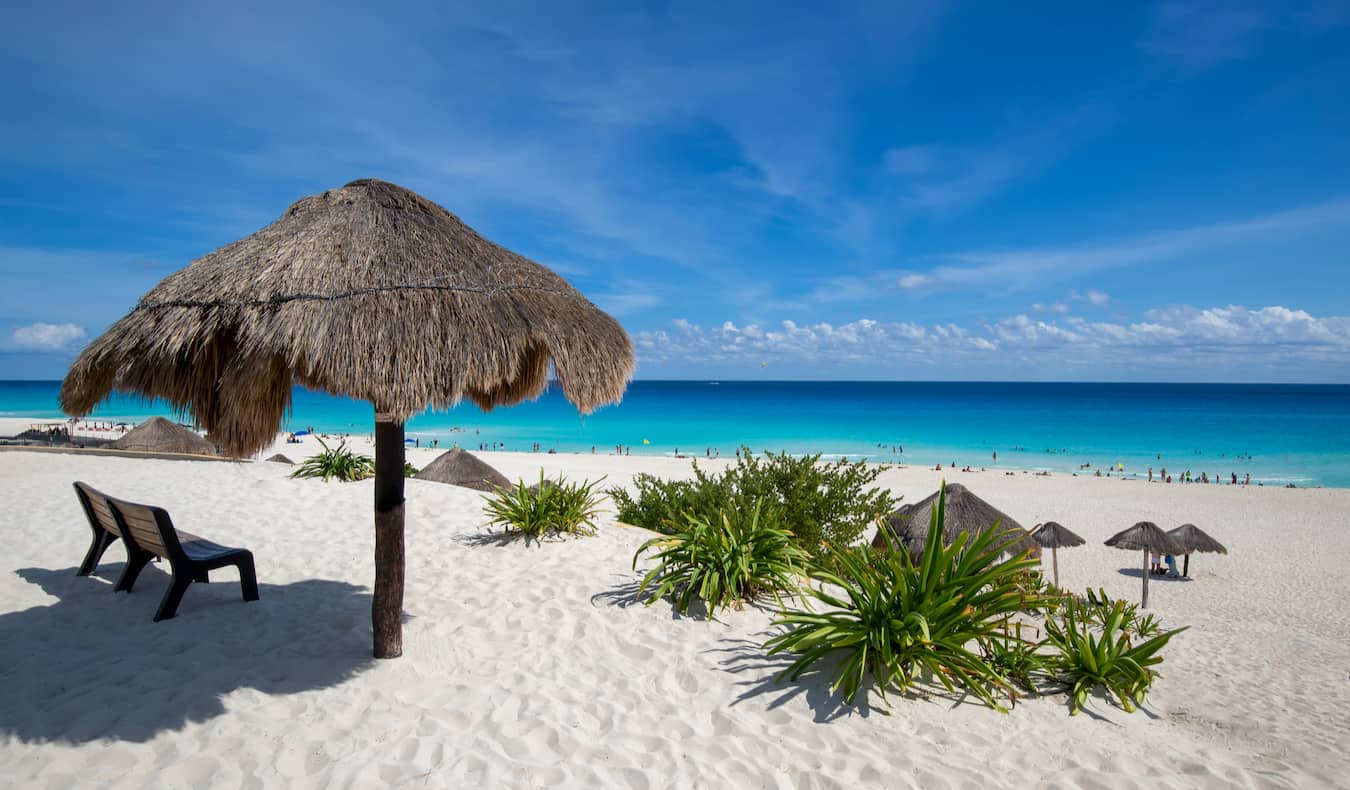
Cancún is the most popular destination in Mexico for travelers, welcoming a record high of 30 million visitors in 2022 .
With numerous direct flights from various cities in the United States and lovely beaches that hug turquoise waters, it’s not really a surprise that this city of nearly 900,000 people is so popular.
While the media tends to paint in broad strokes when it comes to Mexico and safety, there are plenty of safe places to travel in Mexico. Cancún is one of them.
It’s not like San Pedro Sula in Honduras or Ciudad Juárez on the Mexican-US border, where you might encounter robbers or violence just by strolling down the street.
That said, of the most dangerous cities in Mexico, Cancún comes in at number six in terms of the number of homicides per 100,000 people. To put this into perspective, the most dangerous city in Mexico is Tijuana, with 138 murders per 100,000 people. Cancún has 64 .
While that may seem worrying, keep in mind that there are several cities in the US with comparable stats ( St. Louis had 69 homicides per 100,000 people; Baltimore saw 51 ).
Fortunately for travelers, most of the violent crime in Cancún is the result of drug cartels and occurs far from the tourist zones ( and rarely involves tourists ). The vast majority of travelers will come and go without incident.
But that doesn’t mean you can travel carelessly here.
To help you understand more about the city and decide if you feel comfortable visiting, here is everything you need to know to stay safe in Cancún.
Table of Contents
Is Cancún Safe for Solo Travelers?
Is cancún safe for solo female travelers, are taxis in cancún safe.
- Is Renting a Car in Cancún Safe?
Is There an Issue with Gangs and Drug Cartels in Cancún?
- Can You Drink the Tap Water in Cancún?
Can I Walk Around at Night in Cancún?
11 safety tips for cancún, so, should you visit cancún.
- My Most Important Advice
The Mexican government puts a lot of effort into making sure Cancún is safe, since it’s fueled primarily by tourism. If the crime rate suddenly spiked and news got out, people would stop coming; hotels, bars, and restaurants would close; locals would lose their jobs; and the town would devolve into utter poverty, which would then increase the crime rate even more. Tourist safety in Cancún is so important to the government that they’ve created a special tourism police task force to maintain security in the area .
So, in short, yes, solo travelers should generally feel safe visiting here. Common sense still applies, of course, and it never hurts to travel in groups if you’re going out at night. But if you follow the safety tips mentioned below, you shouldn’t be more concerned here than anywhere else.
Solo female travelers have additional concerns when traveling, and the general precautions you’d take elsewhere apply here: never accept a drink from a stranger and never leave your drink unattended when out at the bar, don’t walk around at night intoxicated, etc. Cancún is a party town, so be mindful about who you party with and be cautious about not overdoing it. Beyond that, solo female travelers should generally feel comfortable traveling here .
Yes, particularly in the hotel zone ( zona hotelera ). Expect to pay around 70-80 MXN per ride within the area. If you go further afield, it is obviously going to be more expensive, and the level of safety is going to change as well. If you’re going out of the hotel zone, particularly to downtown, it’s best to call an Uber or Cabify. Just be aware that taxi drivers are actively protesting Uber in Cancún, which has occasionally led to altercations with tourists caught in the middle . Call your Uber or Cabify away from taxi stands and other common pickup areas to avoid incidents (just walking a block or two away is enough).
Is Renting a Car Safe in Cancún?
Compared to other parts of Mexico, the state of Quintana Roo and the Riviera Maya south of town is safe for renting a car and driving ( I’ve rented a car in the region myself ). The roads are in decent condition too.
One thing to be aware of is a scam that happens occasionally in Mexico. Rental cars will be priced low, and you’ll reserve the car. But when you go to pick it up, the price will have doubled, from all kinds of added fees. The devil is in the fine print. If you’re renting a car with a price so low that it almost seems like it’s too good to be true, it probably is. Expect some added fees when you pick it up.
On a related note, car insurance is mandatory in Mexico, so that will be an additional cost you’ll have to pay when picking up the car. Expect to pay about $10-$20 USD per day for insurance.
To find the best rental car deals, use Discover Cars .
Like many places in Mexico, there is an issue with drug cartels in Cancún. I’m not going to sugarcoat it. I know that’s not a pleasant thing to hear, but again, gangs and drug cartels are focused on each other, not tourists ( even though tourists are largely the ones fueling demand for drugs ). Much like in other countries (including the US), if there’s violent crime in Cancún, it’s not aimed at tourists, so you don’t need to skip a visit or spend your trip worried and in hiding (just don’t do drugs here). While gang violence has spread into the tourist areas from time to time, those incidents are still few and far between.
Is the Tap Water Safe to Drink in Cancún?
It is not. The tap water all over Mexico is notorious for not being as clean as it could be. Cancún is no exception. That goes for ice cubes too. Find out first if the water in restaurants is filtered and then ask if the ice cubes are too. Cancún can sometimes be sweltering and sipping iced drinks might be refreshing, but it would be even worse to be stuck in your hotel room with stomach issues because you drank tap water or an iced drink that was contaminated.
Bring a reusable water bottle with a built-in filter, like a LifeStraw bottle , to ensure that your water is always clean and safe to drink, and helps you avoid single-use plastic in the process. Otherwise, stick to bottled water.
In the hotel zone, yes. While Cancún has a population of almost a million people, the areas where the tourists congregate (the hotel zone, for example) are very walkable, day or night. In the evening, the one alarming aspect is that the street lighting is not particularly bright. It’s something to be mindful of when making plans.
If your itinerary or the night involves several stops, it’s probably wisest to hit the farthest destination first and then slowly gravitate to the nearest spot to your hotel as the night goes on. When in doubt, don’t travel alone, and take a taxi or Uber back to your accommodation at the end of the night.
Cancún is one of the safer tourist spots in Mexico, but you should still exercise caution, particularly when you leave the heavily touristed areas of town. Here are some things to keep in mind:
1. Keep your phone out of the reach of others – Pickpockets love to prey on careless tourists, so keep your phone out of the reach of others at all times. If you walk around swinging your smartphone all over the place, it may disappear.
2. Keep your valuables at home – Similarly, if you have a lot of nice jewelry and/or an expensive watch, keep it at home or in the hotel room safe. You don’t want to attract the wrong kind of attention.
3. Be cautious at night if you’re traveling alone – Cancún isn’t the most dangerous place at night, but in some places, it’s not as well lit as it should be. Don’t walk around alone late at night if you can avoid it.
4. Download an offline map – If you don’t have international roaming, download an offline map to use for navigation. Just be sure not to pull your smartphone out too much, lest it get stolen.
5. Learn some Spanish – Uttering a few words of the local language is always a good thing. It can open doors and help you fit in (ensuring you’re less likely to be a target). It’s also good to learn some Spanish in case of emergency. The emergency number in Mexico is 911.
6. Be mindful of your money – Don’t carry every peso and credit card you have in your wallet or pocket. Spread it around (some in your wallet, some in the hotel safe, some in your backpack) so that if someone steals your wallet or robs you, you will still have money secured elsewhere.
7. Download the Prey app to your phone and laptop – If your phone or your laptop gets stolen, the Prey app allows you to track where it is. Prey can also activate your phone’s camera and take a photo of the thief. Plans start at just $1 USD per month.
8. Stay alert – When walking around, especially at night, stay very alert and mindful of your surroundings. Do your best to fit in.
9. Be careful when using ATMs – Only use ATMs inside a bank. Not only can skimmers be placed on outdoor ATMs (to steal your PIN), but robberies are much more common at outdoor ATMs. To stay safe, only use indoor ATMs.
10. Watch out for riptides – While the beaches here are stunning, the riptides can be dangerous. Never stray too far from shore, just to be safe. If you’re not a strong swimmer, stick to the pool.
11. Don’t do drugs – Mexico, and Cancun in particular, has a cartel problem, and that is fueled by recreational drug users and tourists looking to party on their vacation. Buying drugs directly supports the cartels and puts Mexican citizens (and yourself) at risk. Do not do drugs here.
Yes! Cancún can be a fun place to travel to. It’s a party destination, so you have to come with the right mindset (and budget). If you’re looking for a quiet place or a more local vibe, go elsewhere.
In terms of safety, Cancún is pretty safe for travelers. While the city does experience some violence, it’s mostly directed elsewhere, other than at tourists. For most travelers, the most dangerous aspects of Cancún might be hangovers, sunburns, and drinking the tap water.
…But Before You Go
Buy travel insurance . We never think that something is going to go wrong on trips. But it does sometimes — which I’ve learned from experience. I’ve lost luggage in South Africa, had my gear break in Italy, and popped an eardrum in Thailand. I was also knifed in Colombia.
While it’s not fun to think about, bad things can happen while you’re traveling.
That’s why I never leave home without travel insurance. You shouldn’t either — especially if you’re heading to Mexico. For just a couple of bucks a day, you’ll get a safety net that ensures that you won’t go bankrupt should something bad and unexpected happen.
Don’t cheap out on your health and safety. It’s not worth the risk.
I recommend SafetyWing for travelers under 70, while Insure My Trip is the best choice for travelers over 70.
You can use this widget to get a quote for SafetyWing:
For more information on travel insurance, check out these posts:
- What Does Travel Insurance ACTUALLY Cover?
- The Best Travel Insurance Companies
- How to Buy the Best Travel Insurance
Cancún is synonymous with partying, spring breakers, resorts, and beautiful beaches. While touristy, it’s also a fun place to let loose and soak up the sun. Just make sure you follow the tips above, so that you can enjoy your trip safely and with confidence. After all, it’s always better to be safe than sorry!
Book Your Trip to Cancun: Logistical Tips and Tricks
Book Your Flight Use Skyscanner to find a cheap flight. They are my favorite search engine because they search websites and airlines around the globe so you always know no stone is left unturned.
Book Your Accommodation You can book your hostel with Hostelworld as they have the largest inventory. If you want to stay elsewhere, use Booking.com as they consistently return the cheapest rates for guesthouses and cheap hotels.
Don’t Forget Travel Insurance Travel insurance will protect you against illness, injury, theft, and cancellations. It’s comprehensive protection in case anything goes wrong. I never go on a trip without it as I’ve had to use it many times in the past. My favorite companies that offer the best service and value are:
- Safety Wing (best for everyone)
- Insure My Trip (for those over 70)
- Medjet (for additional evacuation coverage)
Looking for the best companies to save money with? Check out my resource page for the best companies to use when you travel! I list all the ones I use to save money when I travel — and I think will help you too!
Want More Information on Cancun? Be sure to visit our robust destination guide on Cancun for even more planning tips!
Got a comment on this article? Join the conversation on Facebook , Instagram , or Twitter and share your thoughts!
Disclosure: Please note that some of the links above may be affiliate links, and at no additional cost to you, I earn a commission if you make a purchase. I recommend only products and companies I use and the income goes to keeping the site community supported and ad free.
Related Posts
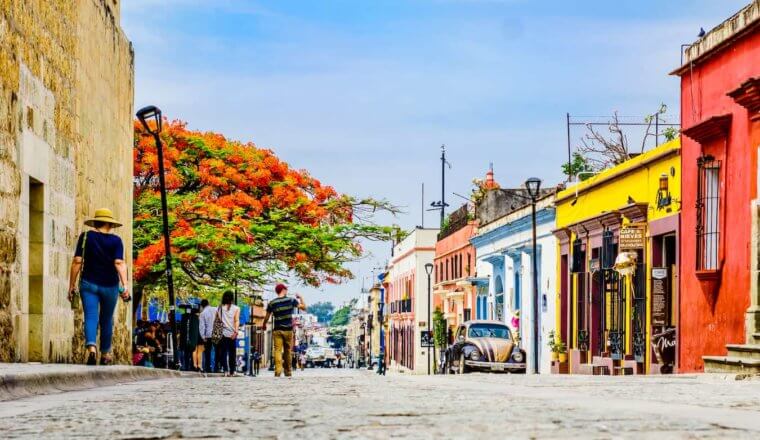
GET YOUR FREE TRAVEL STARTER KIT
Enter your email and get planning cheatsheets including a step by step checklist, packing list, tips cheat sheet, and more so you can plan like a pro!

Home > News > The 22 Most Dangerous Tourist Destinations in the World
The 22 Most Dangerous Tourist Destinations in the World

The world is full of fascinating places that attract tourists in their droves. There is a lot of variety in these destinations, from tropical paradises to mountainous peaks, and they attract people ranging from sunseekers to thrill-seekers.
However, as incredible as some locations can be, they can also be very dangerous . The danger can be from different sources, from natural hazards to high crime levels .
While some of these locations aren’t the worst places to visit, there are underlying reasons why you should proceed with care. Here’s a look at some of the most dangerous tourist destinations on the planet.
Top 22 Most Dangerous Vacation Spots on Earth
Death valley, california.
Main danger: car accidents
Death Valley is the hottest place on the planet; temperatures at Furnace Creek have reached 134 °F. The extreme temperatures have taken the lives of many people who’ve been careless enough to stray away from the roads. If the heat wasn’t enough, rattlesnakes are another hazard.
Regardless, Death Valley is still a popular tourist attraction, partly because of how dangerous it is. If you do find yourself in Death Valley, make sure you stick to the roads and take plenty of water with you to avoid dehydration and heatstroke.
The Danakil Desert, Ethiopia
Main danger: heat exhaustion
The Danakil Desert, located on the border between Ethiopia and Eritrea is also dangerous because of the sheer heat. Although it is not quite as hot as Death Valley, the Danakil Desert will still reach around 131 °F.

The high temperatures are partly because of the geothermal activity in the region, which are also responsible for lakes of acid and poisonous gases. The desert is a popular tourist destination, but visitors are recommended to stick with guides at all times.
Mount Everest, Nepal
Main danger: hypoxia
Mount Everest tends to attract an extreme variety of tourists. That is, those who want to climb to the top of the world’s tallest peak. Every year around 1,200 intrepid explorers will set off from the foot of the mountain. Unfortunately, only around half make it to the top, and some will die trying.
As you scale the mountain, the conditions become increasingly severe. Low oxygen levels, freezing temperatures, and fatal falls are just a few of the things people here must be careful of. It’s estimated that more than 200 bodies still remain on the mountain, frozen where they perished.
Acapulco, Mexico
Main danger: criminal activity
Acapulco, Mexico, is a city that attracts sun-seekers in their droves, mostly from elsewhere in Mexico, but the city also receives some international visitors. Visitors to this famous beach resort get to make the most of stunning beaches with clear blue waters.
Acapulco used to be a major destination for tourists from the United States, but this is no longer the case. Since its heyday, the city has seen an explosion in crime, including homicide, causing overseas visitors to choose other destinations instead. If you want to visit the city, it’s wise to be very careful during your stay.
Kingston, Jamaica
Jamaica is a tropical paradise and home to the legendary Bob Marley. The country is also steeped in history, having been under Spanish and British colonial rule, and is the birthplace of the Rastafarian religion.
People from all over the world flock to Jamaica’s pristine beaches and soak up the vibrant yet laid back culture. However, as is the case with many tropical paradises, things are not so paradisical below the surface. Poverty and crime rates are high, especially in the country’s capital, Kingston. Visitors here are advised not to stray away from the safety of the resorts.
Rio de Janeiro, Brazil
Rio de Janeiro is one of the world’s premier tourist attractions. The wonderful beaches and stunning backdrop make for a vacation that you will not forget. As if the natural beauty wasn’t enough, there’s also the lively culture that makes the city irresistible for so many people.
However, Brazil is a developing country that has high unemployment rates. People from all over the country flock to cities like Rio in the hope of finding work, and many are not successful. The result is high rates of crime, and visitors are advised to be very careful.
Cliffs of Moher, Ireland
Main danger: falling off cliffs
Ireland’s natural beauty, rich history, and warm welcome help make the country a popular tourist destination. Modern cities like Dublin are rich in culture and arts, with plenty to do for visitors. However, many people come for the country’s rustic beauty rather than its rural attractions.
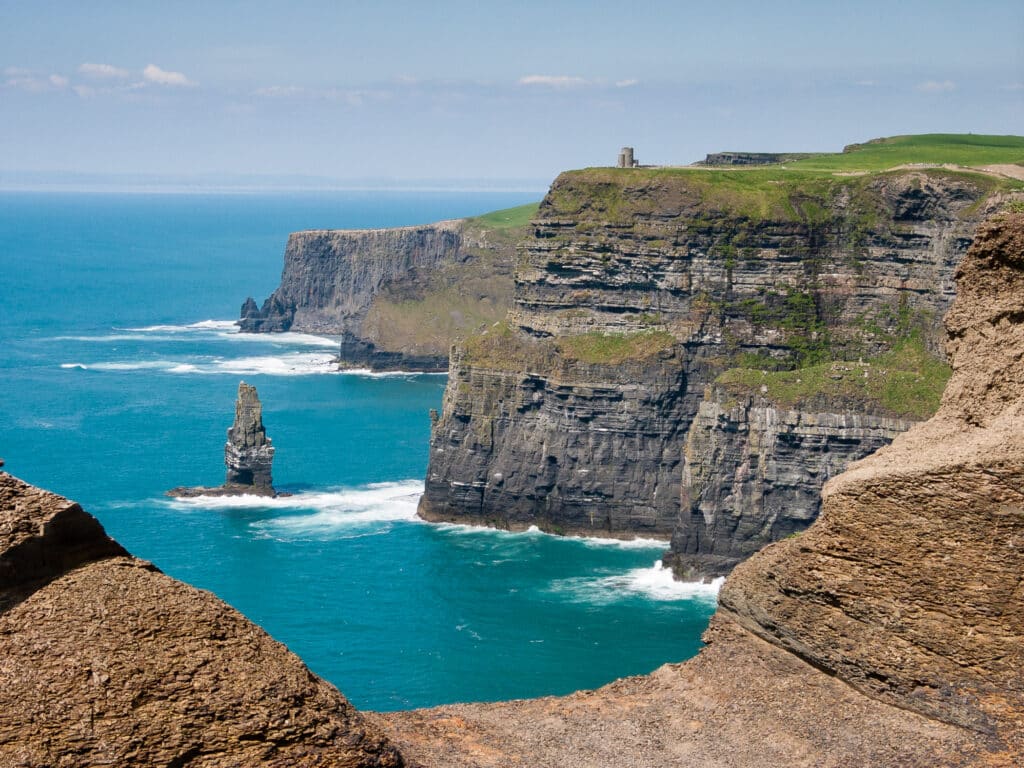
One such attraction is the stunning cliffs of Moher, located on the island’s rugged west coast. The sights are spectacular, with views of the coastline and over the Atlantic ocean. However, as beautiful as the sheer drops are, they are also very dangerous. Many people have fallen to their death after getting too close to the edge to get a better look.
Mount Washington, USA
Main danger: hypothermia
Many more adventurous tourists are attracted to Mount Washington in British Columbia, USA. The mountain has ski resorts, while it also attracts hikers and climbers who want to get closer to nature and take in the stunning views.
While mountain exploring is typically risky, Mount Washington has a particular hazard that people need to be careful about: high winds. The winds here can reach as high as 203 mph, enough to blow people away to their deaths. Visitors also need to be careful of the temperatures, reaching -40 °F.
For good reason, Mount Washington is reputed to be the world’s most deadly little mountain. It’s the highest peak in the northeastern United States and is prone to dynamic weather fluctuations year round.
Although the mountain is just a little over 6000 feet elevation, it receives severe temperature changes and strong winds that exacerbate the dips.
The majority of accidents on Mount Washington include hypothermia episodes and visibility problems.
Half Dome, Yosemite National Park, California
It doesn’t get better than California’s Yosemite National Park for people who like the outdoors. Vast woodlands, stunning waterfalls, and scenic mountains make up just a few of the reasons to come here. Unfortunately, as beautiful as mother nature can be, she can also be very, very dangerous.
Although bear attacks are rare, it’s the mountains that are more likely to lead to untimely deaths. The Half Dome peak is one of the most dangerous of all. People have fallen to their death trying to hike to the top, while climbers are also at increased risk of lightning strikes.
New Smyrna Beach, Florida
Main danger: shark attacks
Florida’s New Smyrna Beach is a surfer’s paradise. The perfect waves attract surfers from all over the world, helped by Florida’s warm climate. Unfortunately, however, danger is lurking just beneath the waves. The waters off New Smyrna Beach are teeming with sharks.
Florida is known as the world’s shark attack capital, and New Smyrna Beach is one of the most dangerous Florida locations of all. It’s also well known that sharks and surfers tend not to make a good combination. It’s not that the shark thinks people are on the menu, but they mistake surfers for their usual prey: seals. Regardless of the reason behind an attack, the results are unpleasant and potentially life-threatening.
Bangkok, Thailand
Thailand is home to many of the world’s most incredible tropical beaches, attracting millions of tourists each year. However, beaches are not the only attraction; the country offers legendary nightlife, a famously warm welcome, rich history, and shopping galore.
Beaches aside, one of Thailand’s many attractions is its famous capital city: Bangkok. The city has so much to offer to people from all walks of life, whether you’re looking to see the sights, go shopping, or just party. However, crime is rife in the city, with commonplace scams and robberies against tourists. A corrupt and disinterested police force does not help the situation.
Pripyat, Ukraine
Main danger: decaying structures and potential radiation
Pripyat used to be a normal Russian Town (now Ukrainian). There wasn’t much to attract visitors, and the town and surrounding areas were little known. However, that would all change in 1986 when an accident took place that shocked the world.
In 1986, a nuclear meltdown occurred at the nearby Chernobyl nuclear power plant. Such was the high levels of radiation that inhabitants of the time had no choice but to leave, and it’s been unoccupied since. Despite the radiation levels still being dangerous, many people are drawn to the city to get a glimpse of the past.
Hawaii National Park, Hawaii
Main danger: poisonous gases
In addition to beaches that many people dream about visiting, Hawaii is also known for its active volcano activity. The small group of islands sits directly over a fault line, making it one of the most active volcanic regions on the planet. The activity makes for a fascinating site for tourists, while it also presents plenty of danger.
Not only is lava extremely hot, which presents obvious dangers, but poisonous gases and ash fill the air in some areas. The volcanoes and surrounding areas have taken the lives of unwitting tourists and other people who didn’t take sufficient care.
Bikini Atoll, The Marshall Islands
Main danger: high radiation levels
Bikini Atoll is one of the most stunningly beautiful locations on the planet. Pristine beaches and clear blue waters appear irresistible and would otherwise attract visitors in their droves to get a taste of paradise. Except, Bikini Atoll is not quite as paradisiacal as it might first seem.
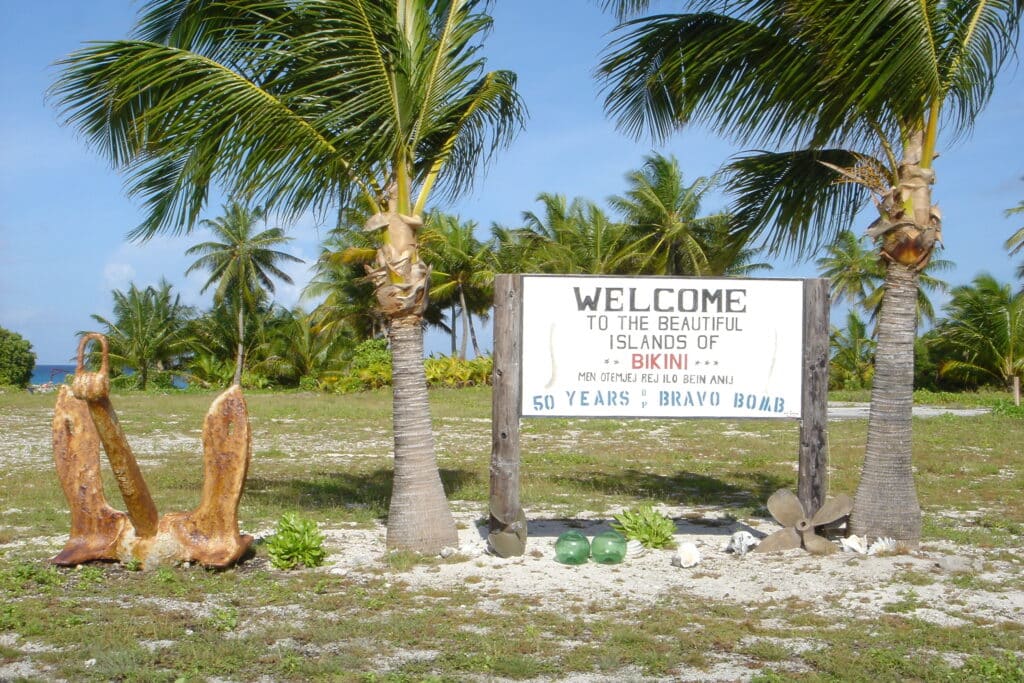
Bikini Atoll has been the location of numerous explosive nuclear tests, which devastated wildlife in the area. Not only that, but the tests mean that even 60 years later, the site has dangerously high levels of radiation. However, people are still attracted to the Atoll, partly because of the recovering reefs.
Snake Island, Brazil
Main danger: venomous creatures
If you were to step foot on snake island, just off the coast of Brazil, you would be in one of the world’s most dangerous locations. You can probably guess the reason why going by the island’s name. Yes, the island has lots of snakes, deadly snakes at that.
The island is home to thousands of golden lancehead vipers, one of the most venomous snake species on the planet. The island is so dangerous that the Brazilian have closed it to the public, with few people allowed to set foot there.
Oymyakon, Russia
Main danger: extreme cold
One of the coldest inhabited places on earth is this little village in Siberia. Due to the weather extremes, this is one of the most deadly locations on earth. The lowest temperature ever recorded was below –60 degrees Celsius.
Darvaza Gas Crater, Turkmenistan
The crater is a natural gas field that has been burning since 1971 and is referred to as the “Gates of Hell.”
Massive heat, boiling muck, and gases are released from the football-sized hole. Additionally, the crater’s access road is a rather difficult one. Even a minor error might be deadly.
La Oroya, Peru
Main danger: lead levels
This Peruvian city is well-known for being among the most deadly locations on earth due to its extreme pollution.
Arsenic, cadmium, and lead are among the many contaminants present in La Oroya, a mining town. These contaminants are present at far greater levels than the WHO deems safe.
The blood lead levels of the city’s population have been discovered to be frighteningly high, and many are reportedly suffering from respiratory problems.
Fraser Island, Australia
Despite the fact that Australia is home to many stunning beaches, you should absolutely stay away from this one. On Fraser Island, one of the deadliest beaches may be found.
Wild Dingo canines that are hostile and poisonous spiders live on the island. Not only that, but the seas close to the island are home to deadly marine species, such as sharks and poisonous jellyfish.
If you do decide to stop there, use great care and avoid the dogs.
Naica Crystal Cave, Mexico
Main danger: lava flow
The largest crystals in the world, mostly formed of gypsum, are found in the caverns. If you could avoid it, this is not the location you need to be going to. It’s not one of the worst places to visit from a beauty standpoint, but it definitely ranks up there from a safety standpoint.
Due to the lava flowing under the surface, the cave is quite warm. In addition, the humidity is quite high, which might harm the lungs.
You are not permitted to enter the cave, yet a few individuals have managed to do so.
Norilsk, Russia
Main danger: toxic air
Norilsk’s metallurgical complex is the reason it is one of the world’s most polluted cities.
Nickel smelting has caused the city to be quite filthy. As a consequence, the whole city is covered in smog and acid rain.
Since there are so many heavy metals in the city, even the soil may now be mined for metals.
Vanuatu, Pacific Ocean
Main danger: natural catastrophes
Natural catastrophes that affect the nation include strong cyclones, volcanic eruptions, and earthquakes.
The lives of the island’s inhabitants are in very high danger due to the island’s vulnerability to natural calamities.
How to Stay Safe in Dangerous Tourist Destinations
Keeping yourself and loved ones safe under any circumstances is important, and you need all the best tools at your disposal to make this process easier.
At Armormax we have tons of heavy-duty products to make vehicles safer and more secure. We also have products that are effective safeguards for individuals, like our B6 bulletproof backpack inserts .
Wherever your travels take you, stay as safe as possible with the most protective equipment available.
Armormax Team 205 articles
Frequently Asked Questions
What countries should americans not visit.
There are several countries that the United States government discourages its citizens to travel to, including notorious crime havens like Afghanistan, Venezuela, Iraq, Iran, and North Korea. Anyone traveling to these nations needs to be cognizant and aware.
Is Egypt a safe country to visit?
Although Egypt is a relatively safe tourist destination, there is still a chance that something negative could happen if you're not 100% careful. The U.S. government recommends tourists to Egypt exhibit caution due to the embassy's limited ability to aid in the case of an attack.
Which country's visa is the most powerful?
Japan is known for holding an extremely powerful visa. This visa allows entry to 193 countries around the world.
What is the most dangerous street in the world?
North Yungas Road in Bolivia is notorious for being the most dangerous road in South America, if not the world. It literally translates to "Death Road" since this narrow road traverses the Cordillera Oriental Mountains.
What is a golden passport?
Wealthy foreigners may get citizenship or residence by investing a particular sum of money in a nation via "golden passports," also known as citizenship by investment (CBI) schemes. There are schemes for immigrant investors in more than a dozen nations, including the US.
Related Articles

Our Top Street Legal Tanks
Posted by Armormax Team

I Want Run Flat Tires for My Car
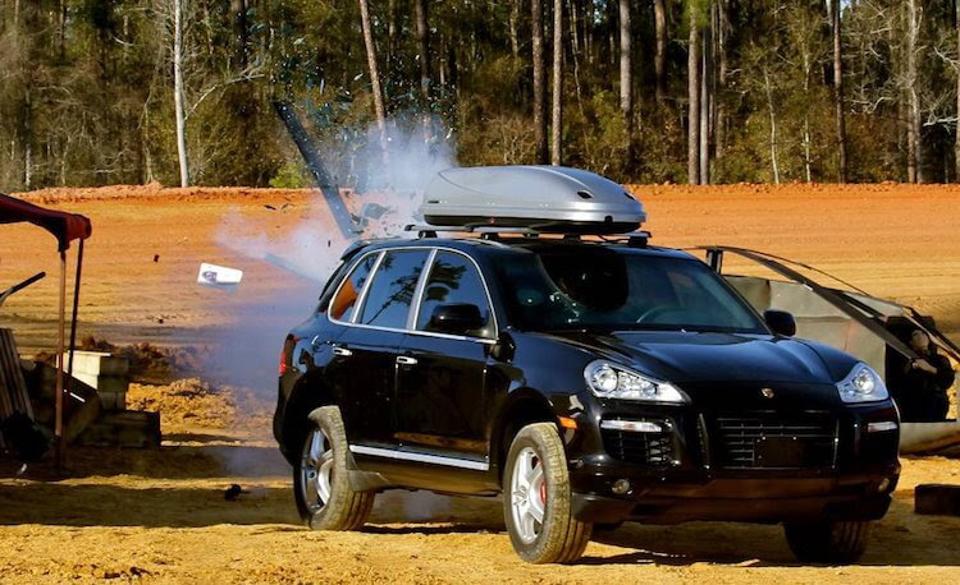
What is a Bomb Proof Car (and Can You Buy One?)

Beautiful Armored Cars You Should See
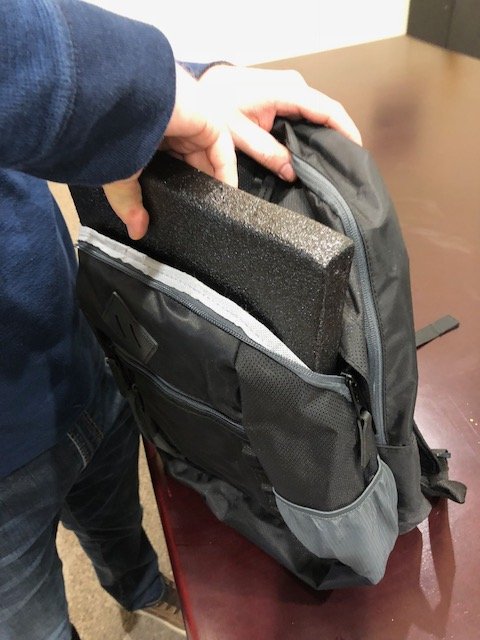
B6 Bulletproof Backpack Now Available
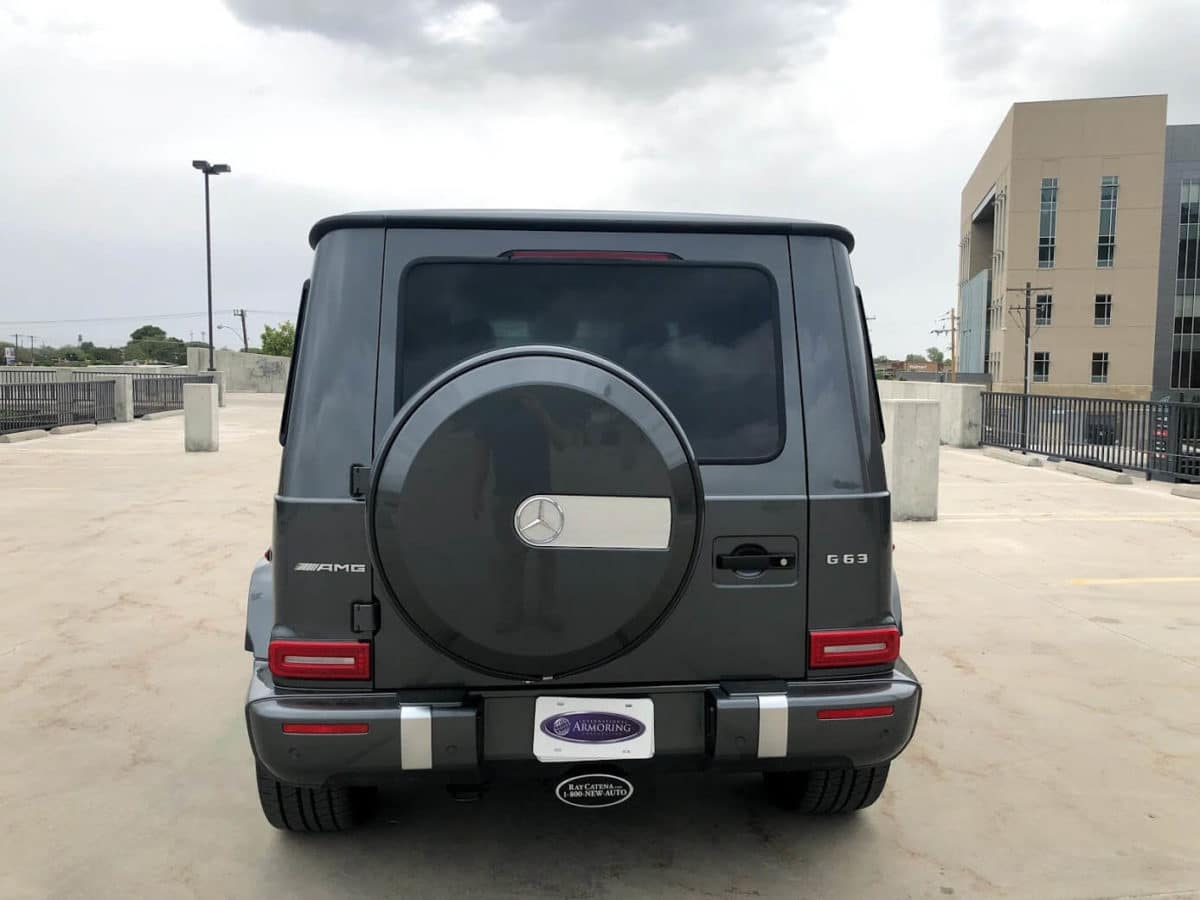
5 Tech Add-Ons Your Armored Car Needs

Guide to the Used Hybrid Market: Smooth Buying Experience Tips

Top Ten Movies with Cool Car Chases (Including Bulletproof Ones)

IMAGES
COMMENTS
A Dangerous Business Travel Blog. Hi! I'm Amanda, a former journalist who's now an award-winning travel blogger. I'm on a mission to see as much of the world as possible, in order to show YOU how you can fit more travel and adventure into the lifestyle you already have. MEET ME.
My name is Amanda, and I'm a former journalist-turned-blogger from Ohio who's been writing about travel since 2010. I seek to inspire people to be curious about the world and find ways to fit more travel into the lifestyle they already have - and I only share tips based on my personal experiences and places I've actually traveled!
Destinations. Listed below are all the countries/regions I have traveled to and written about on this site. You'll see each country represented on the map below (which you can click on!), or you can scroll down and click on an image to be taken to a page with more info about that destination and links to everything I've written about it.
So far in 2024, the State Department made changes to the existing Level 4 advisories for Myanmar, Iran and Gaza, and moved Niger and Lebanon off of the Level 4 list. Places With a Level 4 Travel ...
8. Drove the Sani Pass in Lesotho. Located in the western end of KwaZulu-Natal province of South Africa, Sani is a mountain pass connecting Underberg in South Africa with Mokhotlong in Lesotho. The hairpinned pass − named one of the most dangerous in the world − starts at an altitude of 1,544m and climbs to 2,876m.
"It's a dangerous business, going out your front door." 6 years ago, two 20 year olds decided to travel around Europe with their friends. They hit a total of 10 cities in 7 different countries, took thousands of pictures, and only missed two trains. Beyond all of the personal growth and gained perspective, they developed a love of adventure and ...
This weeks travel blogging tips article features one of my favourite travel bloggers: Amanda Williams, author of travel blog A Dangerous Business.. Amanda and I share a passion for New Zealand, and she has already provided me with a wonderfully comprehensive post on what to do when in the land of the long white cloud, a post which proved to be immensely valuable to me when I came out here.
Advise for Travel to Dangerous Places: Traveling to 'danger zones' clearly has both its rewards and risks. For visitors, there are the obvious perils involved, such as terrorist attacks, kidnapping and other crimes; but with some safety precaution and advanced planning, you might be returning home with a gratifying travel experience.
The most dangerous country when it comes to natural disaster risk and readiness response is the Philippines, according to the annual World Risk Index. The Philippines garnered a score of 46.8. The second and third most dangerous countries are India and Indonesia, followed by Mexico and China.
Amanda Williams is the award-winning blogger behind A Dangerous Business Travel Blog. She has traveled to more than 60 countries on 6 continents from her home base in Ohio, specializing in experiential and thoughtful travel through the US, Europe, and rest of the world. Amanda only shares tips based on her personal experiences and places she's ...
It's still not safe to travel, according to experts. There are still threats, including an uptick in Covid cases, various geopolitical dustups or all-out wars like this weekend's eruption of armed conflict in Israel. But the biggest threat is — well, you. "The mistake travelers make is believing the biggest security risk is some ...
Pages: 1 2 3. adventure travel Americas bizarre Caribbean Colombia Mexico Middle East scary South America. Angela Davis. Originally from Denver and now living in NYC, Angie has been writing since she was small. She lives in the Flatiron district with her partner Tanya and their mutt Sparky (always adopt!)
Iceland Road Trip Printable. $3.99. A Dangerous Business is an award-winning travel blog aimed to help people plan their dream trips all around the world. I'm here to help with printable itineraries and checklists to help you make that next bucket list adventure a reality!
2. Death Road, Bolivia. Bolivia's Yungas Road (one of the most dangerous in the world ), colloquially known as Death Road, offers a spine-tingling adventure through the picturesque Andes. Yet, beneath its scenic beauty lies an ominous peril. North Yungas Road, Bolivia.
A Dangerous Business Travel Blog contains posts about travel planning, packing, destinations, and inspiration. Everything is sprinkled with high-quality photos to keep readers engaged and enthused. The centerpiece of A Dangerous Business Travel Blog is "The 10-Day Adventure Project." Put simply, it's a collection of ready-to-use, self ...
In 2013, I won the Ottawa Tourism Travel Writing Award for a piece I wrote about staying at the Ottawa Jail Hostel. In 2018, A Dangerous Business was awarded a Silver Award for Best Travel Blog in the 2017-18 Lowell Thomas Travel Journalism Competition, which is hosted annually by the Society of American Travel Writers (SATW).
A Dangerous Business Amanda of the 'Dangerous Business' blog. The blogger behind A Dangerous Business is Amanda, who decided in high school that she wanted to travel. An avid Lord of the Rings fan, she was determined to visit New Zealand and spent two weeks there in 2005. She has since been to over 50 countries on six continents.
In terms of safety, Cancún is pretty safe for travelers. While the city does experience some violence, it's mostly directed elsewhere, other than at tourists. For most travelers, the most dangerous aspects of Cancún might be hangovers, sunburns, and drinking the tap water.
The Business of Blogging: What I've Learned After 10 Years. 10 years and more than 10 million readers. Those are the milestones A Dangerous Business celebrated in 2020. Wow!
The Danakil Desert, Ethiopia. Main danger: heat exhaustion. The Danakil Desert, located on the border between Ethiopia and Eritrea is also dangerous because of the sheer heat. Although it is not quite as hot as Death Valley, the Danakil Desert will still reach around 131 °F.
The Perfect 10-Day London and Paris Itinerary for Your Dream Europe Trip. A Perfect 10-Day Itinerary for Norway in Winter. A 10-Day Itinerary for Iceland in Winter (Without Renting a Car) X (Twitter) Tips and detailed itineraries for some of my favorite road trips, both US road trips and road trips abroad.
But these places generally include non-tourist destinations that even the most intrepid travelers would probably avoid right now. According to the Global Peace Index's 2023 list of the 10 most ...